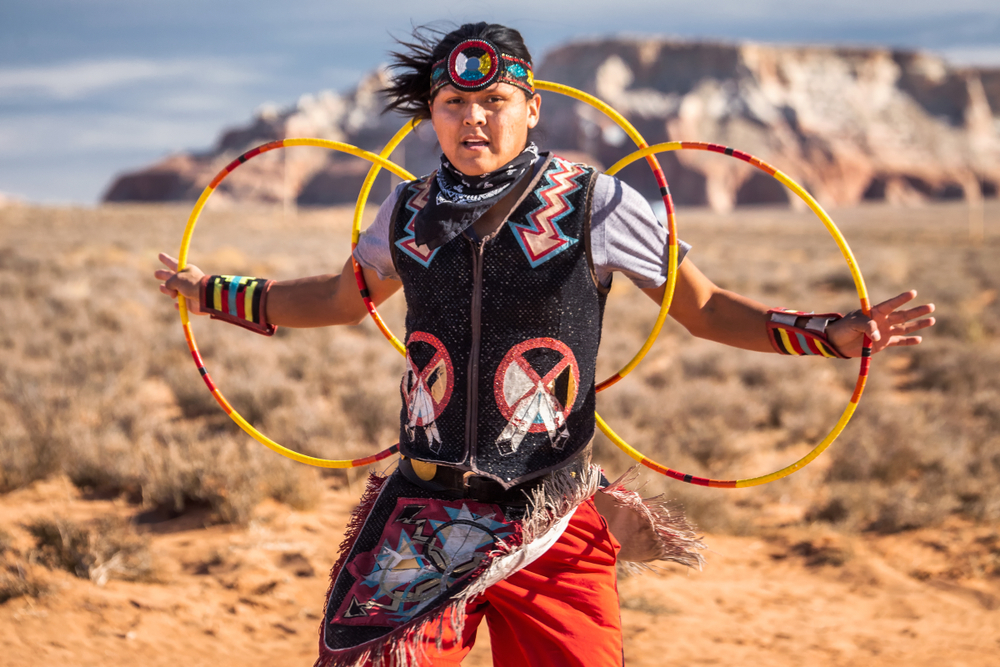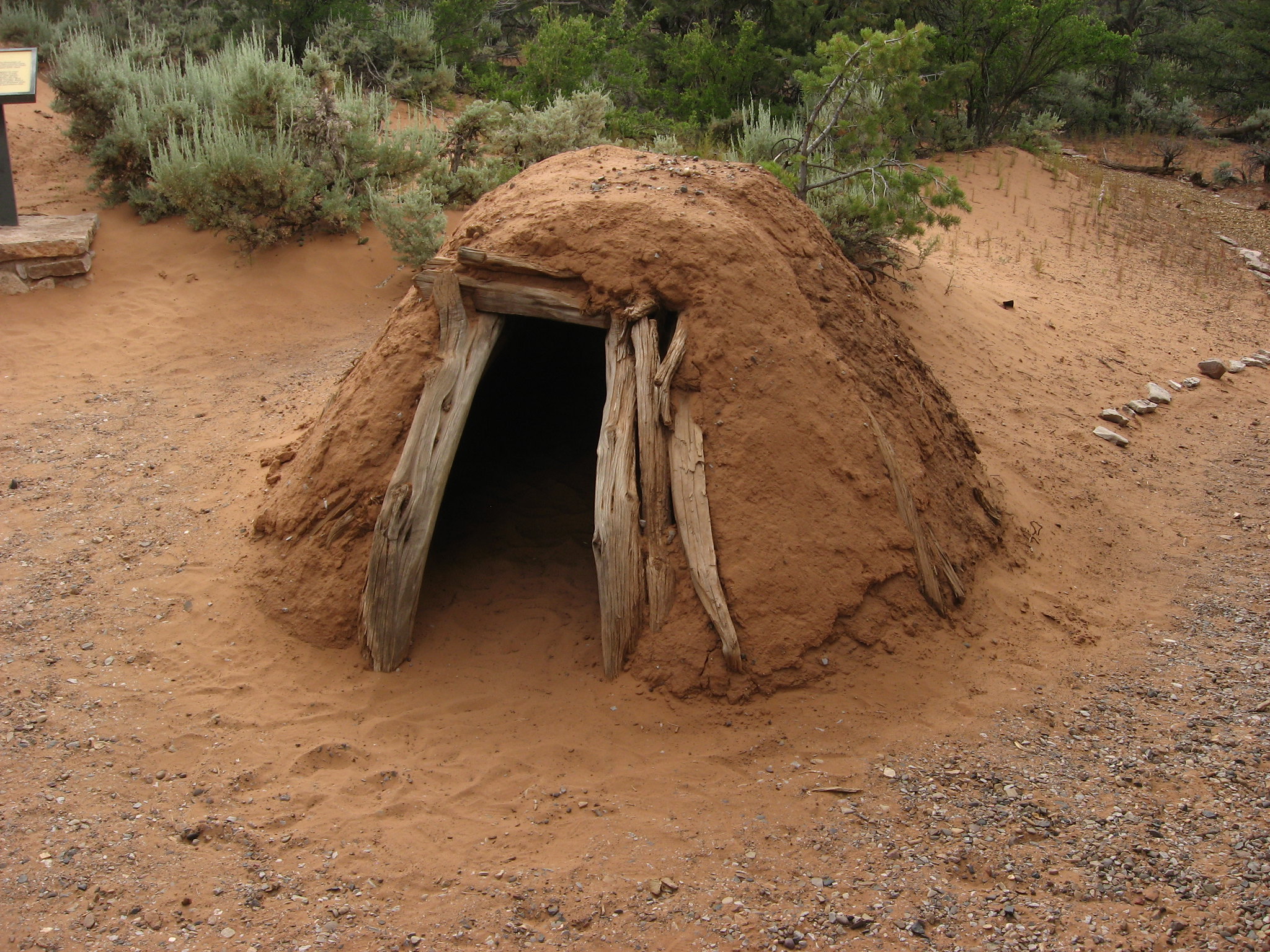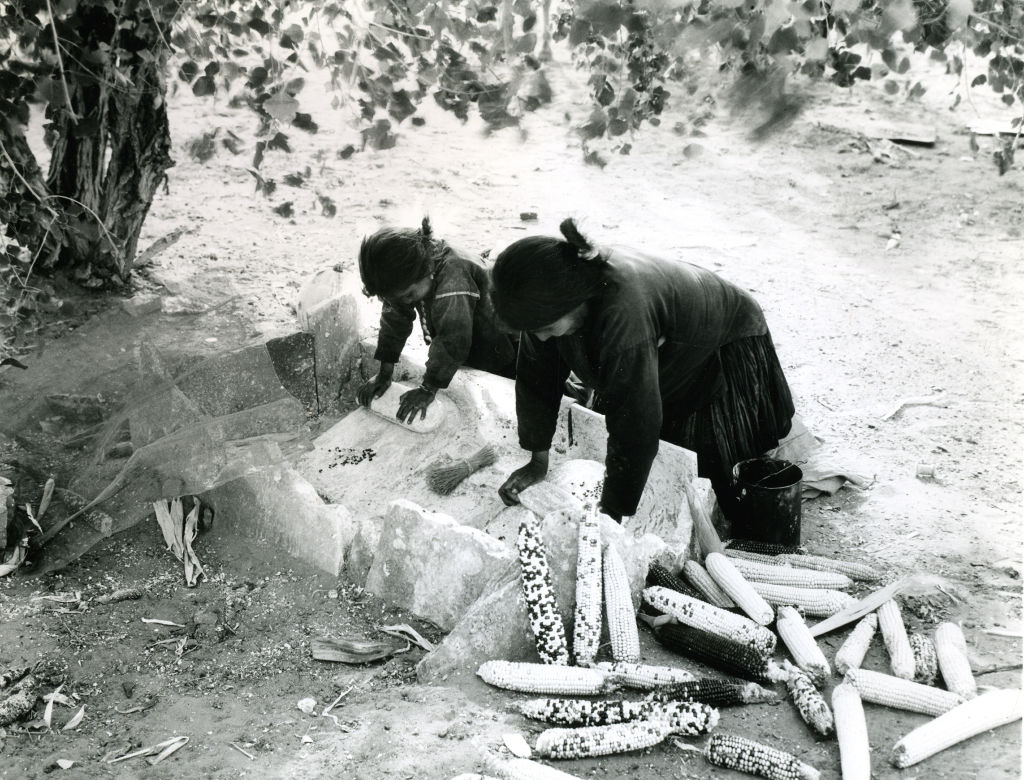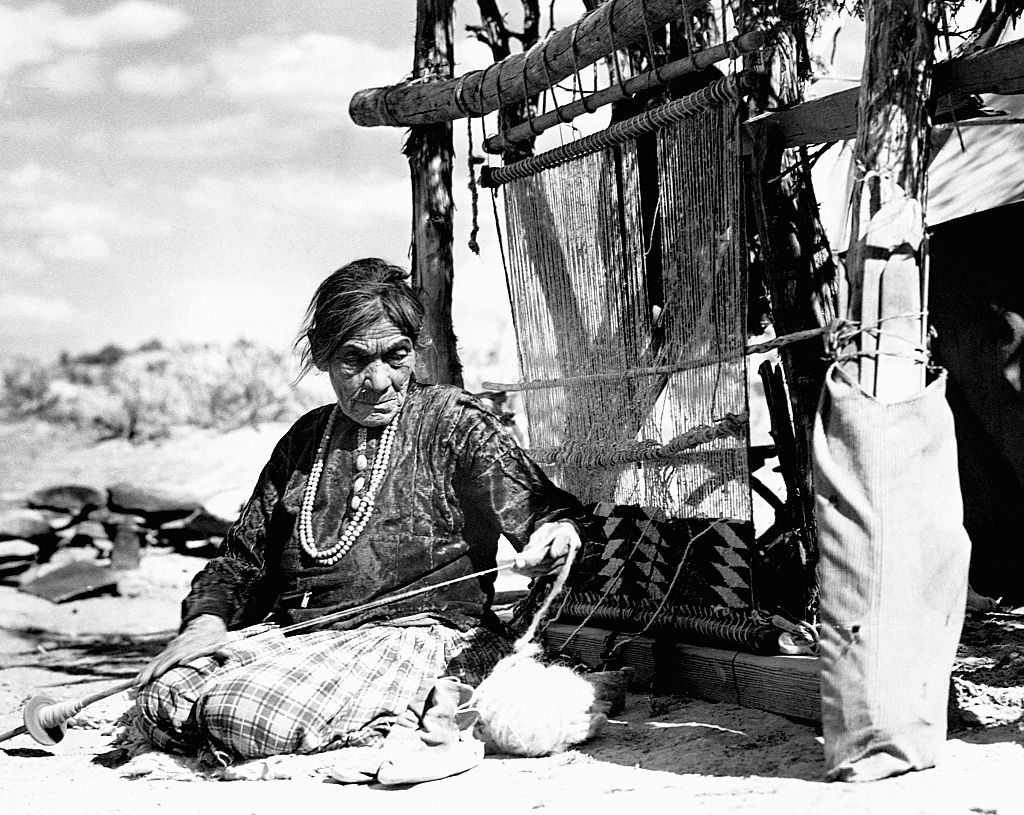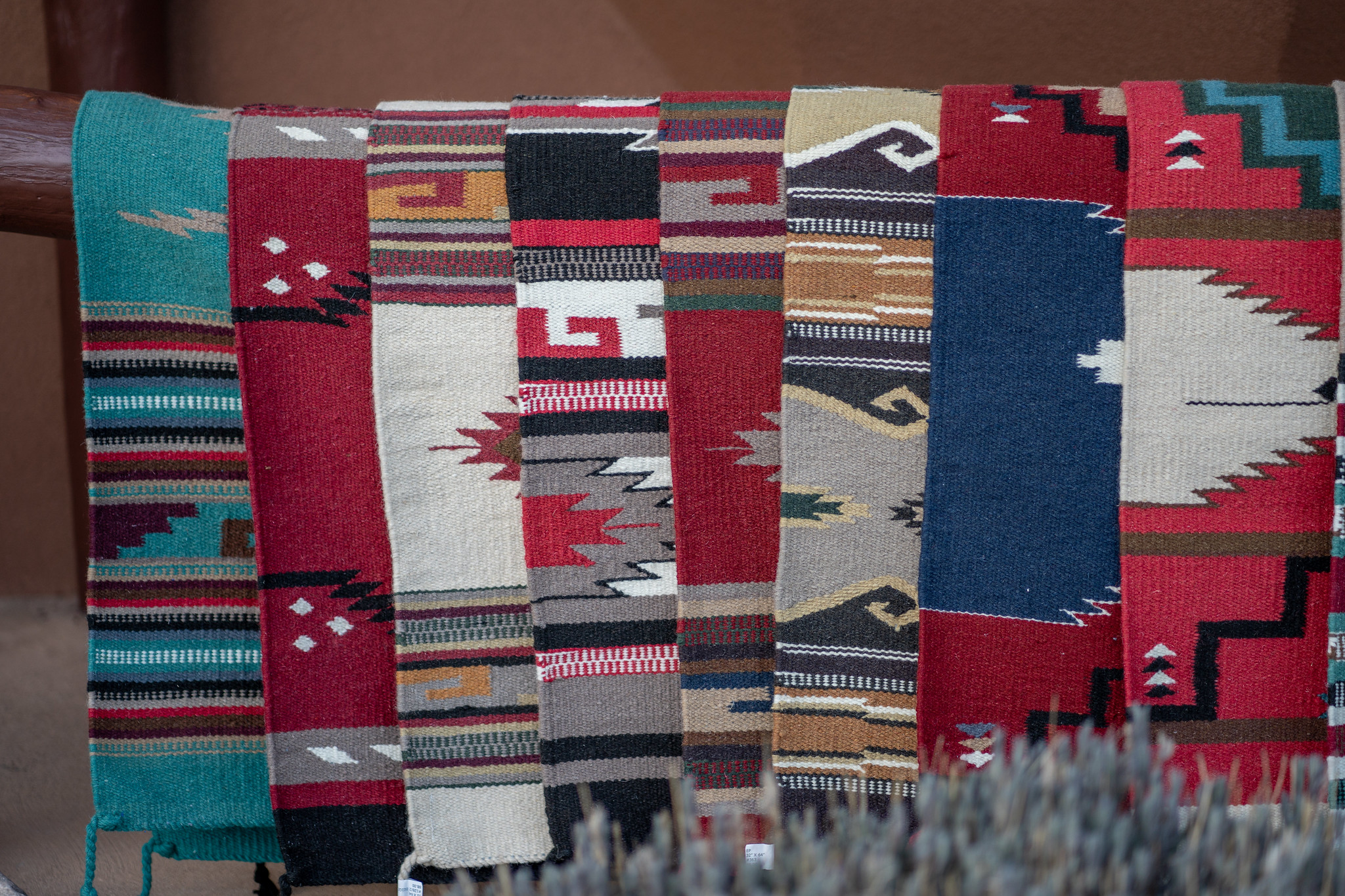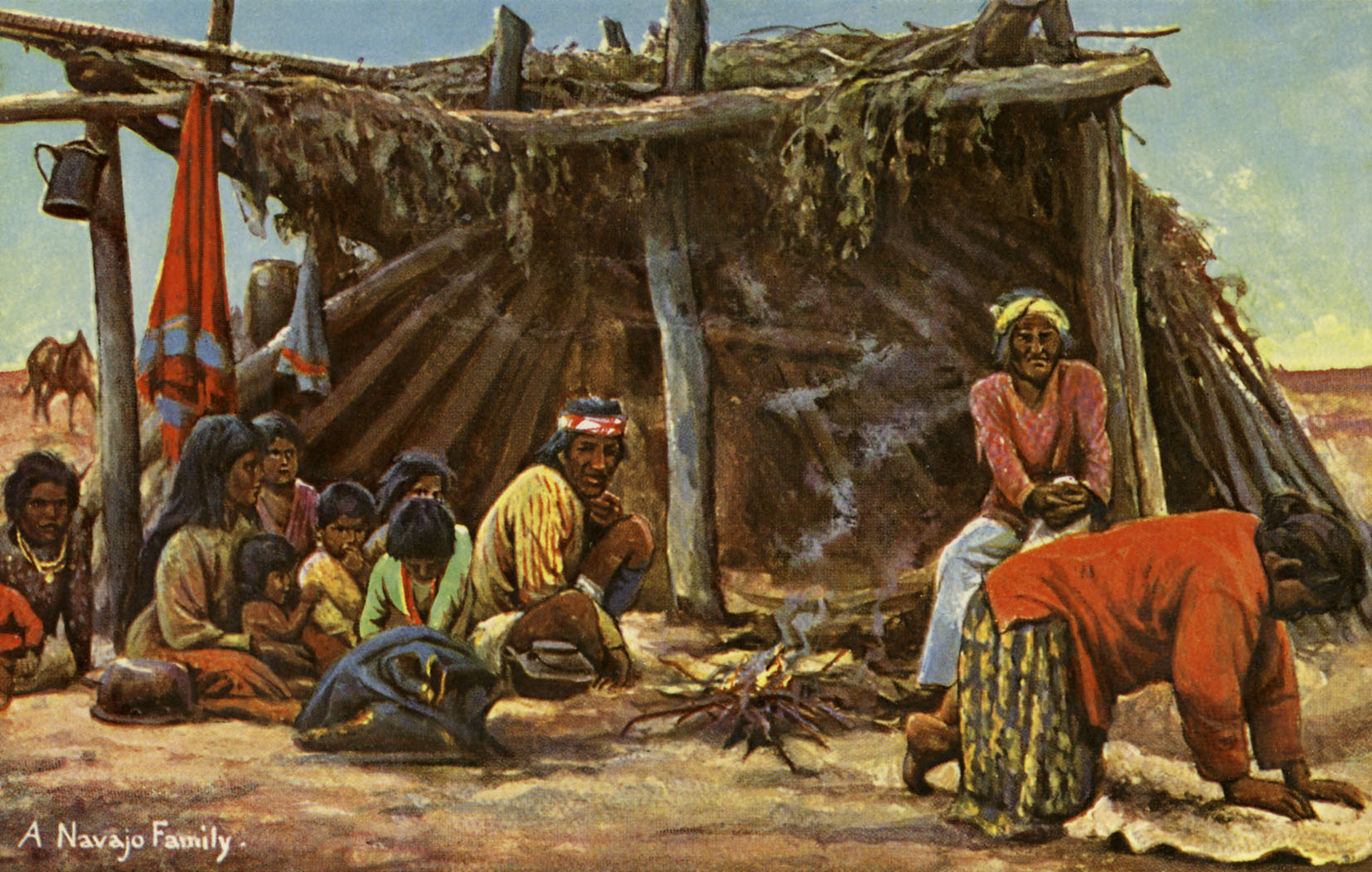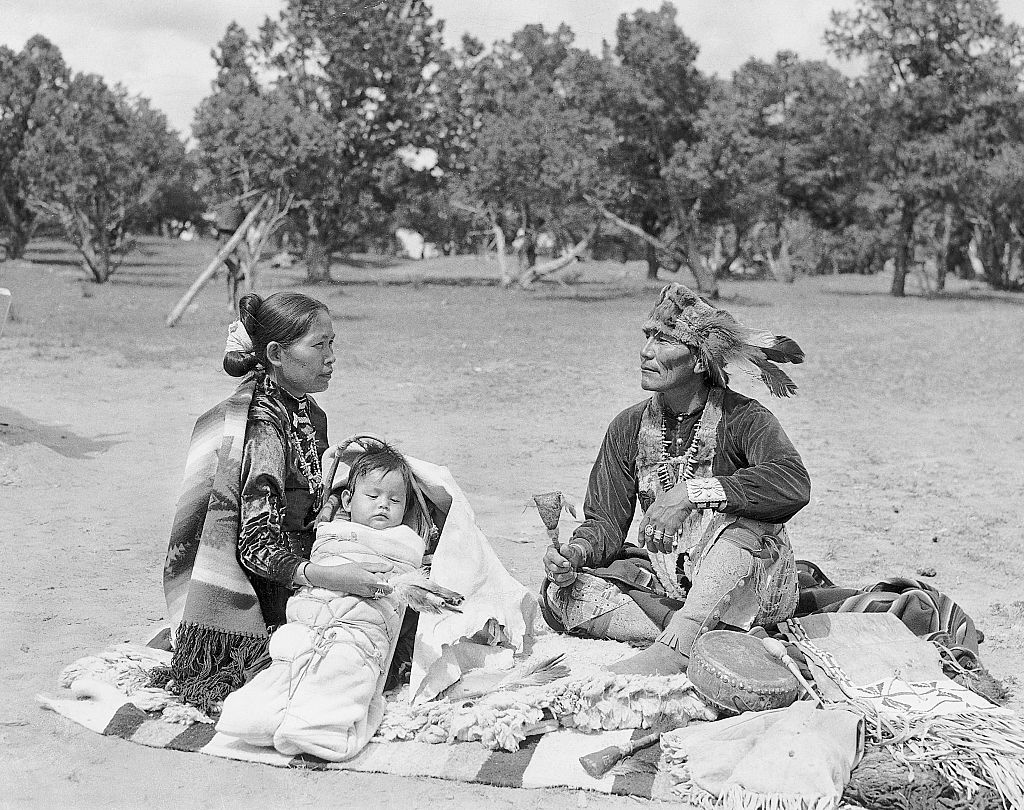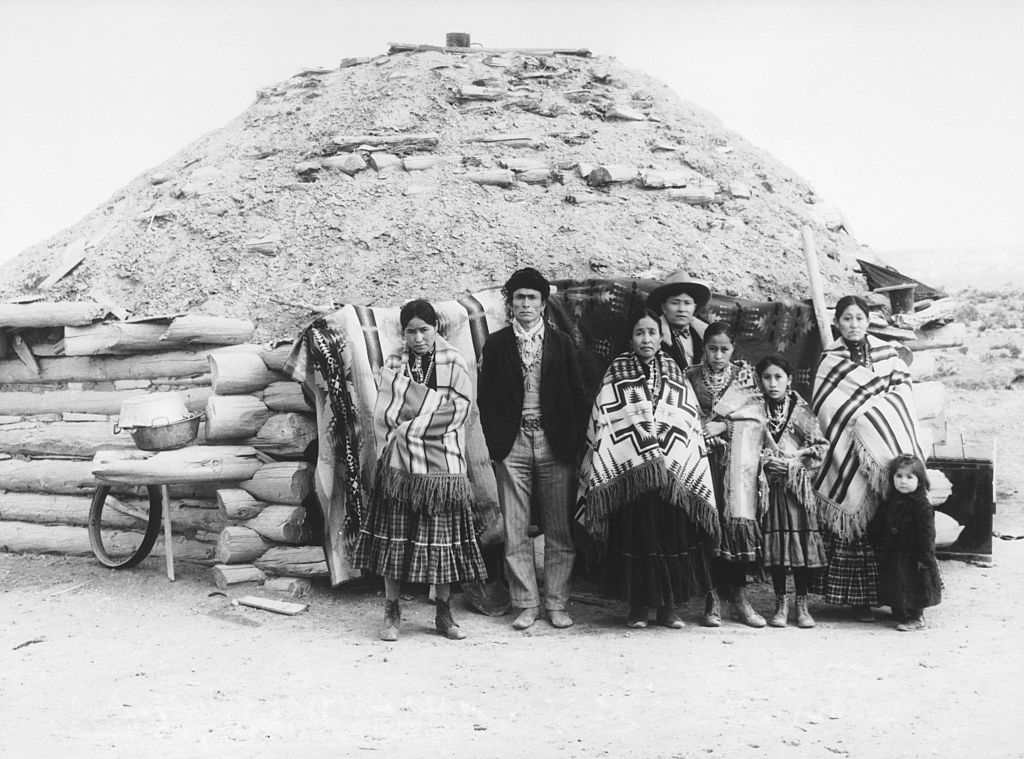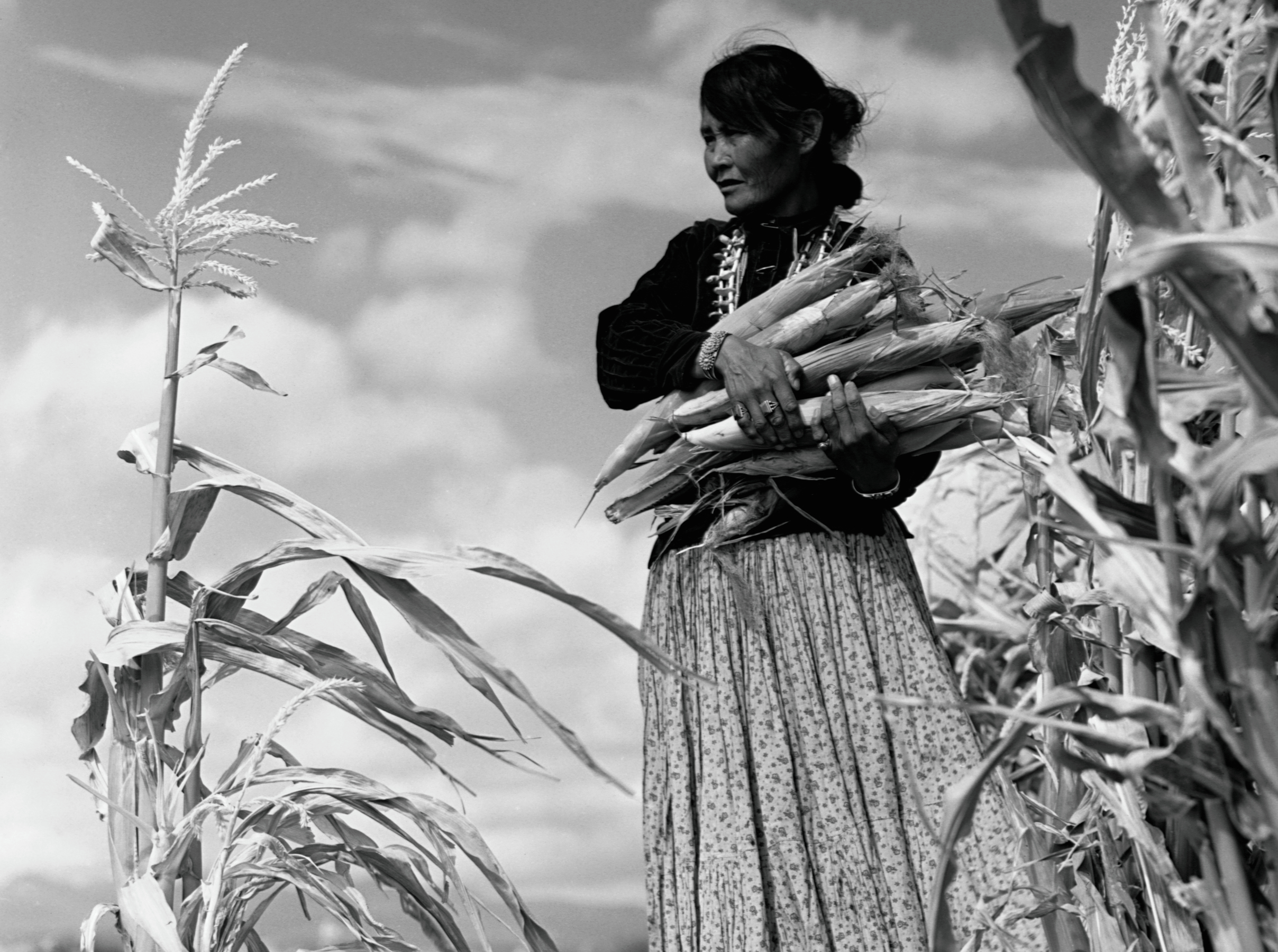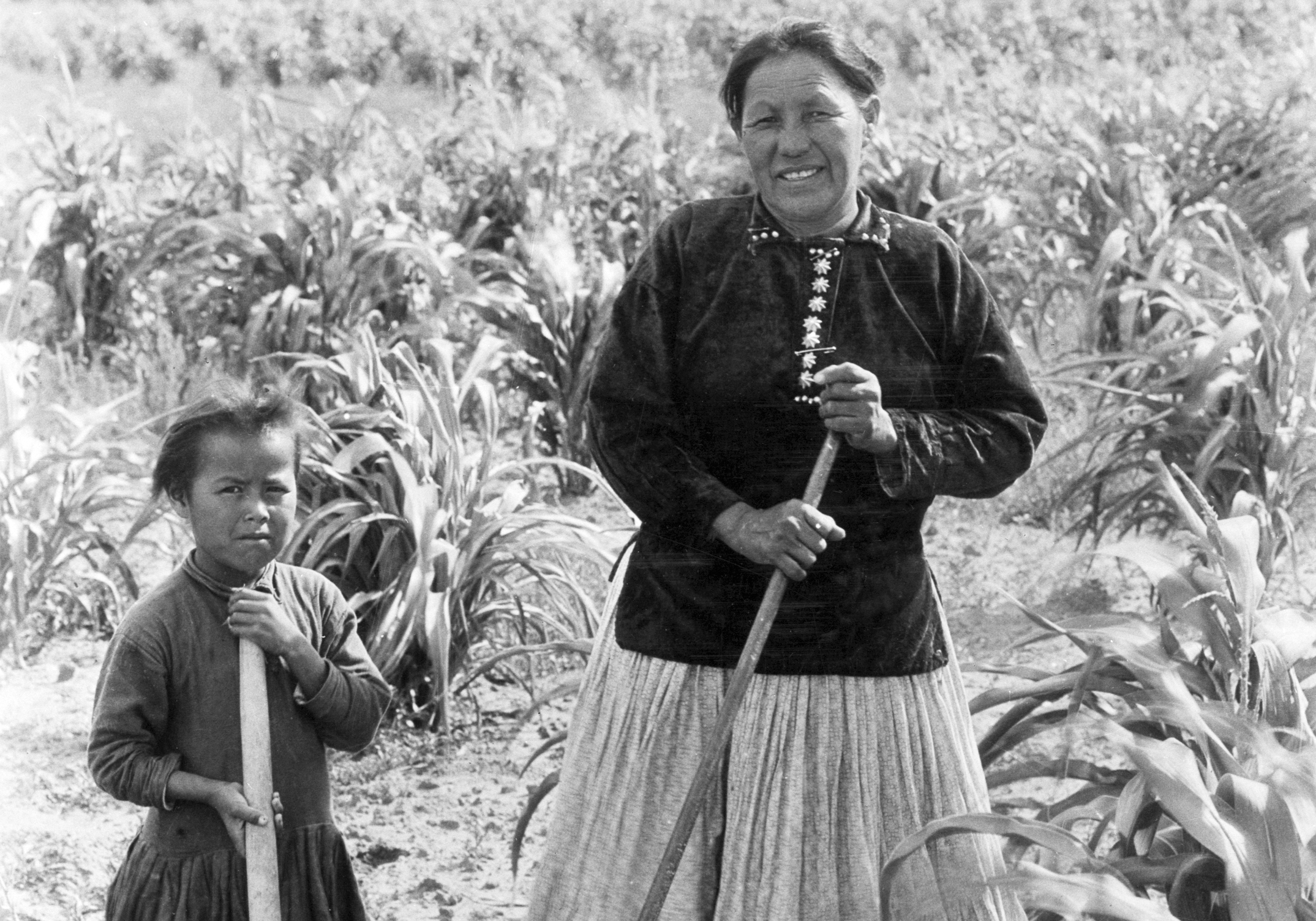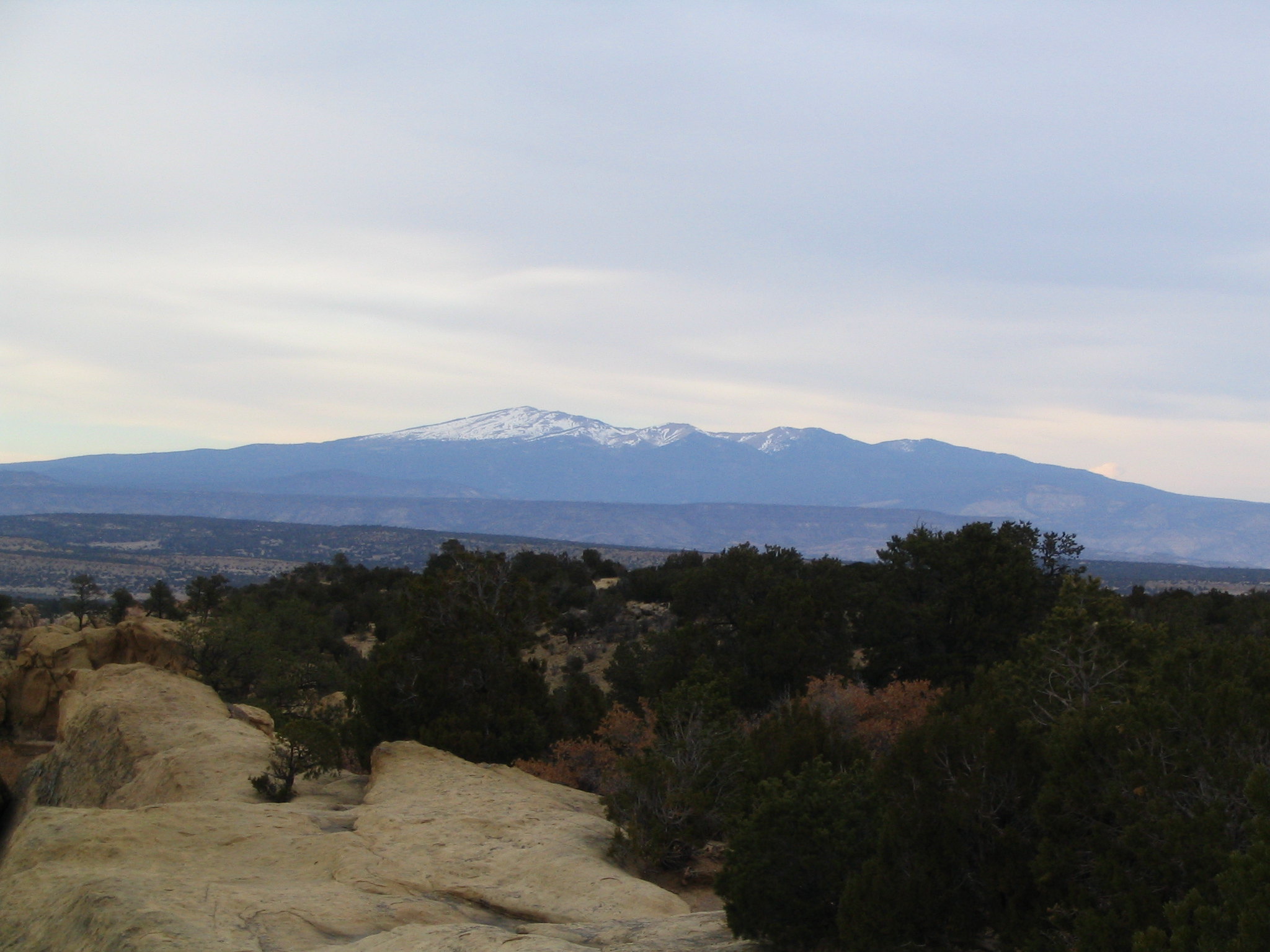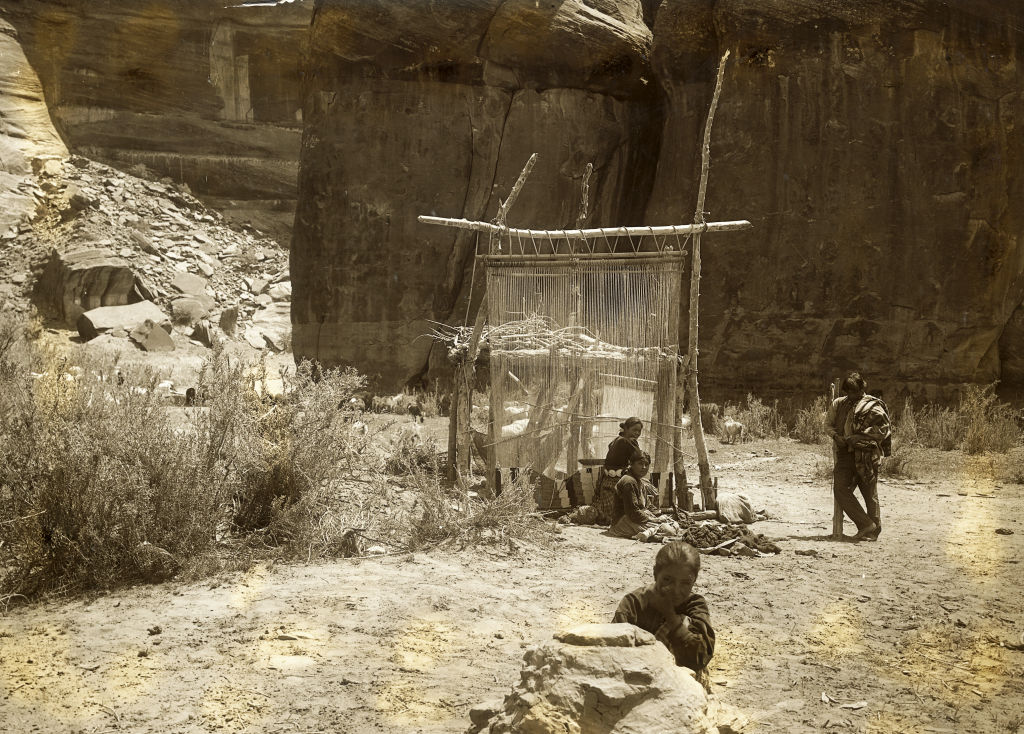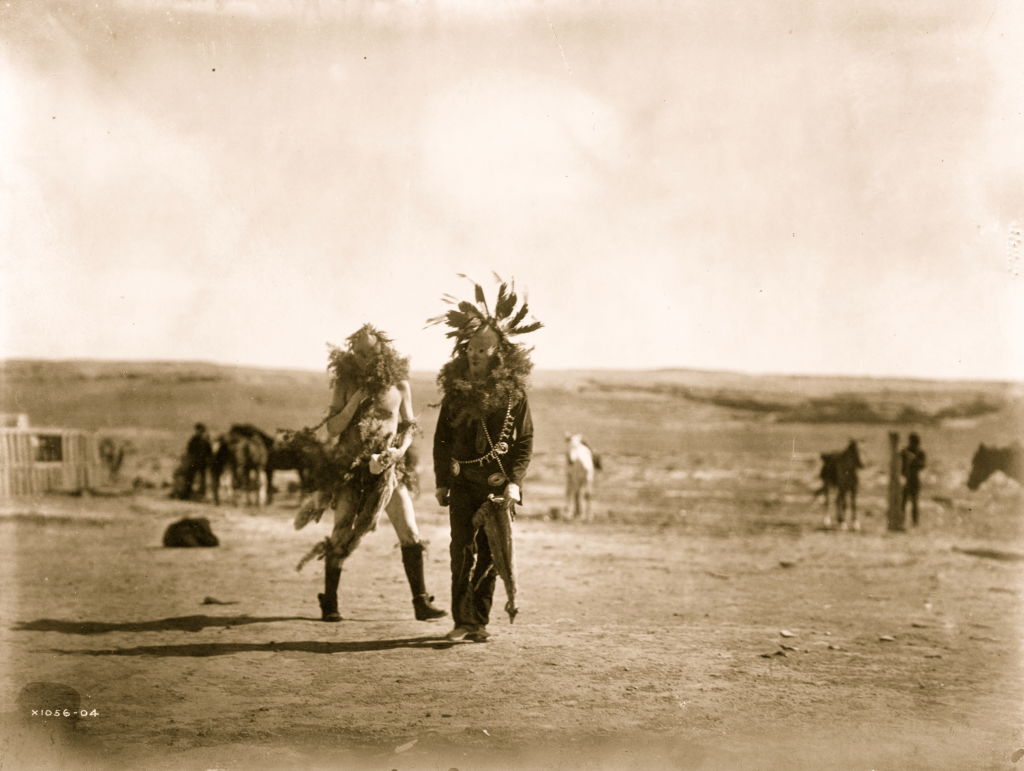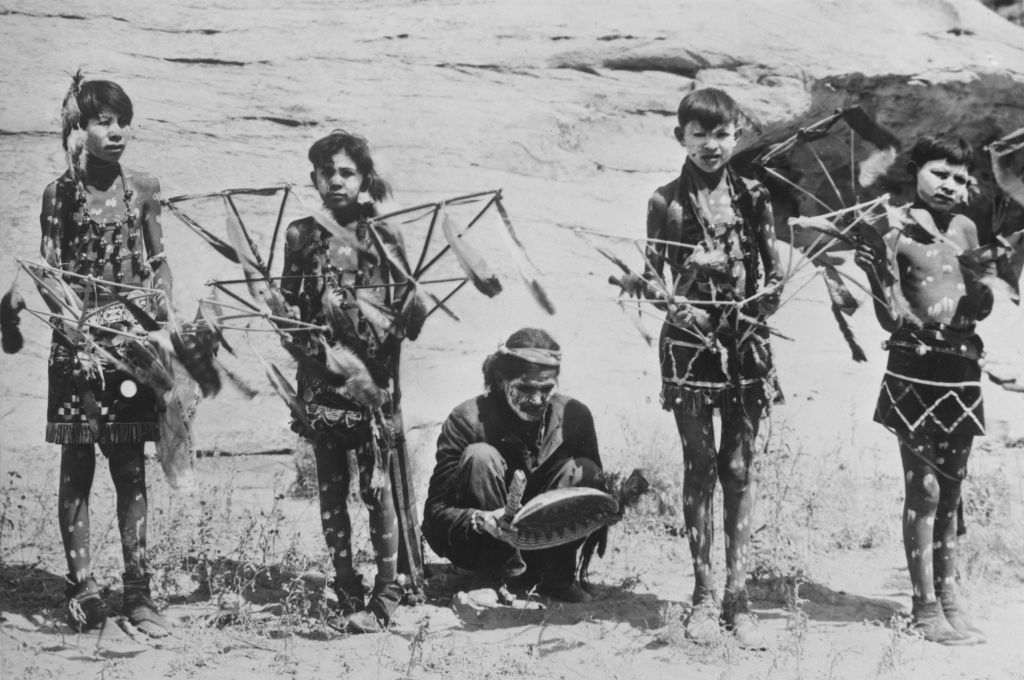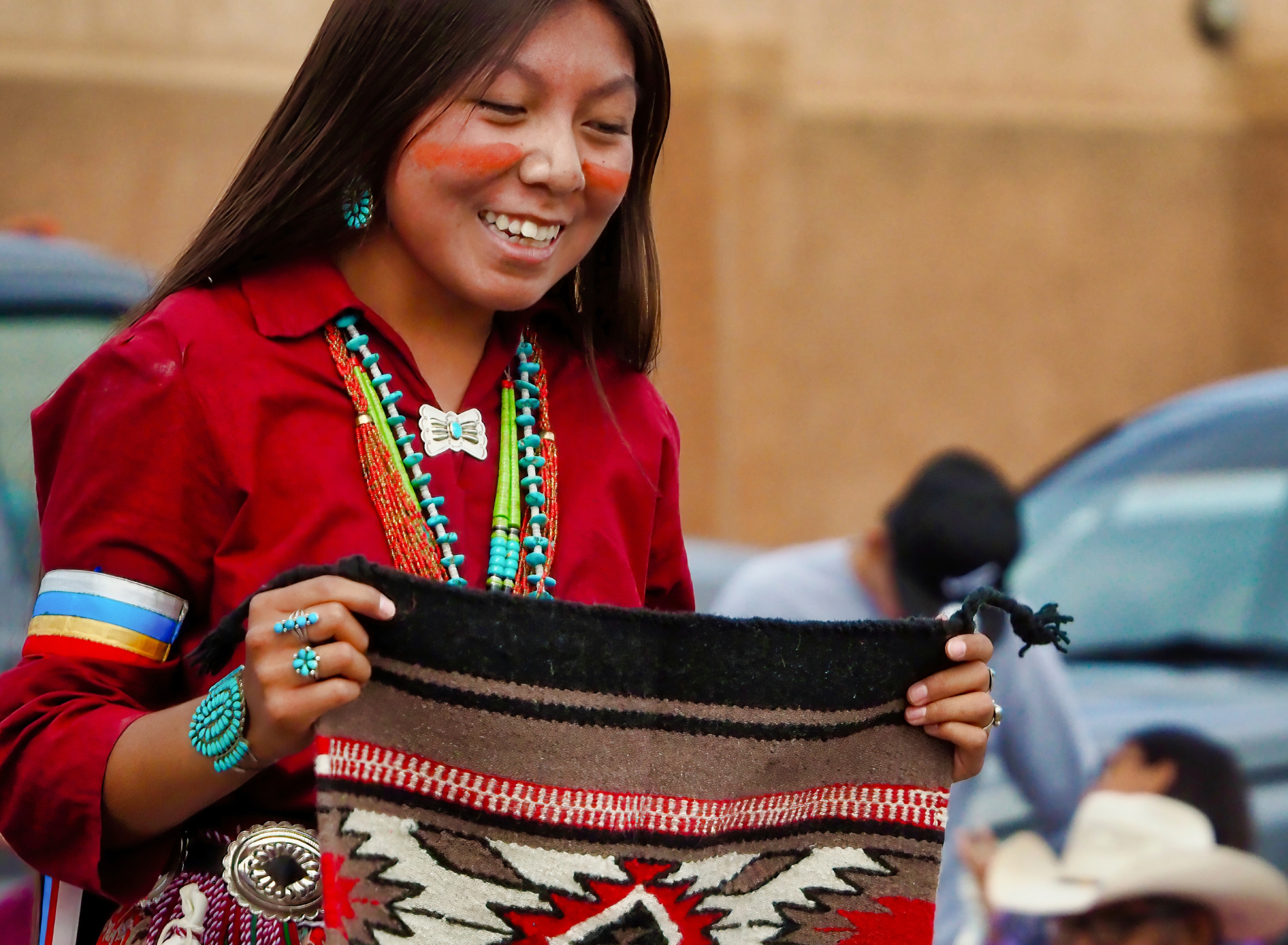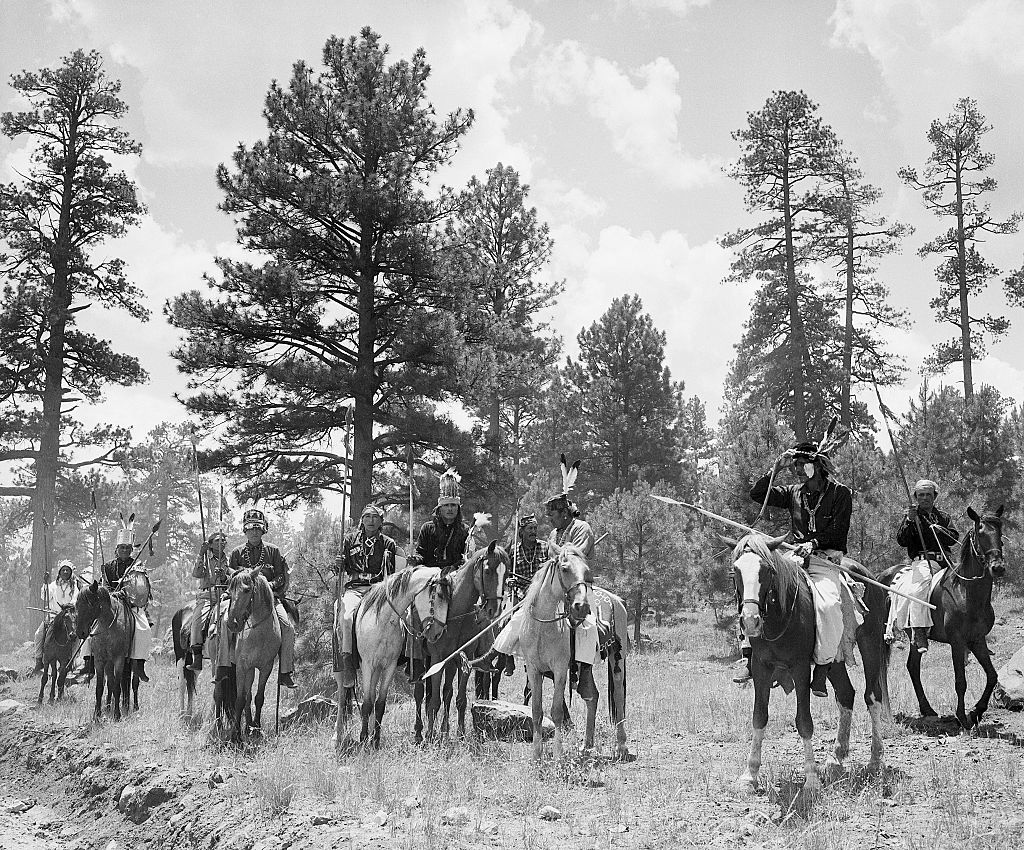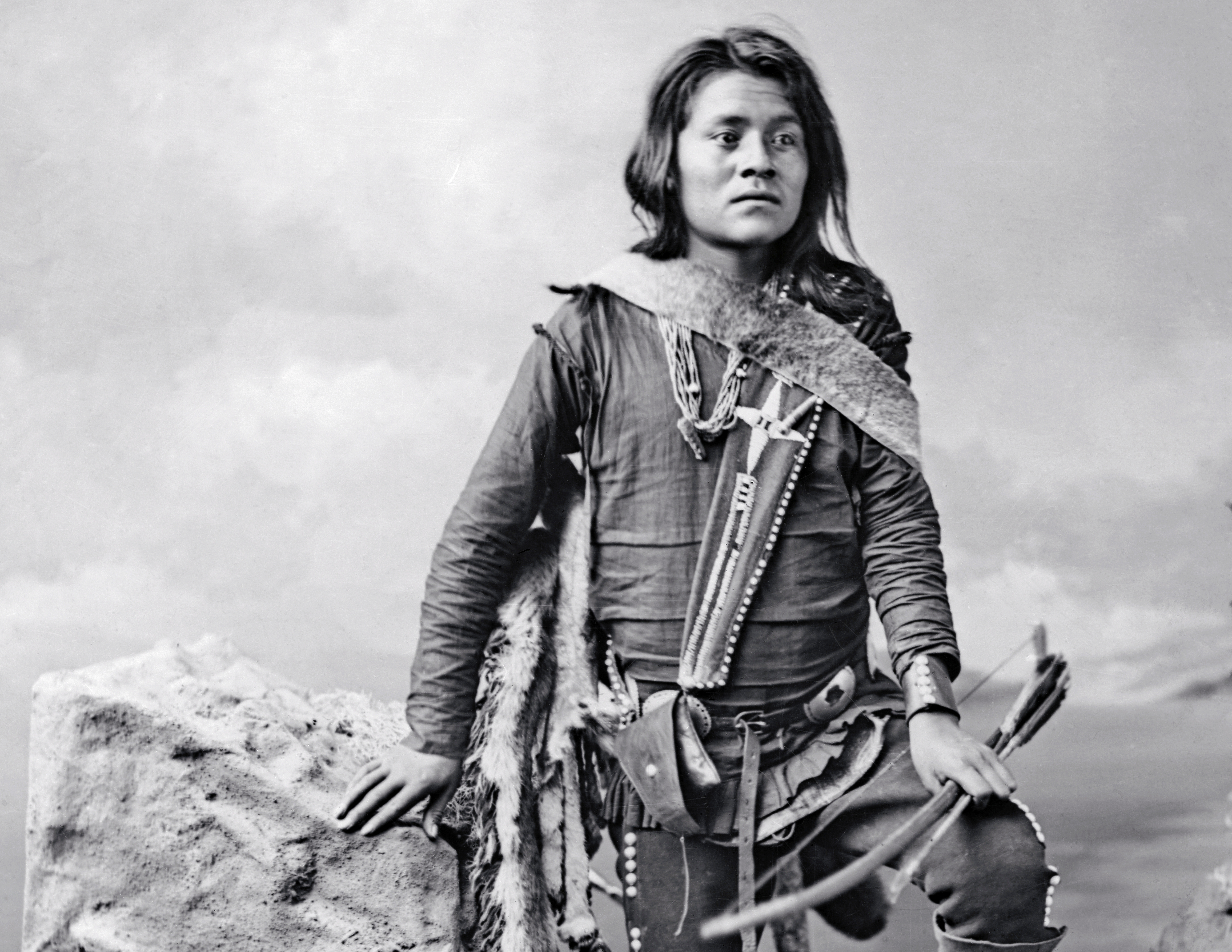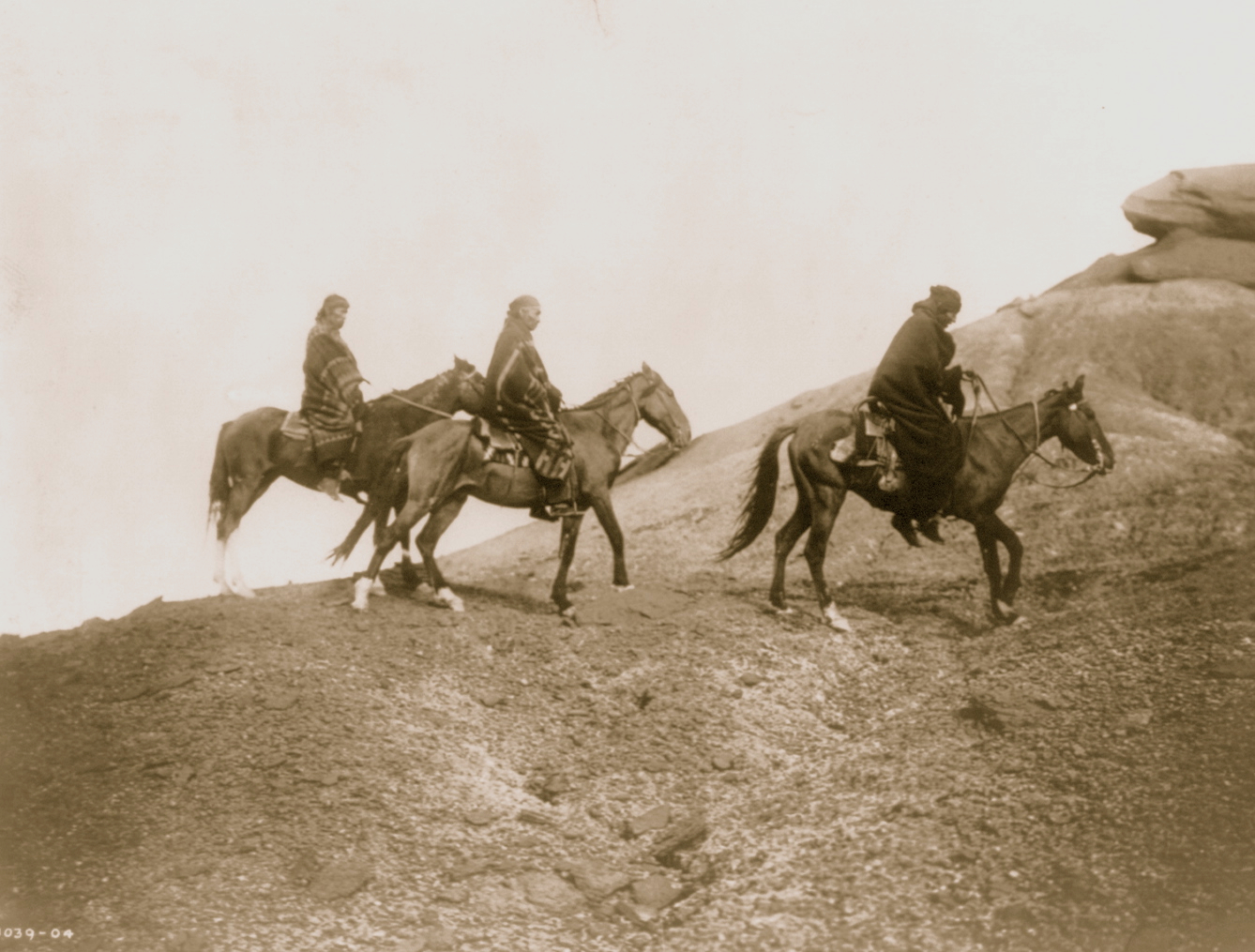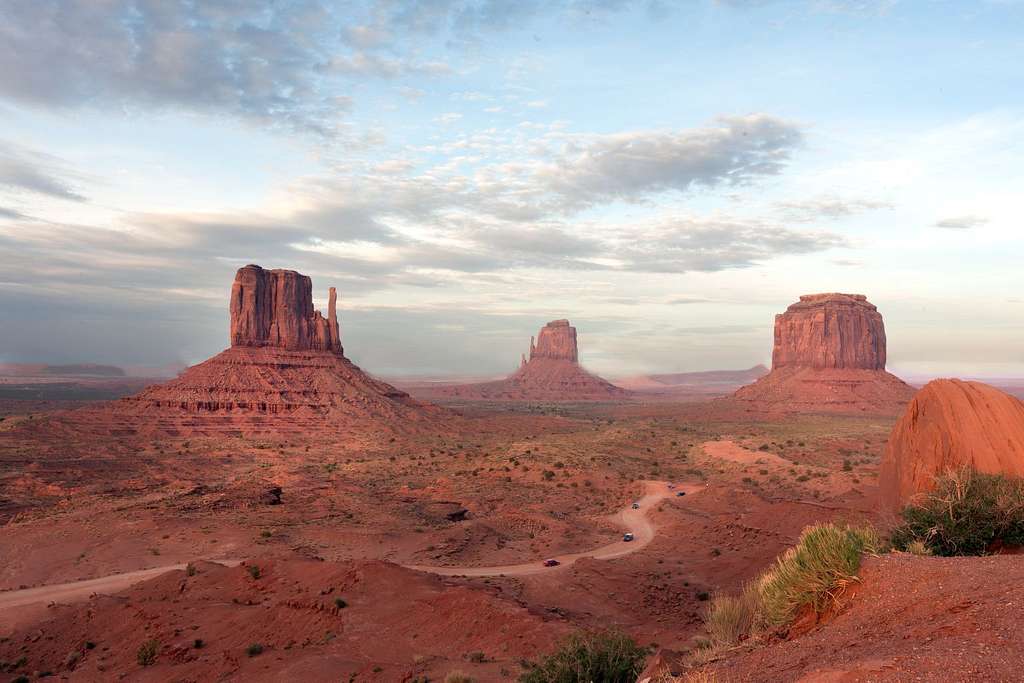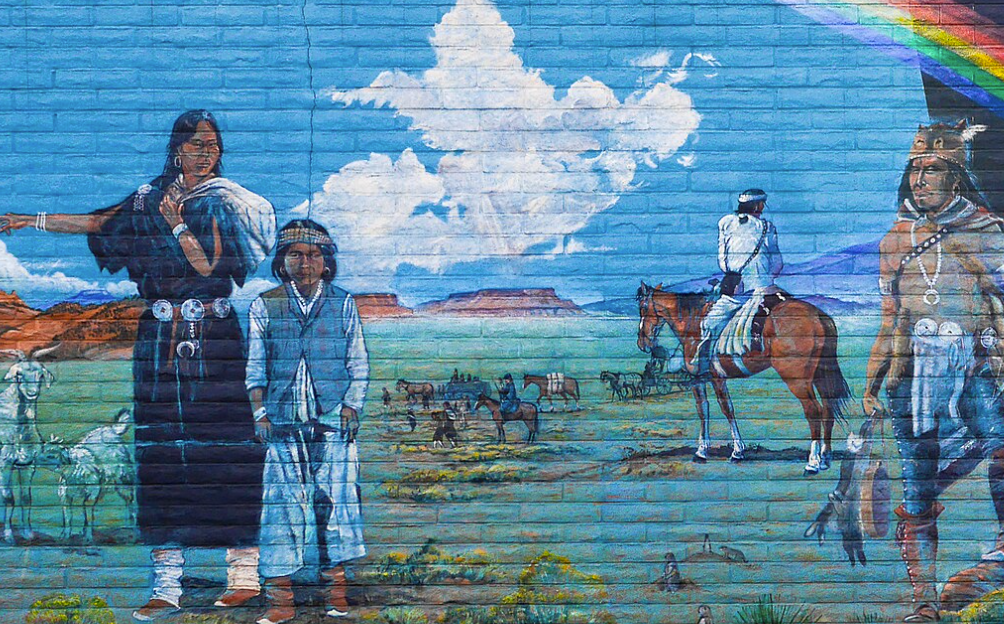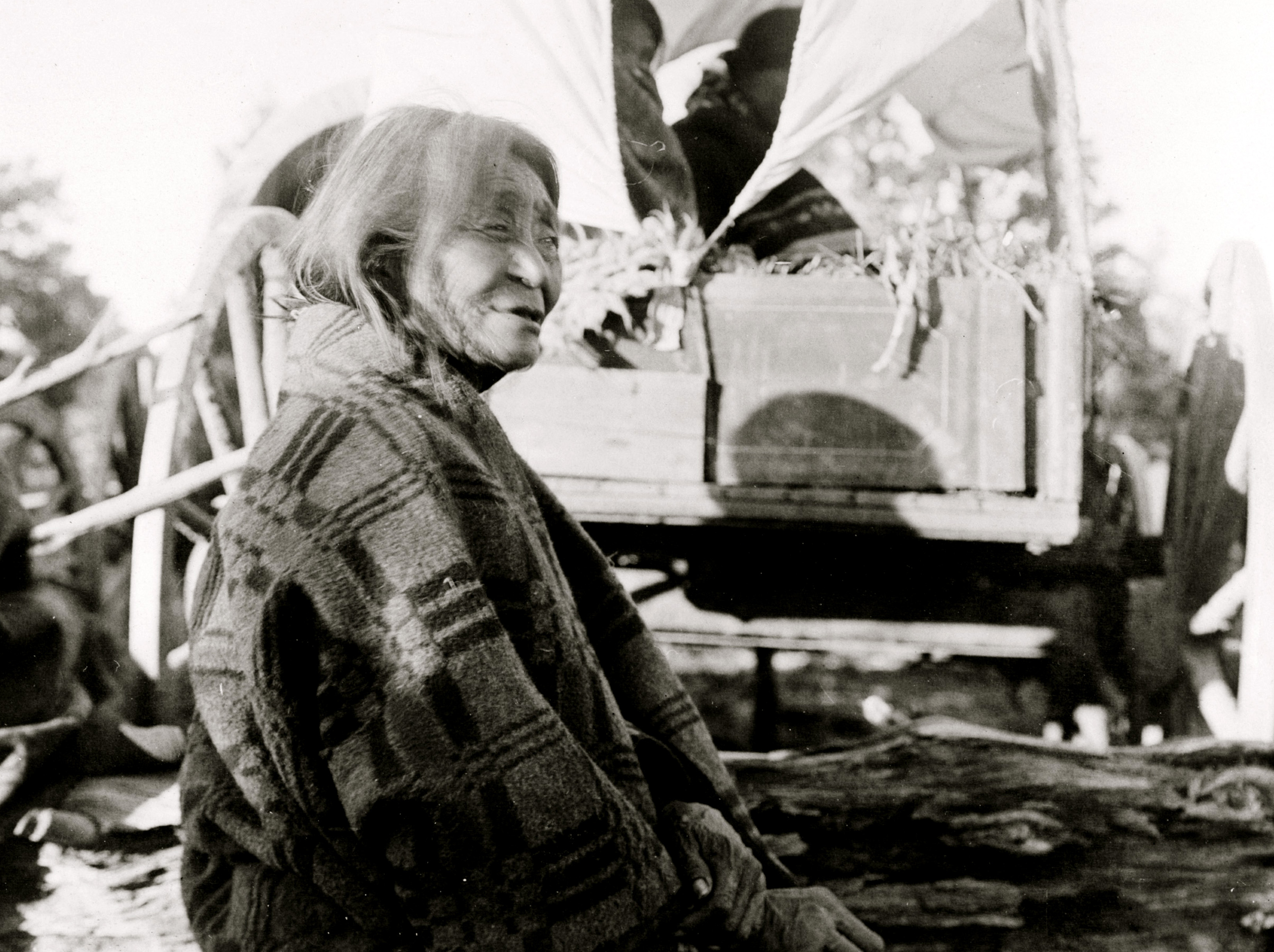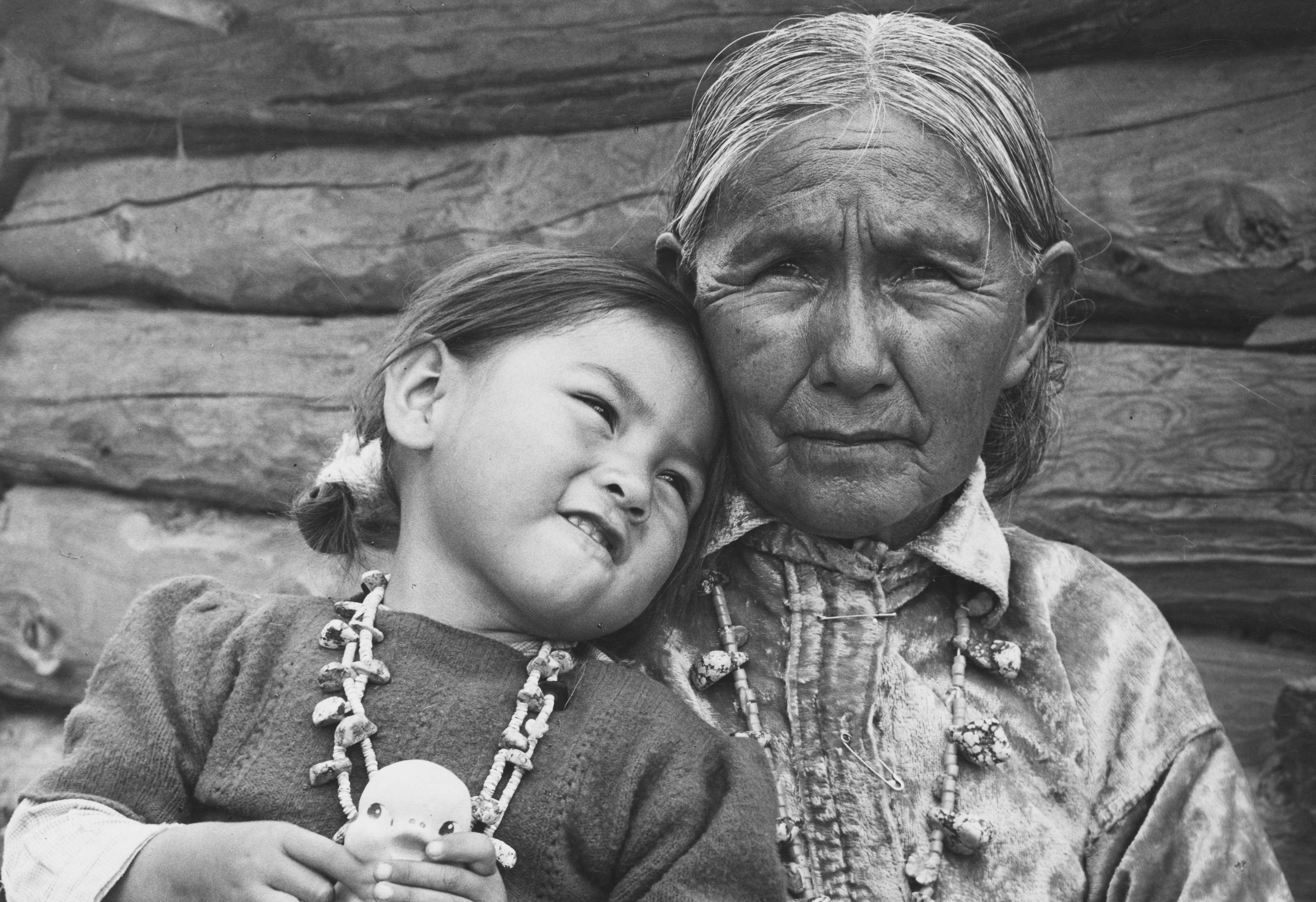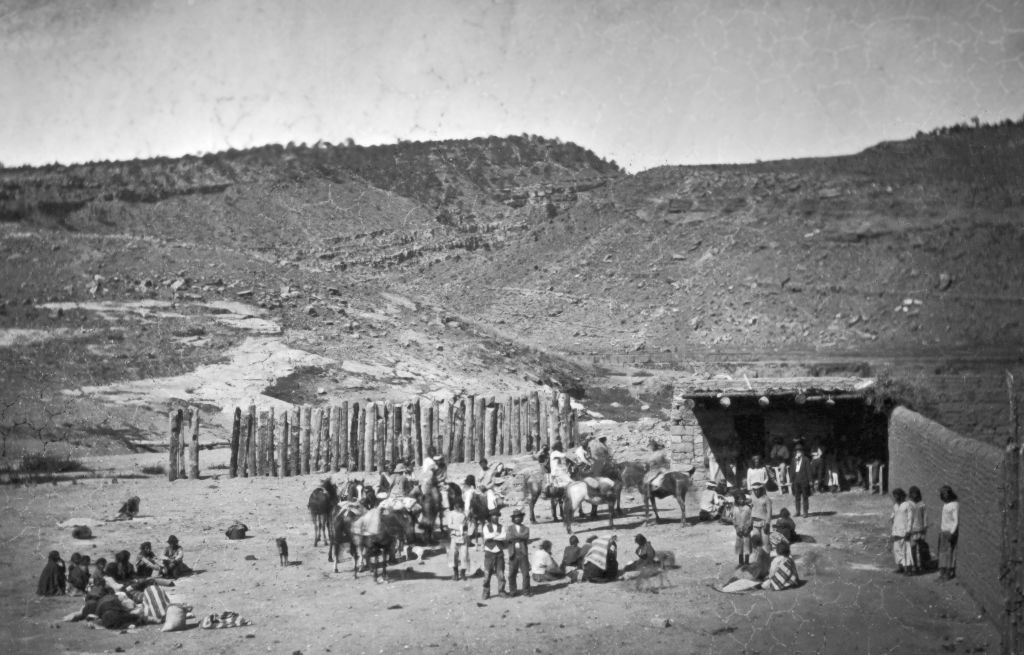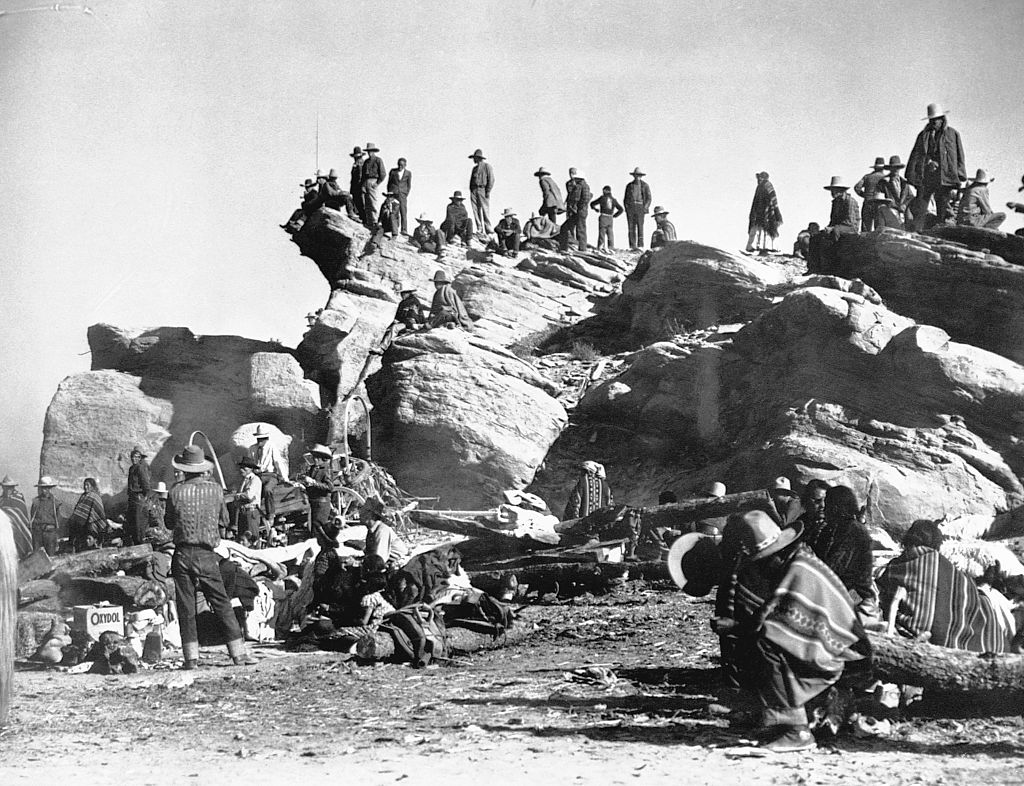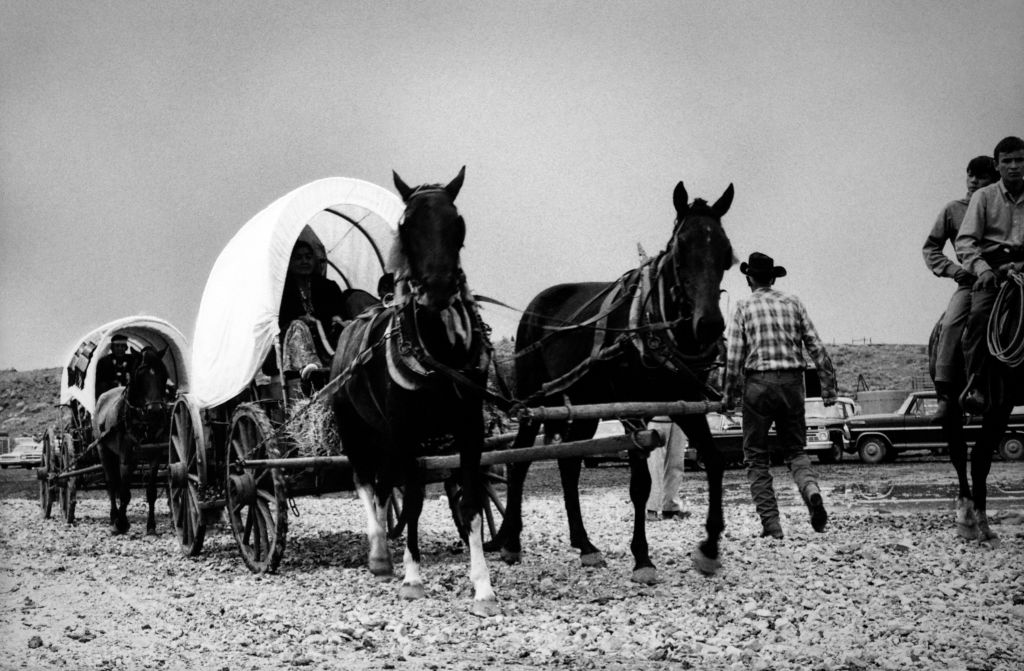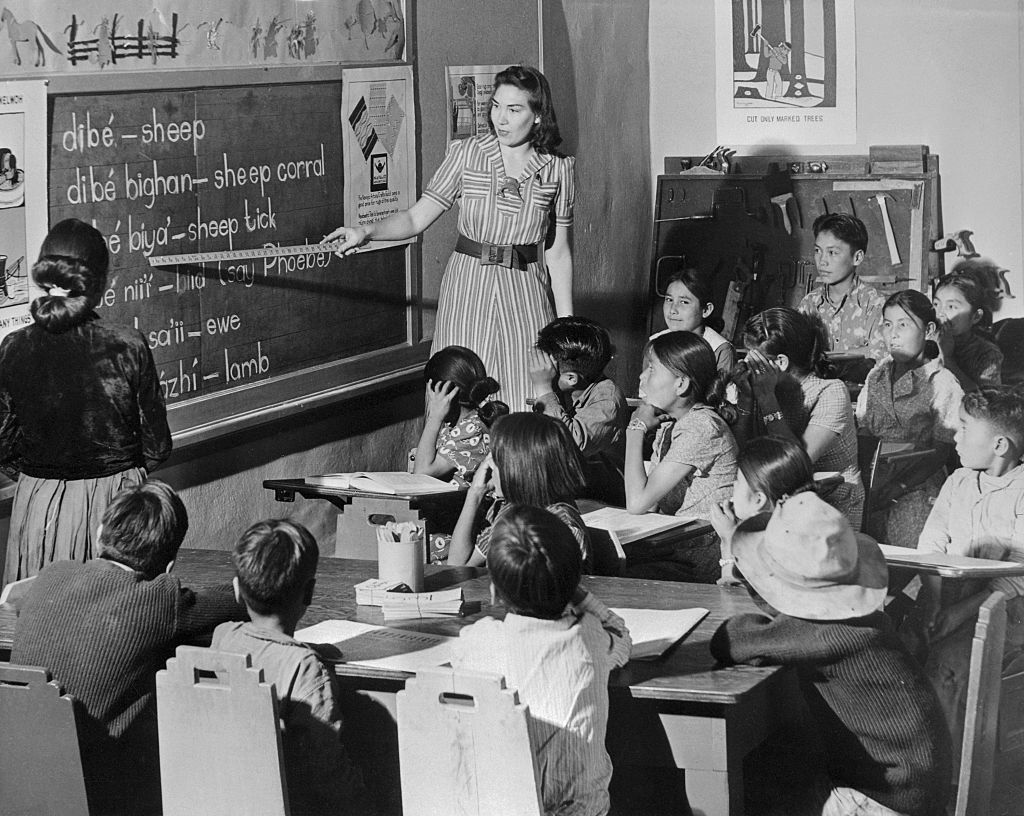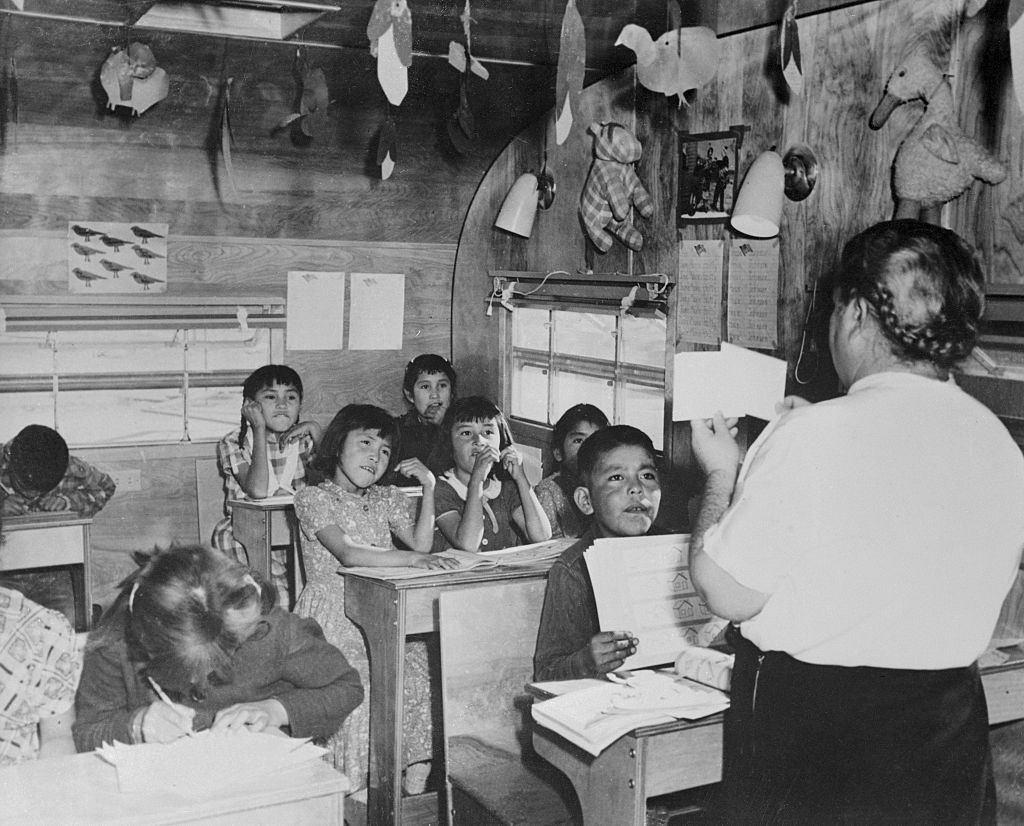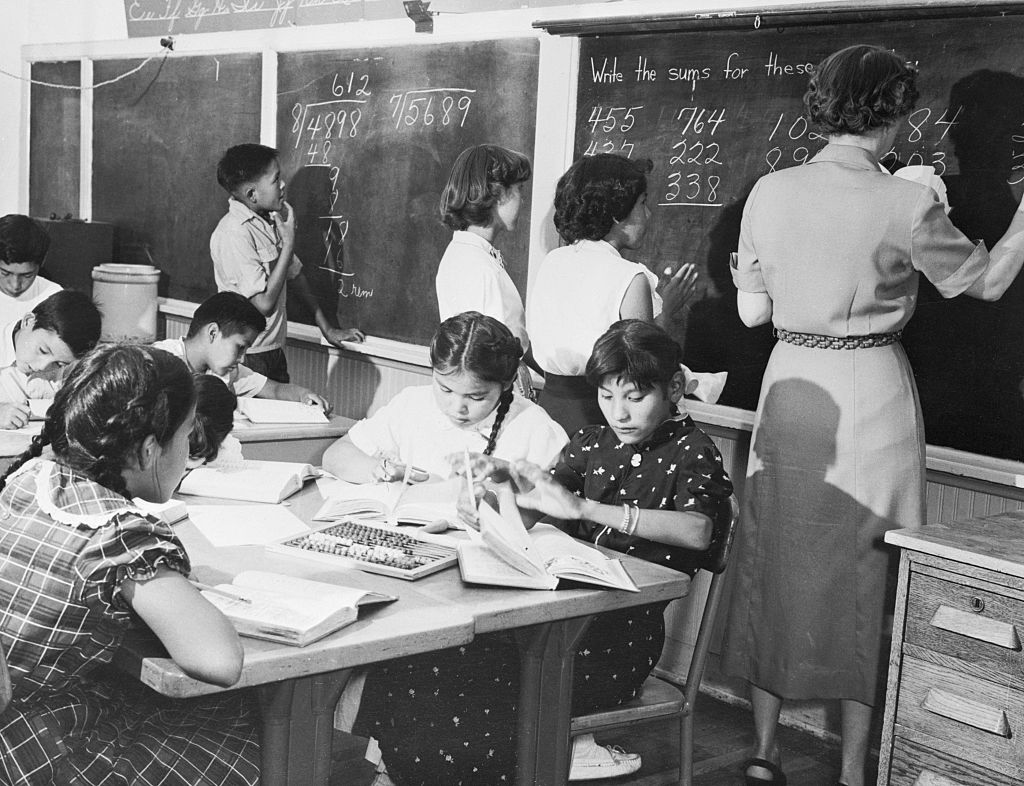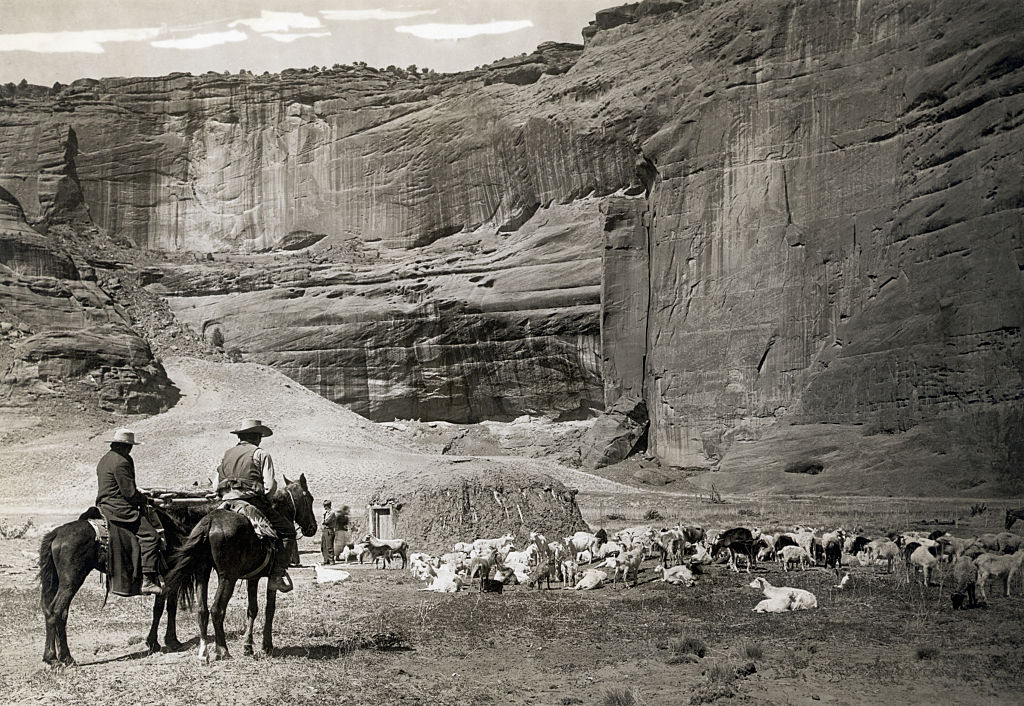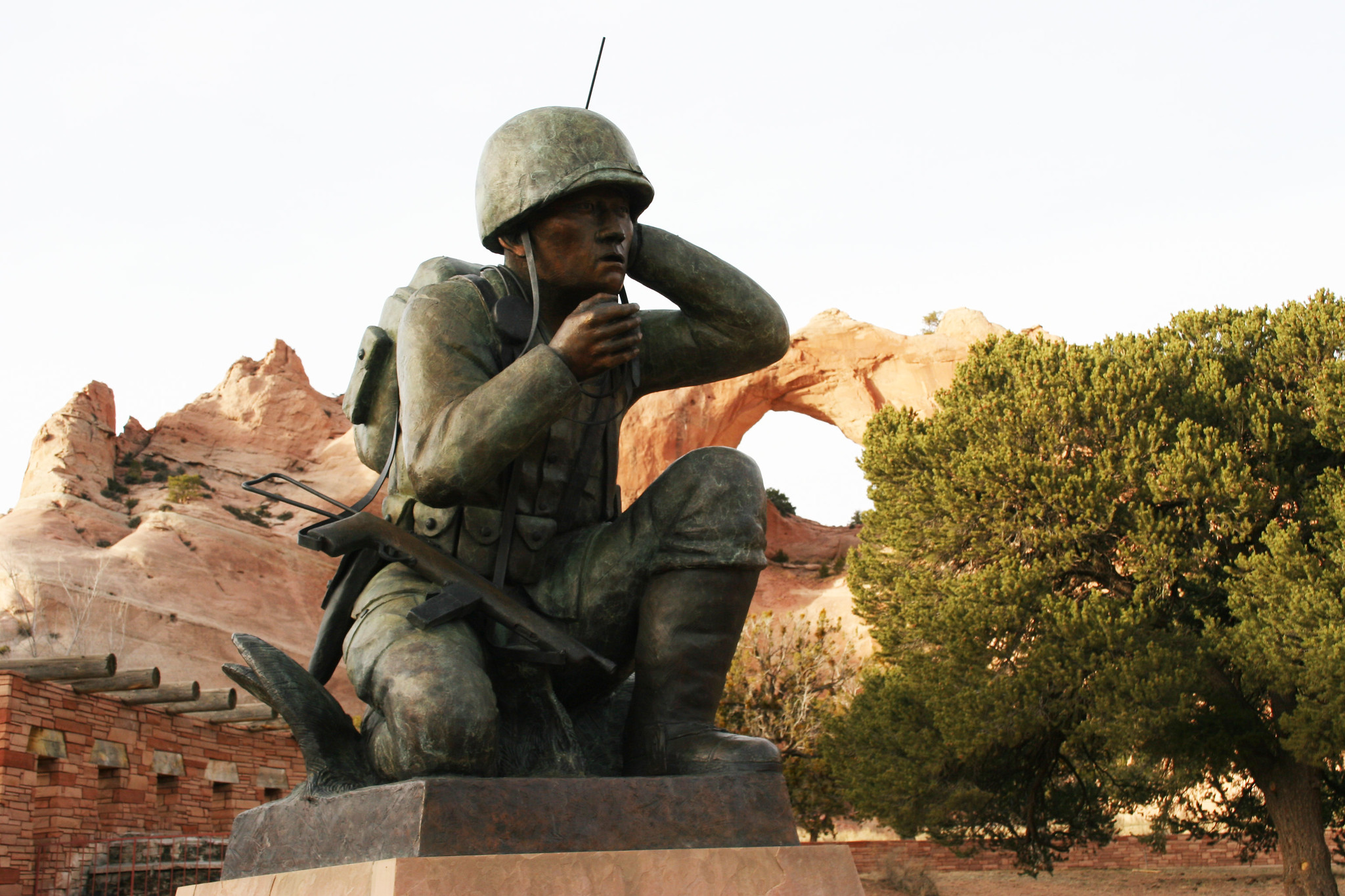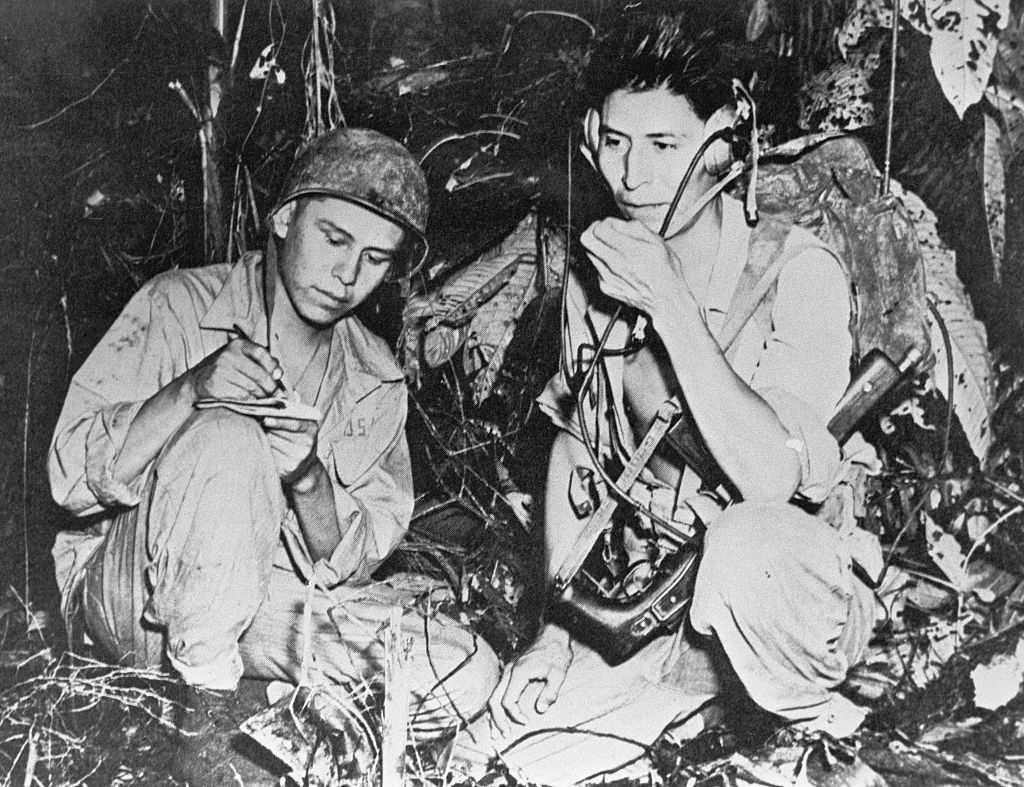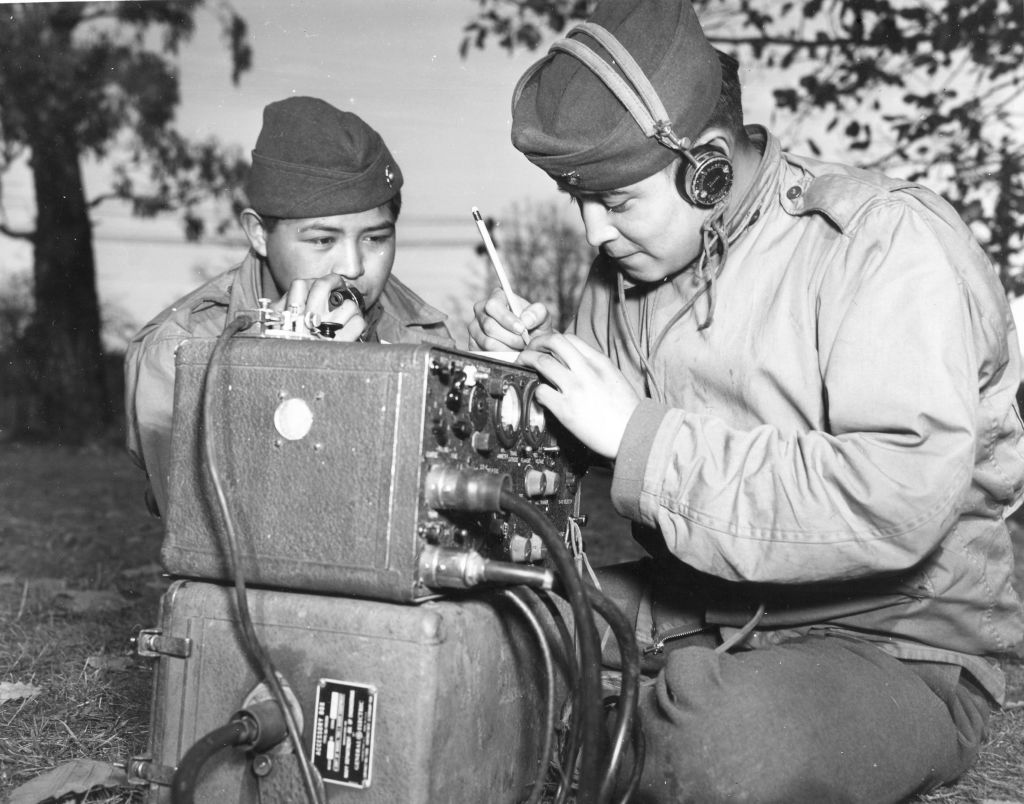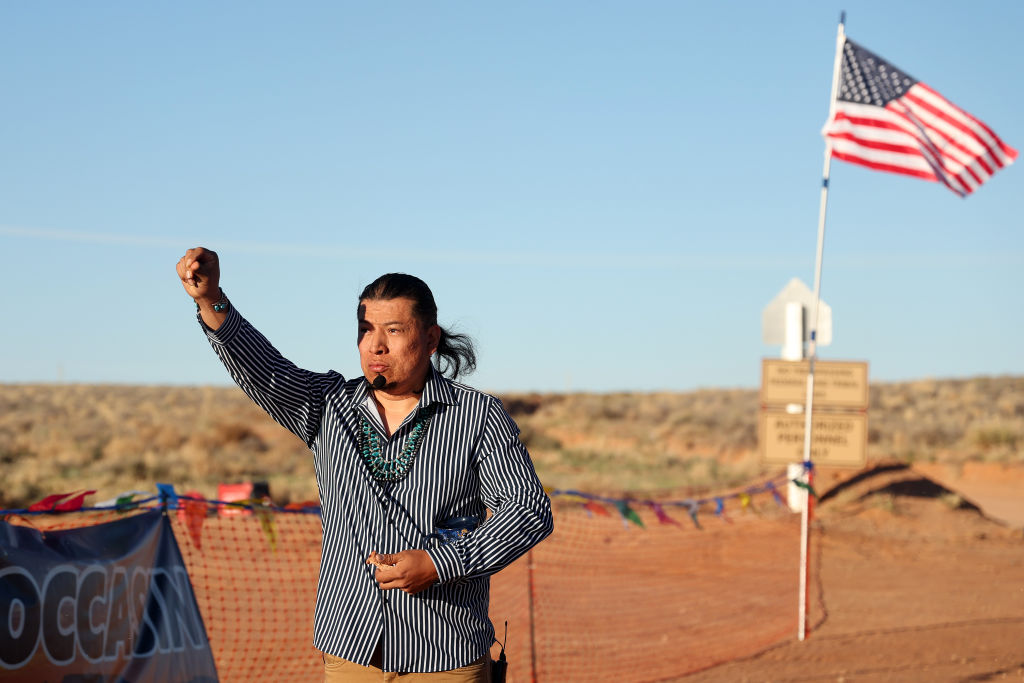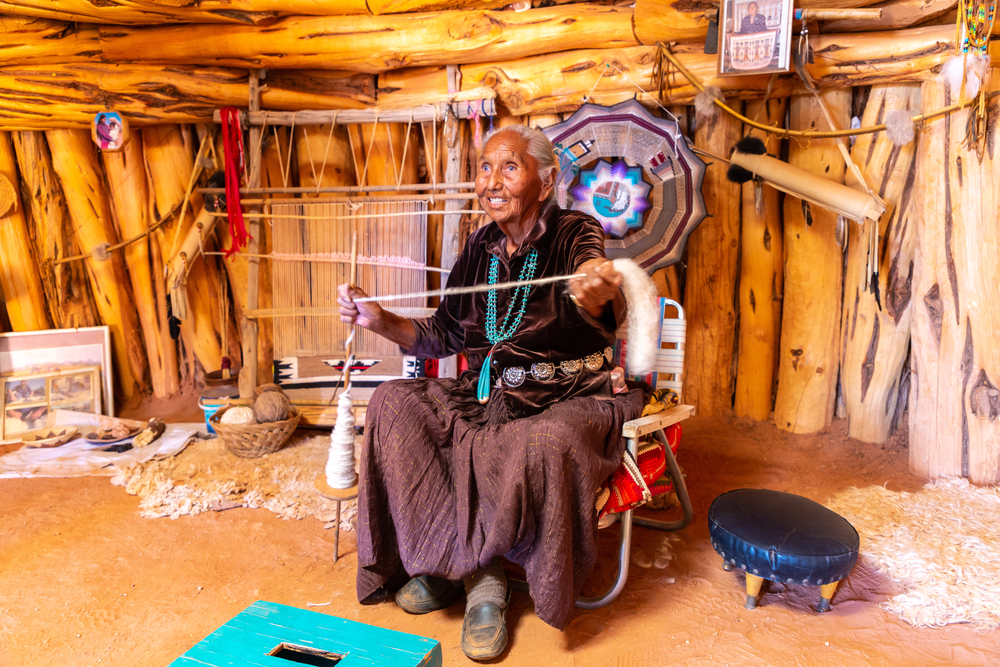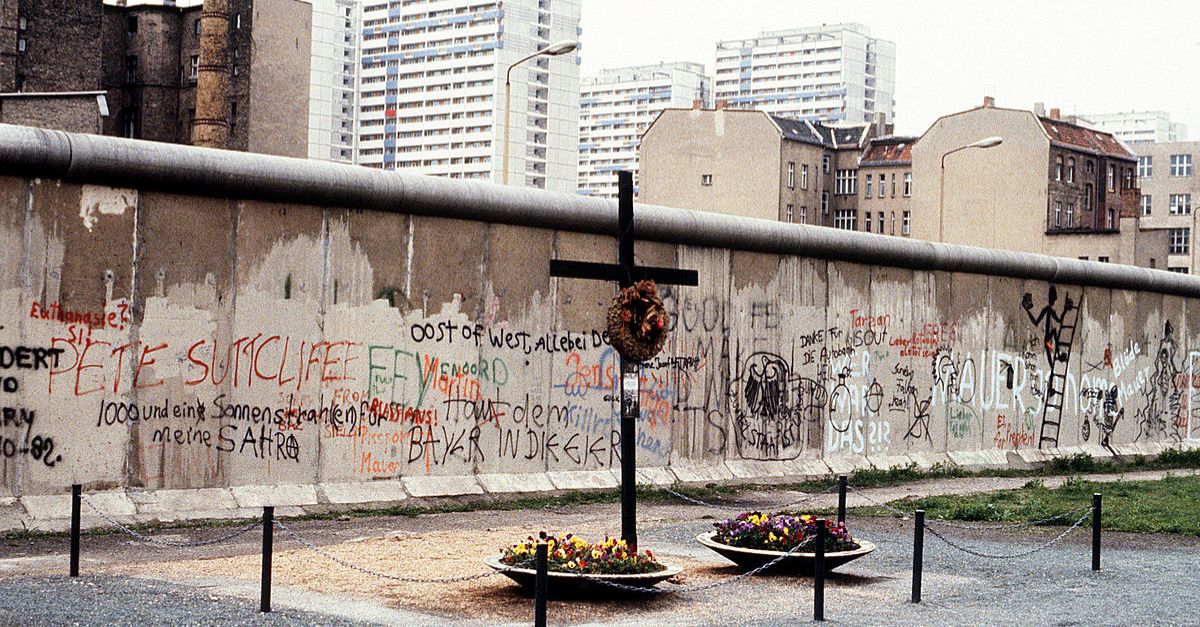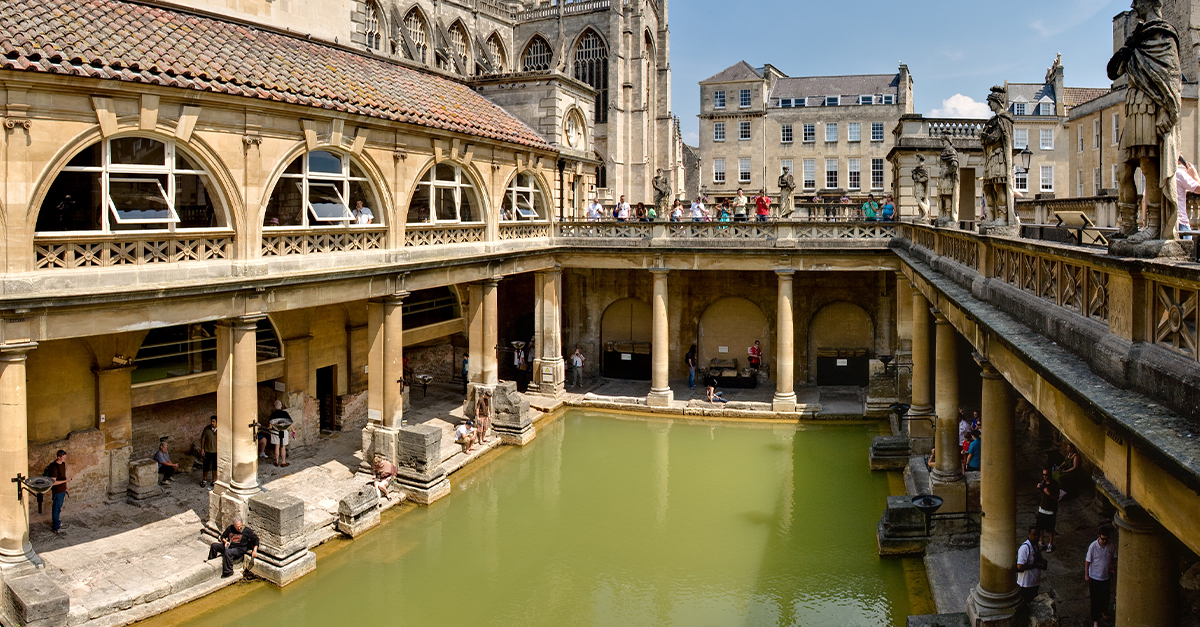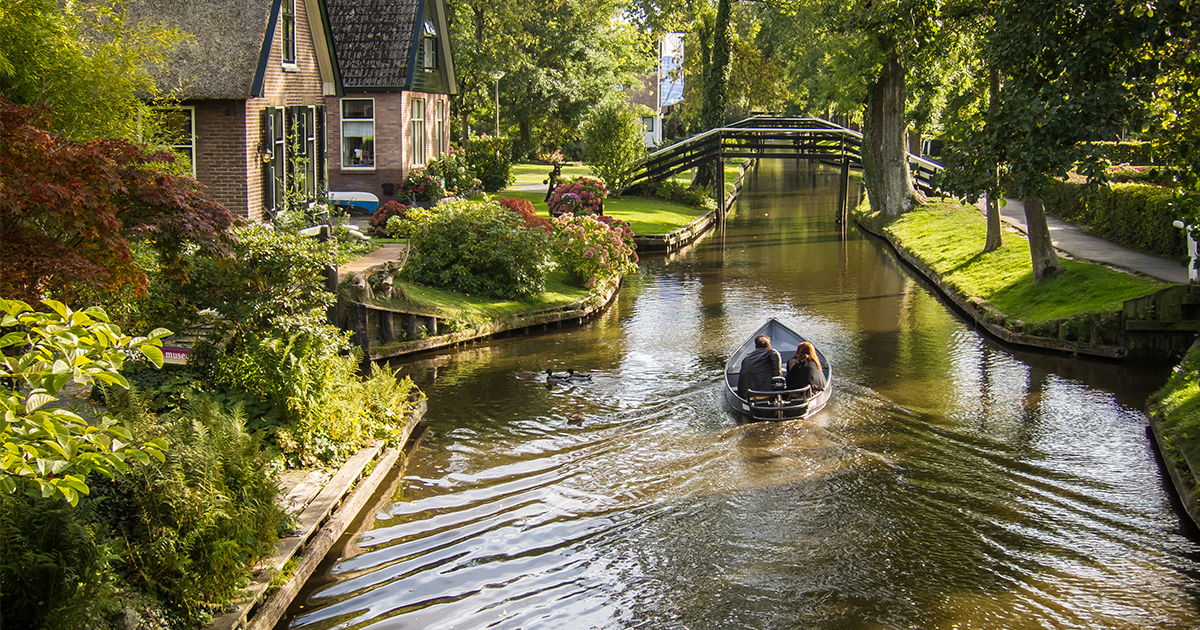North America’s Largest Tribe
The Navajo people were once nomadic hunter-gatherers that lived off the land as their simple, yet substantial, way of life.
Today, they are the largest Native American tribe in North America.
From fascinating cultural traditions to indescribable massacres, find out how the Navajo people survived decades of injustice and conflict, using sheer persistence and their intriguing, “secret code.”
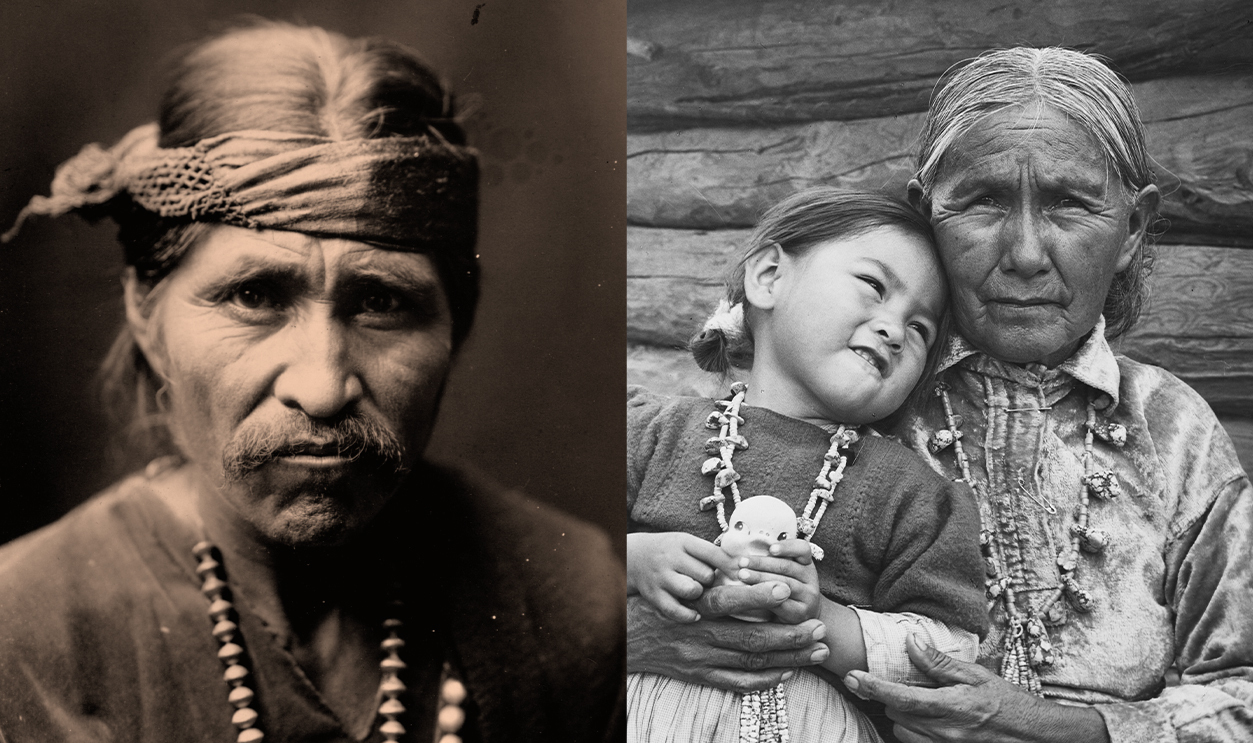
The Navajo
The Navajo are a Native American people of the Southwestern United States. With more than 400,000 enrolled tribal members as of 2021, the Navajo Nation is the largest federally recognized tribe in the United States.
Location
Additionally, the Navajo Nation has the largest reservation in the country. The reservation straddles the Four Corners region and covers more than 27,325 square miles (70,770 square kilometers) of land in Arizona, Utah, and New Mexico.
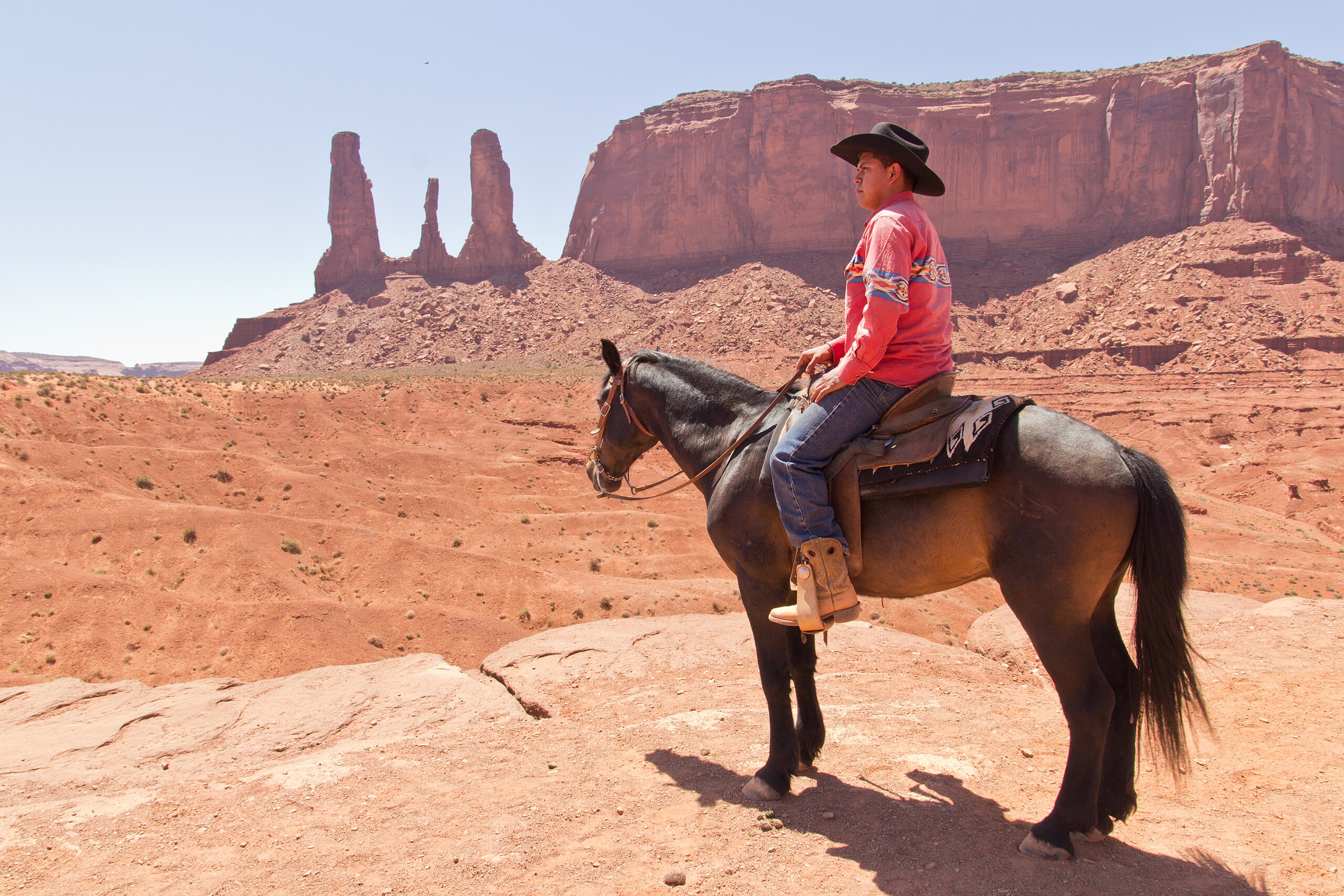 katsrcool, CC BY 2.0, Wikimedia Commons
katsrcool, CC BY 2.0, Wikimedia Commons
Migration
They are believed to have migrated from northwestern Canada and eastern Alaska, where the majority of Athabaskan speakers reside.
Although the exact timing of the relocation is unknown, it is thought to have been between 1100 and 1500 CE.
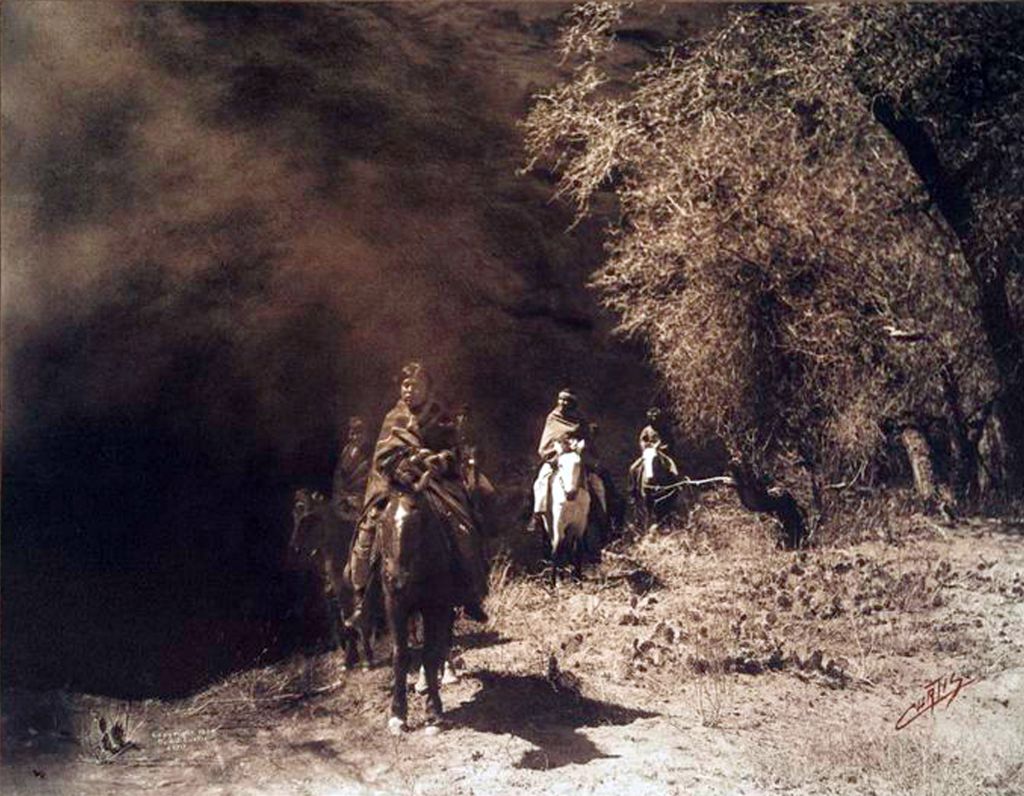 UniversalImagesGroup, Getty Images
UniversalImagesGroup, Getty Images
Language
The Navajo speak an Apachean language which is classified in the Athabaskan language family, and referred to as the Navajo Language. Many also speak English.
They traditionally referred to themselves as the Diné, meaning '(the) people'.
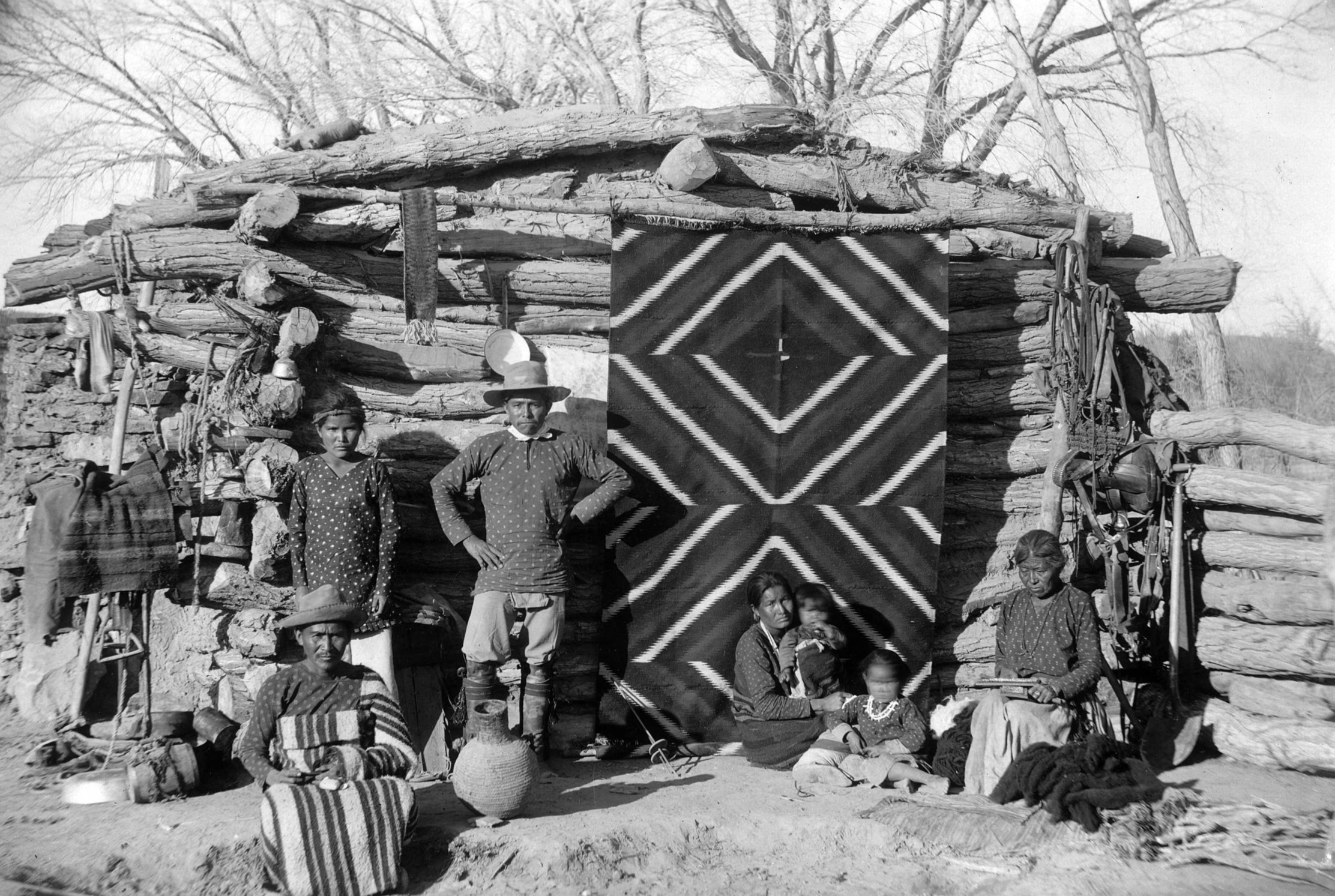 Unknown Author, Wikimedia Commons
Unknown Author, Wikimedia Commons
Traditional Lifestyle
Initially, the Navajo were largely hunters and gatherers, relying on their natural environment for all of their needs, including food, shelter, and medicine.
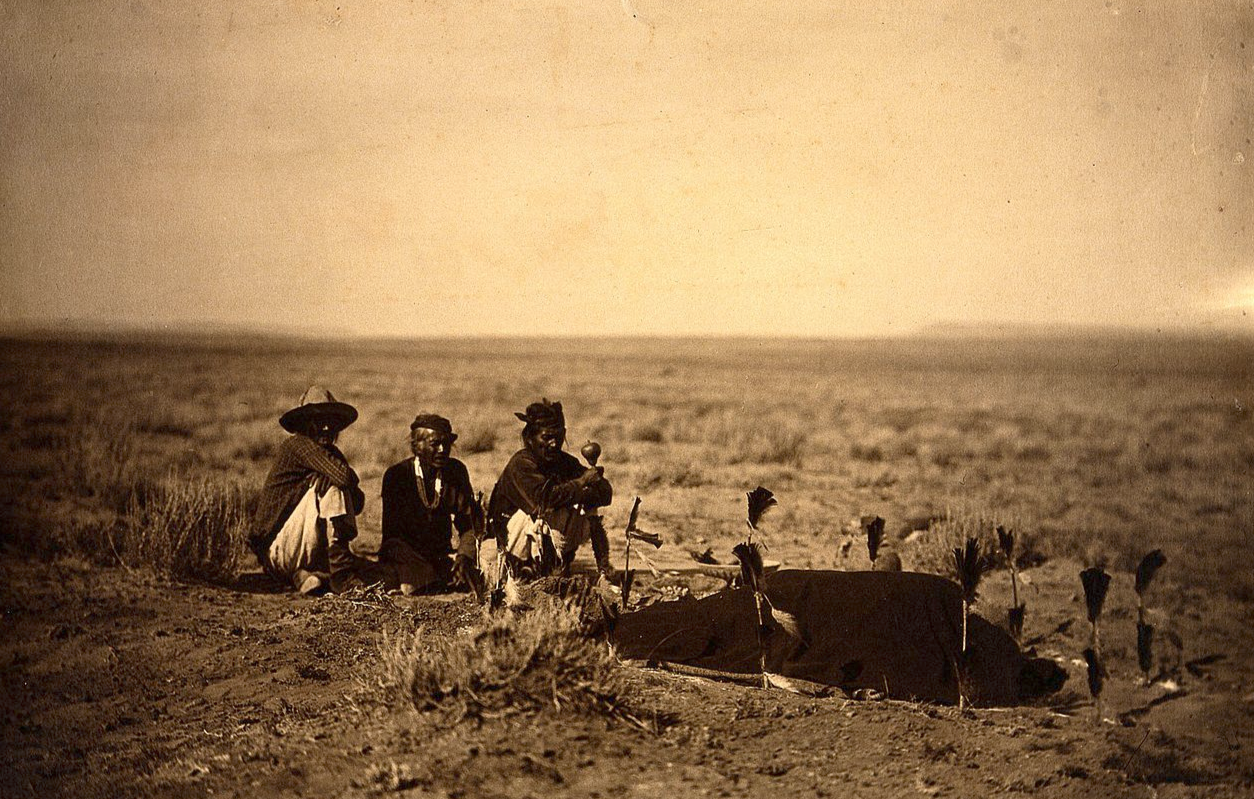 Edward S. Curtis, CC BY 4.0, Wikimedia Commons
Edward S. Curtis, CC BY 4.0, Wikimedia Commons
Traditional Shelter
Traditionally, the Navajo lived in hogans—a domed shaped house with a wood frame and walls made out of clay. The door of the hogan always faced east so they could see the sun rise.
Farming
After migrating to the Southwest, the Navajo adopted farming practices from the nearby Pueblo people—growing mainly the traditional Native American "Three Sisters" of corn, beans, and squash.
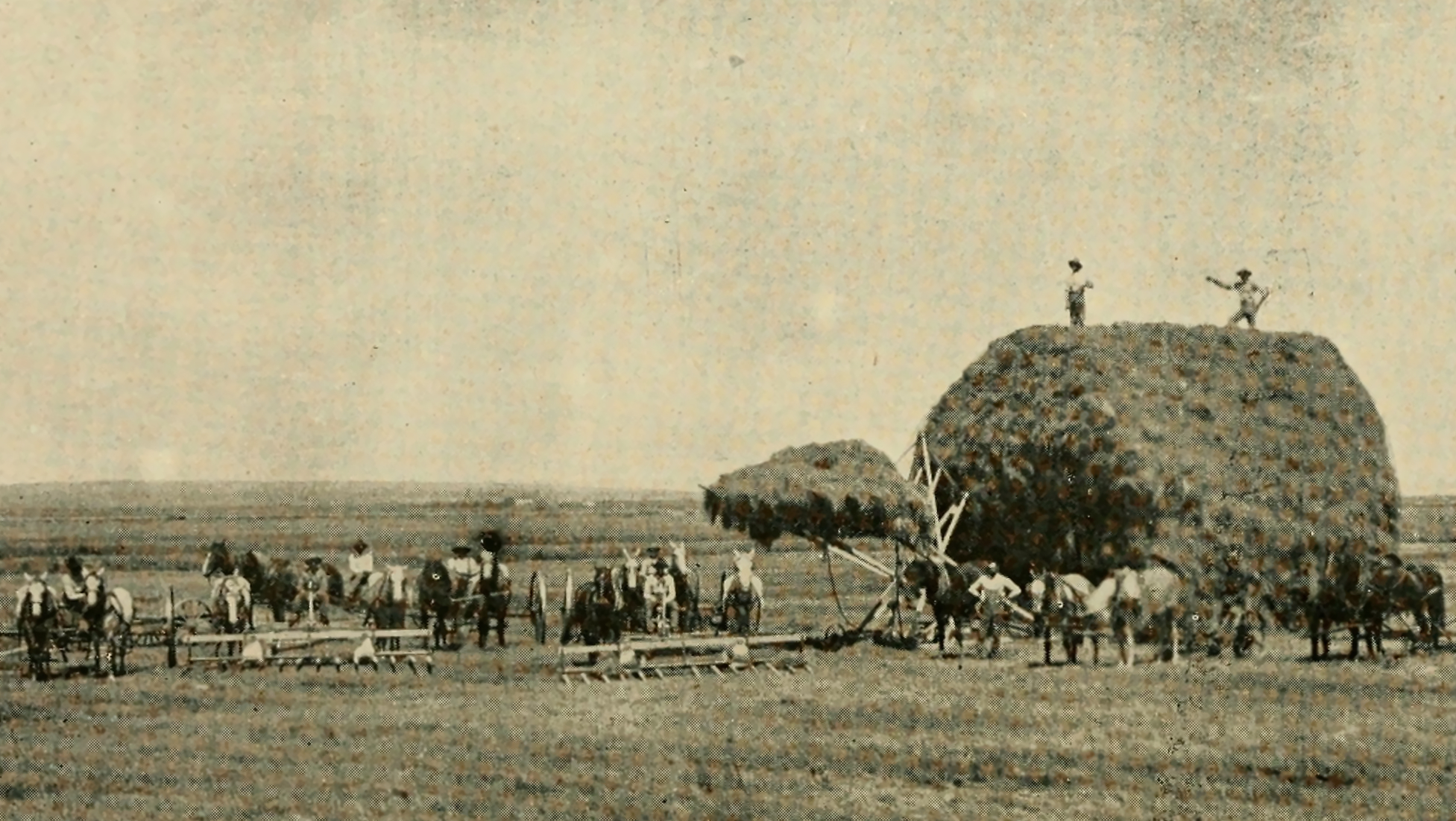 New Mexico. Bureau of Immigration, Wikimedia Commons
New Mexico. Bureau of Immigration, Wikimedia Commons
Livestock
In additional to crops, they started herding sheep and goats as both their main source of food as well as trade.
Meat became essential in the Navajo diet, and sheep became a form of currency and familial status.
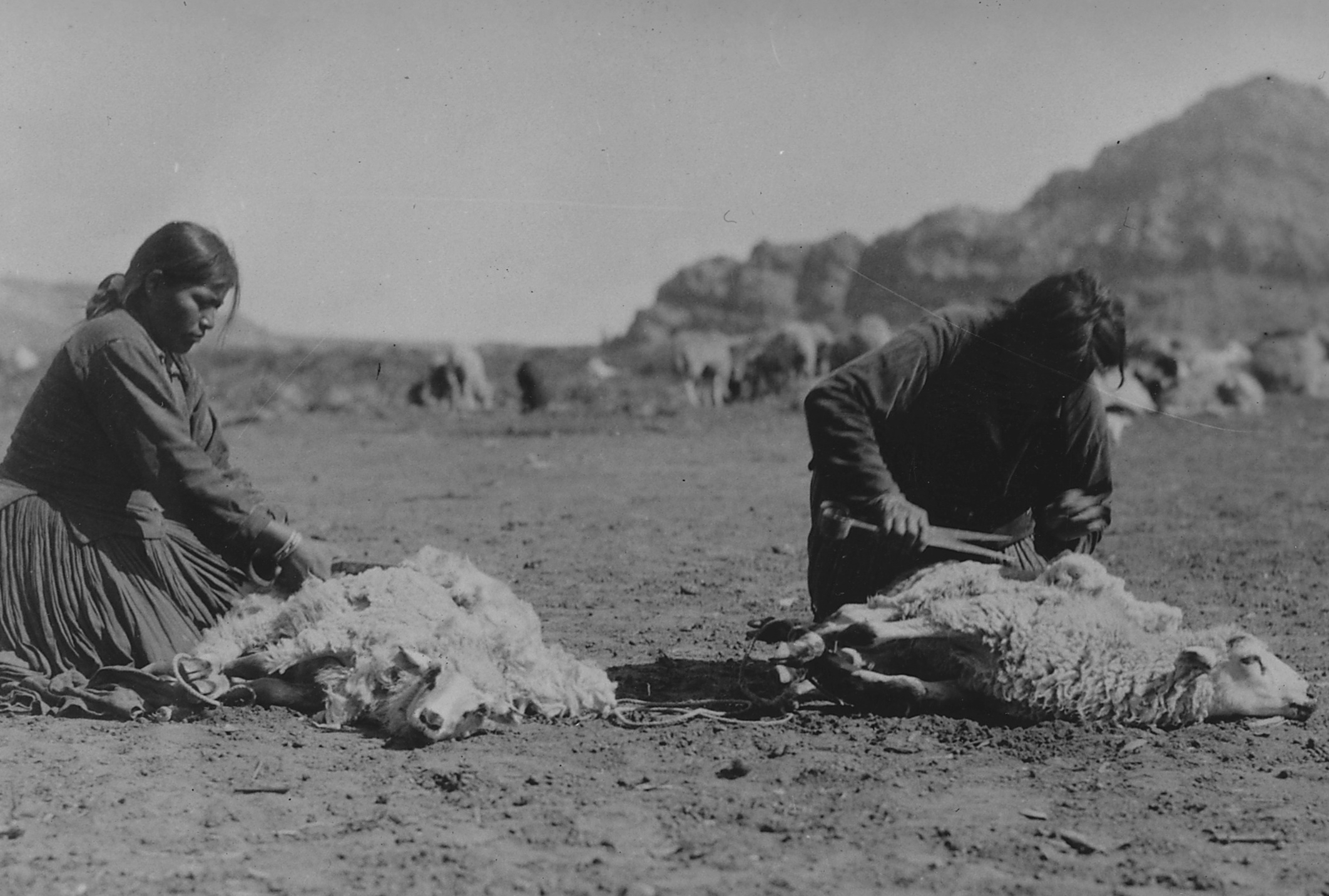 National Archives and Records Administration, Wikimedia Commons
National Archives and Records Administration, Wikimedia Commons
Hunting
Keeping some tradition alive, the Navajo continued to hunt animals for food, such as deer, rabbits, and prairie dogs.
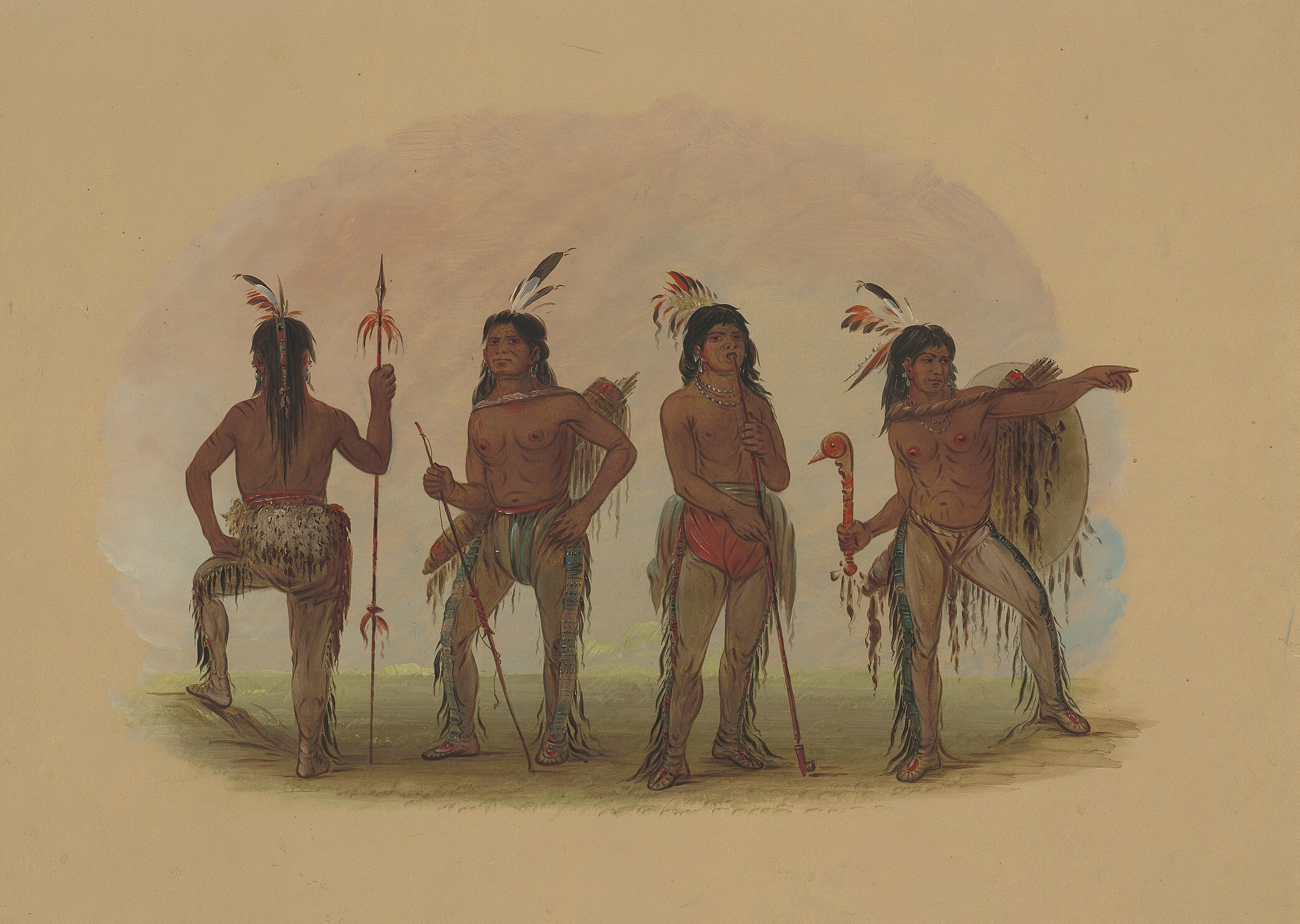 National Gallery of Art, Wikimedia Commons
National Gallery of Art, Wikimedia Commons
Traditional Dishes
Some of their top traditional dishes include: mutton stew, fried cornbread, and even grilled prairie dog.
Traditional Clothing
Before the Navajo started raising sheep, they wore clothes made of woven yucca plants or deerskin.
The men wore breechcloths and the women skirts. Their shoes were soft leather moccasins. Later, they wore clothes woven from the wool of sheep.
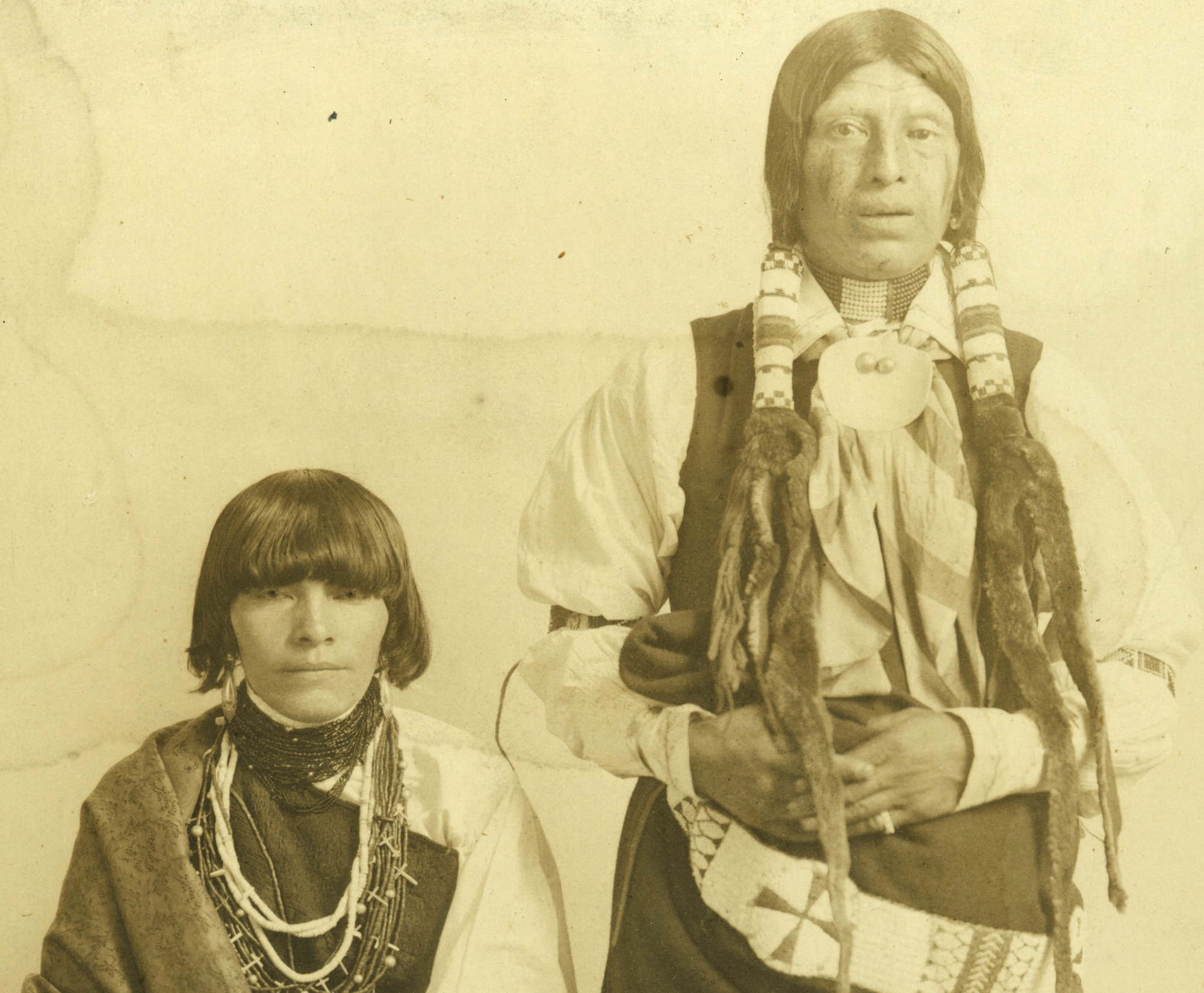 Gerhard Sisters, Wikimedia Commons
Gerhard Sisters, Wikimedia Commons
Accessories
In addition to traditional clothing, the Navajo were—and still are—extremely talented with arts and crafts, and often divided up various creative activities among the men and women.
This included silver jewelry (which was created by the men) that often included turquoise embellishments.
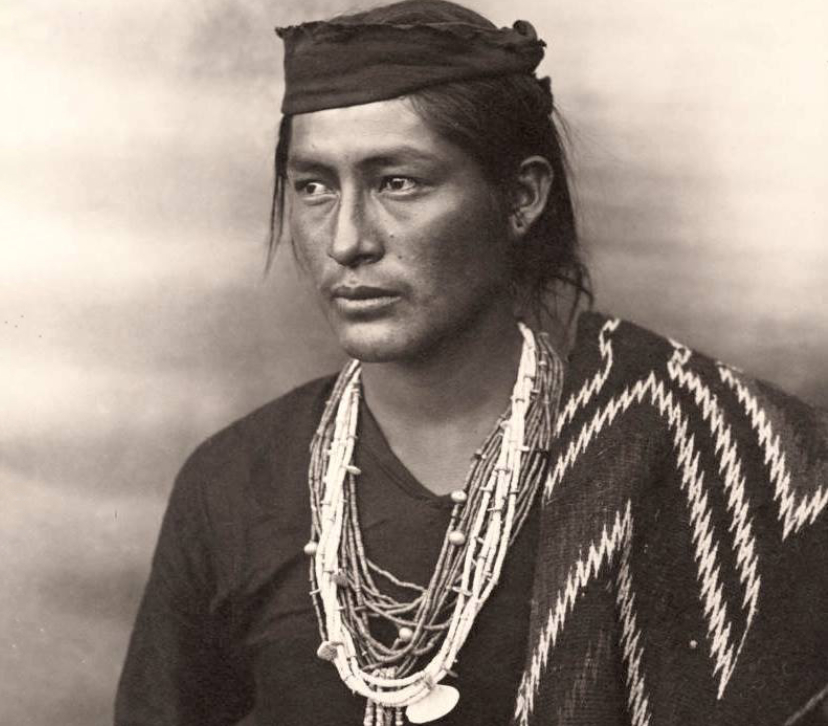 Frederick Monsen, Wikimedia Commons
Frederick Monsen, Wikimedia Commons
Handicrafts
In addition to the jewelry, the Navajo women wove blankets and made clay pots. Both of which would later become significant symbols of the Navajo culture.
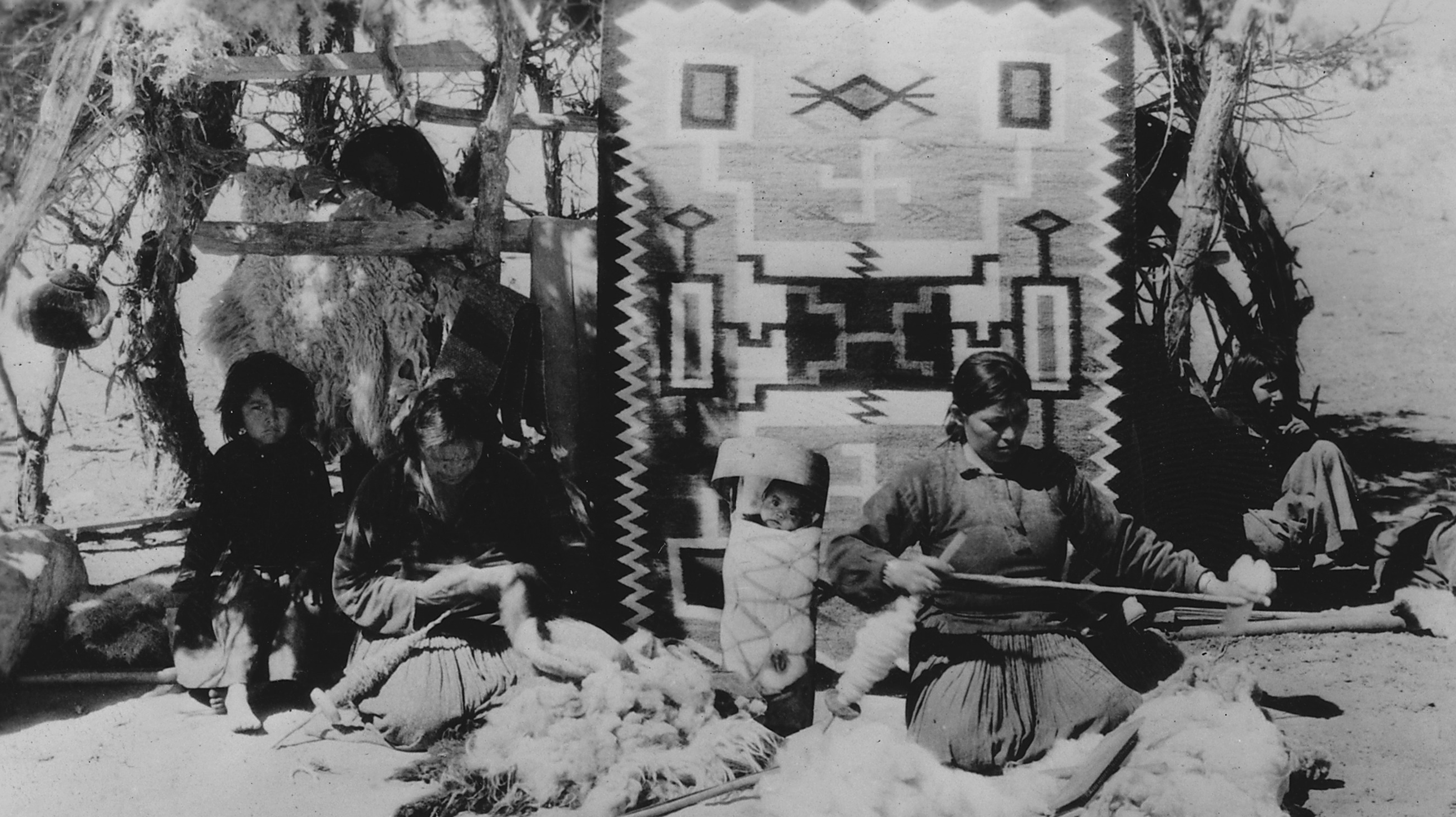 National Archives and Records Administration, Wikimedia Commons
National Archives and Records Administration, Wikimedia Commons
Woven Blankets
Navajo chief's blankets—hand crafted by the tribe’s women—were often used as symbols of wealth, power, and prestige. They were highly sought after and were considered valuable trade items.
Native American leaders and chiefs would often wear or display these blankets as a sign of their authority and influence.
Authentic Navajo Blankets Today
Today, authentic Navajo blankets are extremely valuable for their rarity, scarcity, and artistry. These blankets could take up to a year to make, and neither two were ever exactly the same.
Trading
The value of the woven blankets was equally as valuable back in the day, especially in terms of trade.
They were used as clothing, blankets, window and door coverings, and entrance rugs. Over time, colors and fabrics were acquired and added, increasing their uniqueness and value.
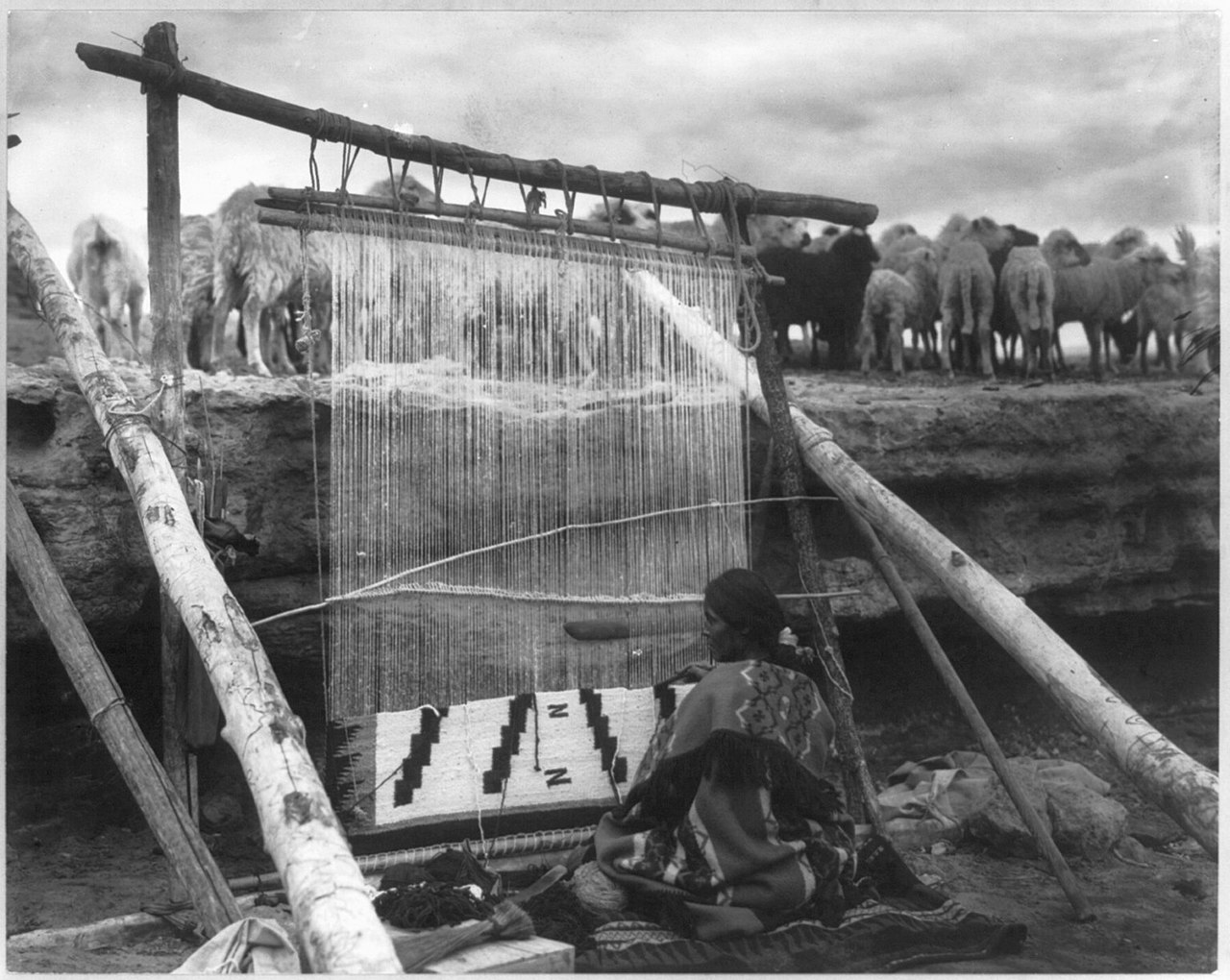 Carpenter, William J, Wikimedia Commons
Carpenter, William J, Wikimedia Commons
Social Structure
Historically, the structure of the Navajo society is largely a matrilineal system, in which the family of the women owned livestock, dwellings, planting areas, and livestock grazing areas.
Aside from that, there are other considerations taken in regards to their social structure.
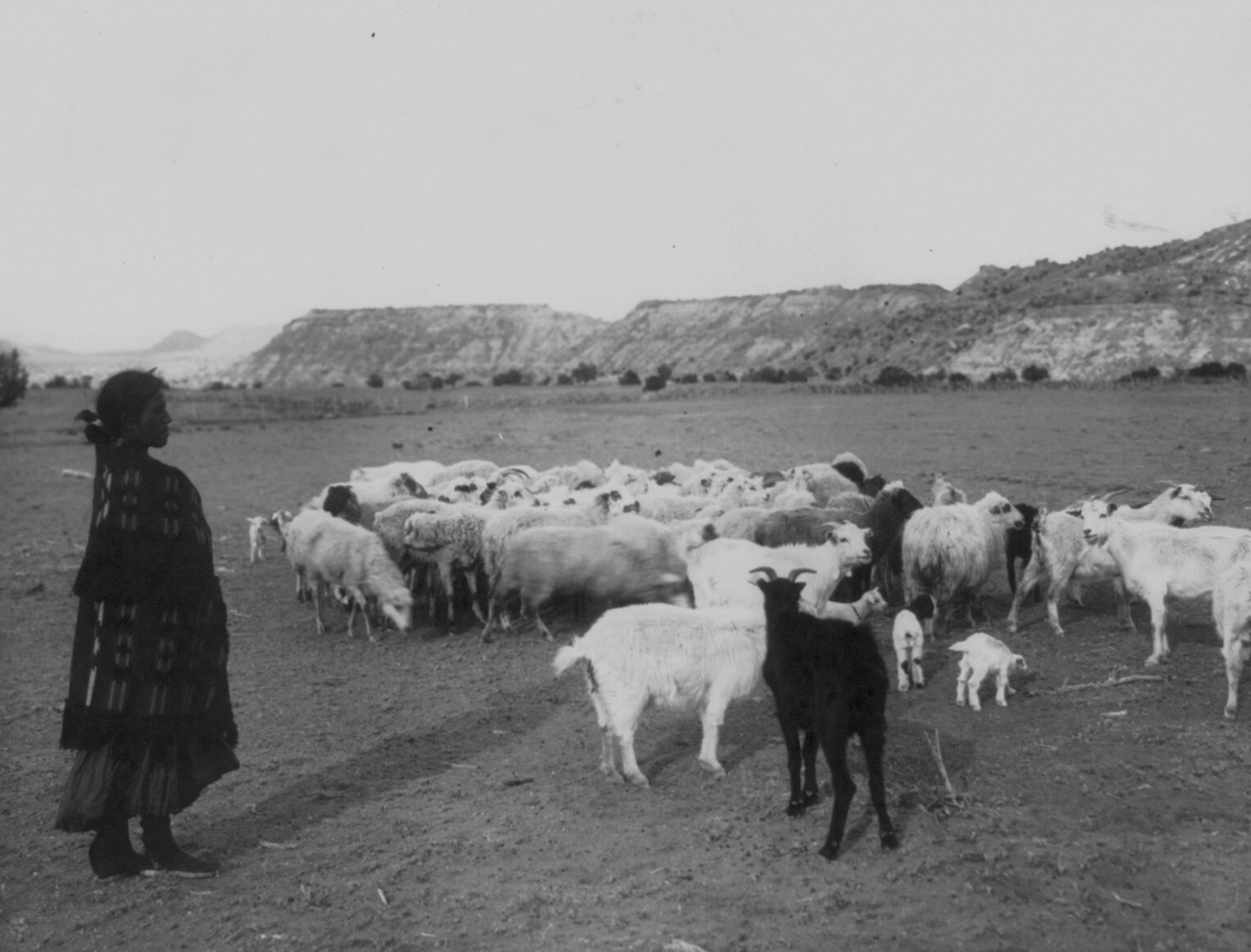 Carpenter, William J., Wikimedia Commons
Carpenter, William J., Wikimedia Commons
Clans
There is a system of clans or K’é that defines relationships between individuals and families. The clan system is exogamous: people can only marry (or date) partners outside their own clans, which for this purpose include the clans of their four grandparents.
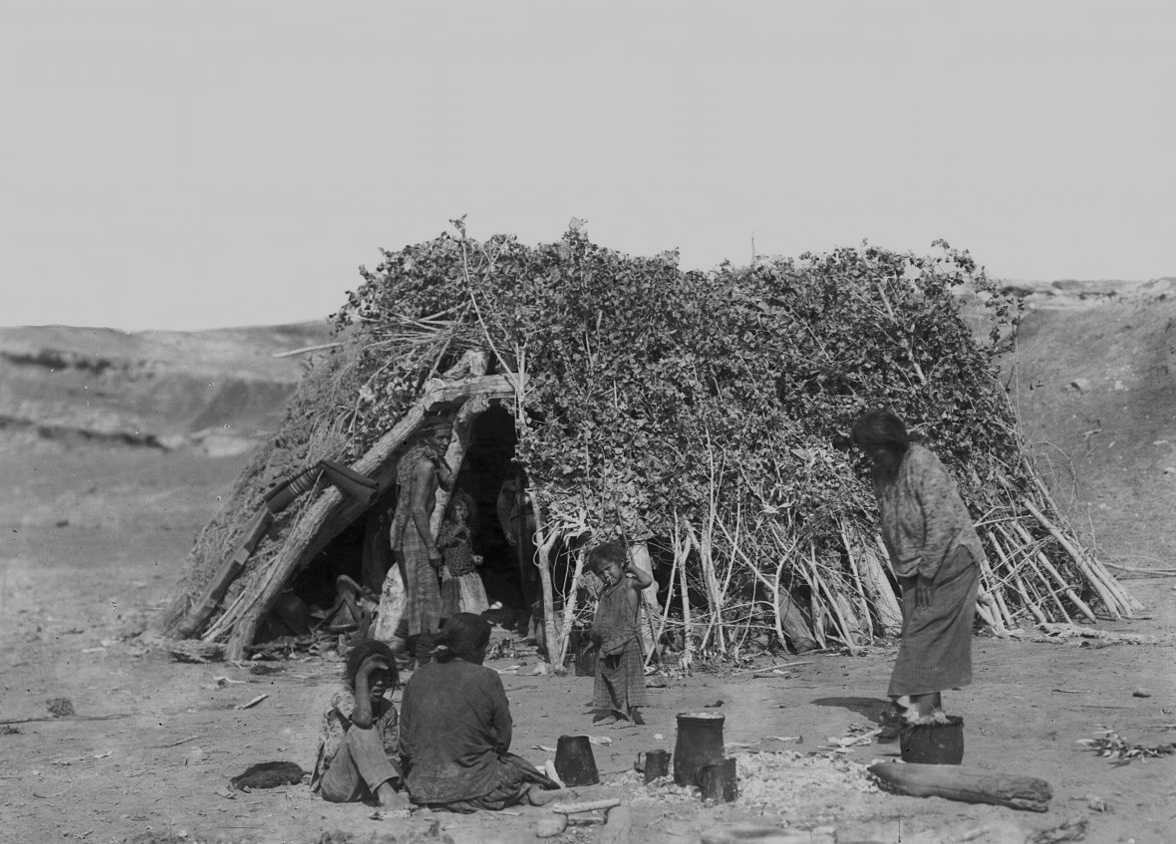 George Wharton James, Wikimedia Commons
George Wharton James, Wikimedia Commons
Clan Bonds
Some Navajos favor their children to marry into their father's clan. While clans are associated with a geographical area, the area is not for the exclusive use of any one clan. Members of a clan may live hundreds of miles apart but still have a clan bond.
Marriage
Once married, a Navajo man would follow a matrilocal residence and live with his bride in her dwelling and near her mother's family. Daughters (or, if necessary, other female relatives) were traditionally the ones who received the generational property inheritance.
In cases of marital separation, women would maintain the property and children.
Children
Children are "born to" and belong to the mother's clan, and are "born for" the father's clan. The mother's eldest brother has a strong role in her children's lives. As adults, men represent their mother's clan in tribal politics.
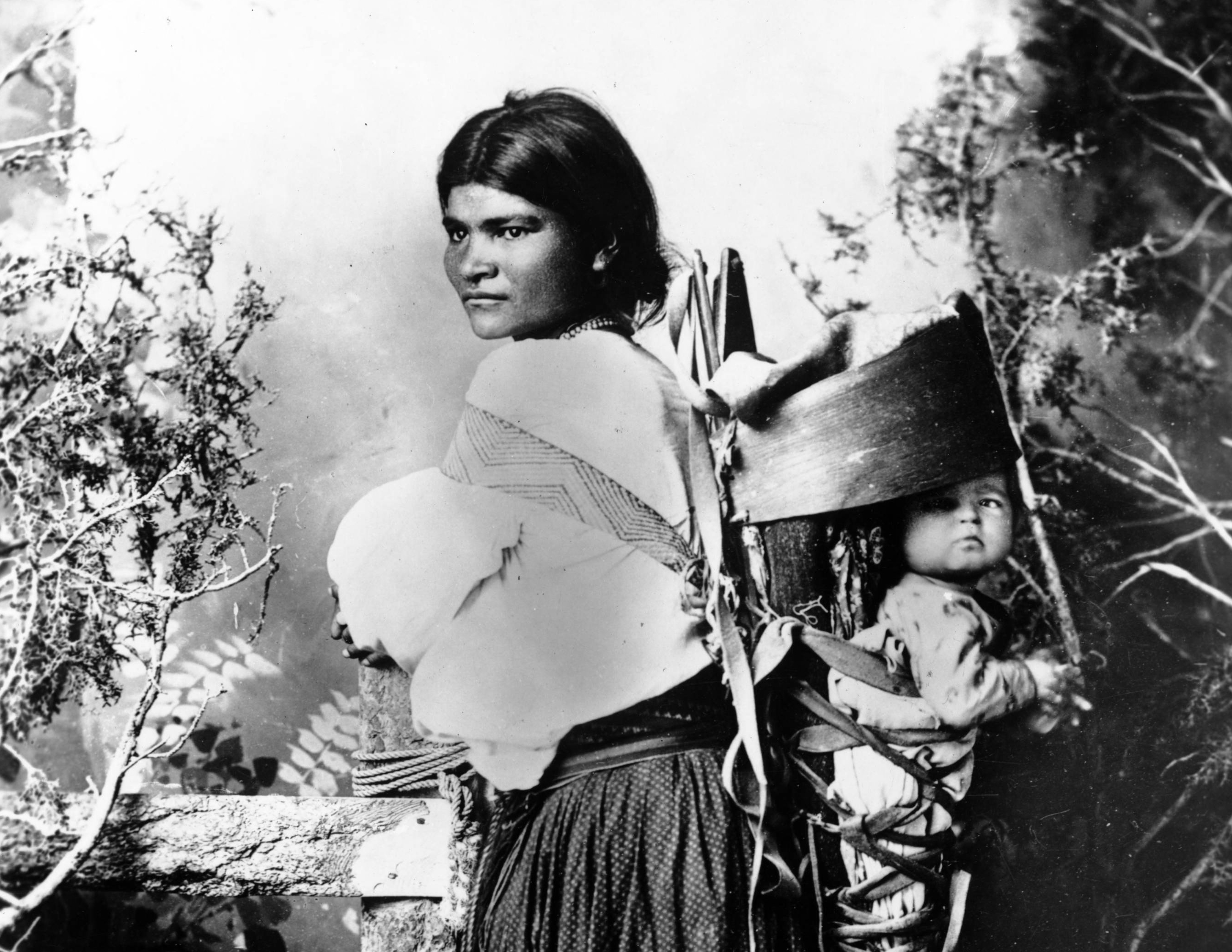 Unknown Author, Wikimedia Commons
Unknown Author, Wikimedia Commons
Original Navajo Clans
Today, there are more than 100 clans. But traditionally, there were four clans said to be the original ones, given to the Navajo from Asdzą́ą́ Nádleehé or Changing Woman.
Kinyaa’áanii - The Towering House clan
Honágháahnii - One-walks-around clan
Tódich’ii'nii - Bitter Water clan
Hashtł’ishnii - Mud clan
Marriage isn’t the only activity governed by gender roles in the Navajo culture, though.
Gender Roles
Men and women are seen as contemporary equals as both males and females are needed to reproduce—however, women’s fertility is important.
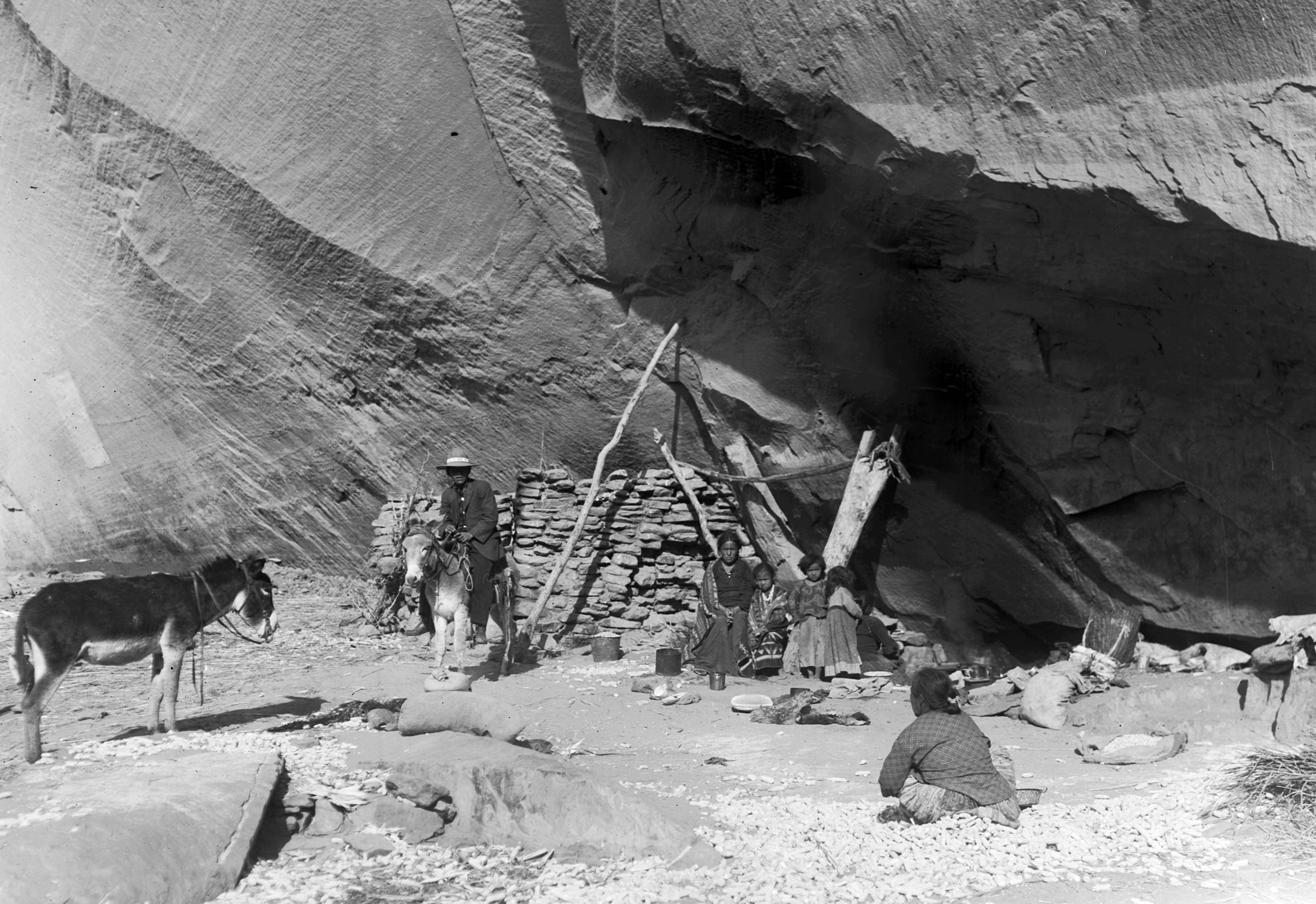 Pierce, C.C, Wikimedia Commons
Pierce, C.C, Wikimedia Commons
Fertility
Although women may carry a bigger burden, fertility is so highly valued that males are expected to provide economic resources (known as bride wealth).
It is considered to be immoral and/or stealing if one does not provide for the other in that premarital or marital relationship.
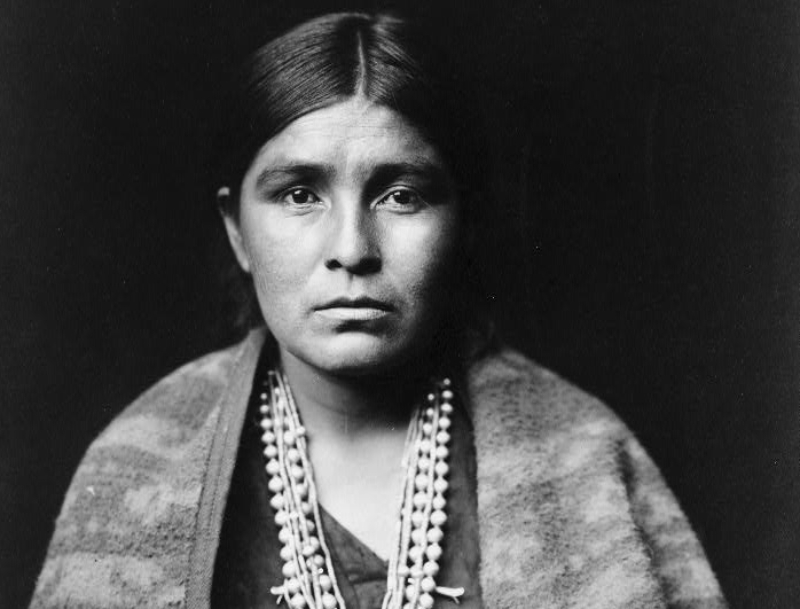 Curtis, Edward S., Wikimedia Commons
Curtis, Edward S., Wikimedia Commons
The Fertility Symbol
In regards to fertility, Corn is a symbol of fertility in Navajo culture, so much so that they eat white corn during their wedding ceremonies to encourage fertility.
That’s not all corn is valued for, though.
Significance of Corn
Corn is a central part of the Navajo, as well as other Native tribes. Corn pollen is used in daily prayers, to cure illness, and during puberty and marriage ceremonies. Corn meal or pollen can be offered to the rising sun with prayer.
Religion
Navajo spiritual practice is about restoring balance and harmony to a person's life to produce health and is based on the ideas of Hózhóójí.
Actually, it goes much deeper than this.
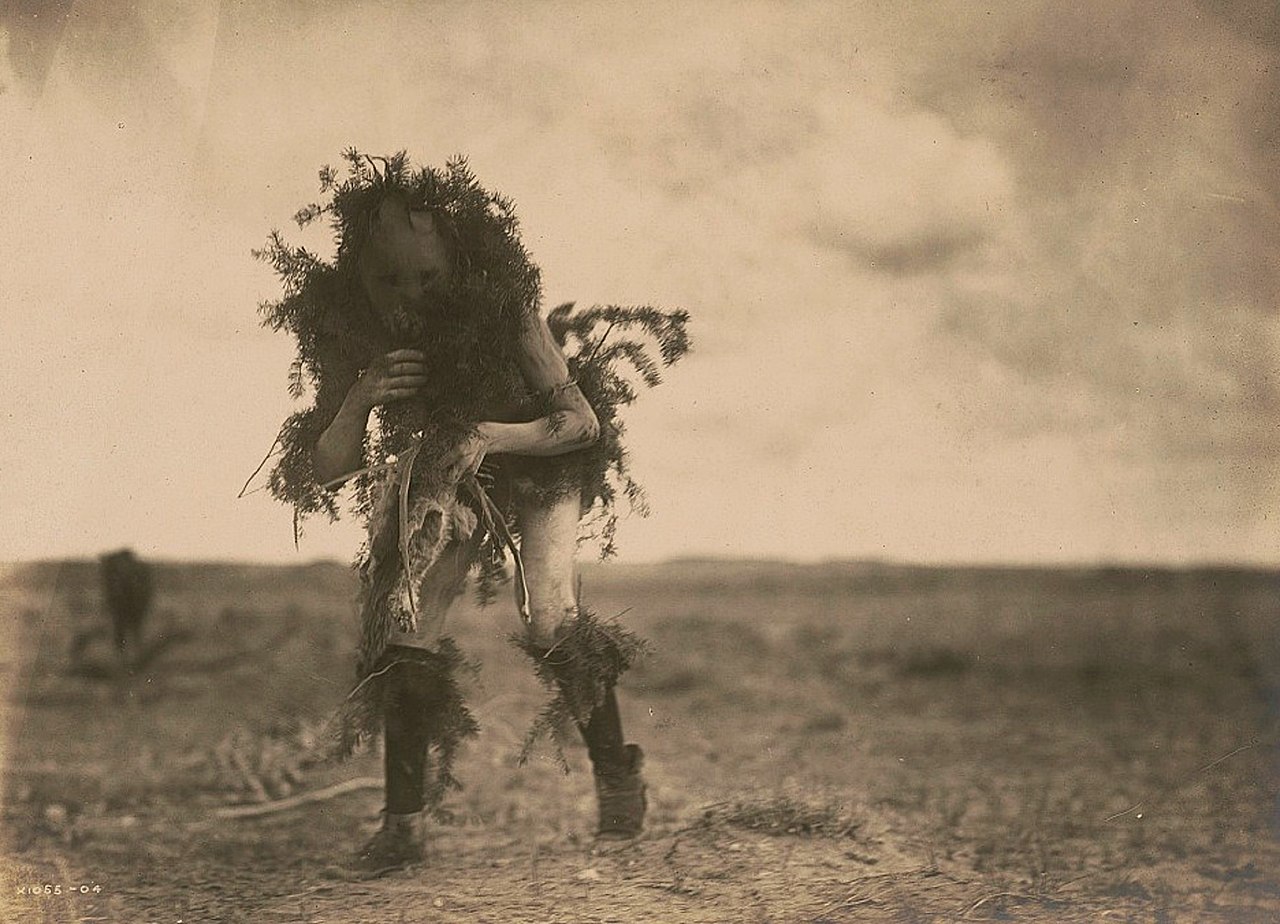 Midnight Believer, Wikimedia Commons
Midnight Believer, Wikimedia Commons
Spiritual Beliefs
Navajo religion is widely practiced and notable for its intricacy. Some of its many traditions relate to the emergence of the first people from various worlds beneath the surface of the earth.
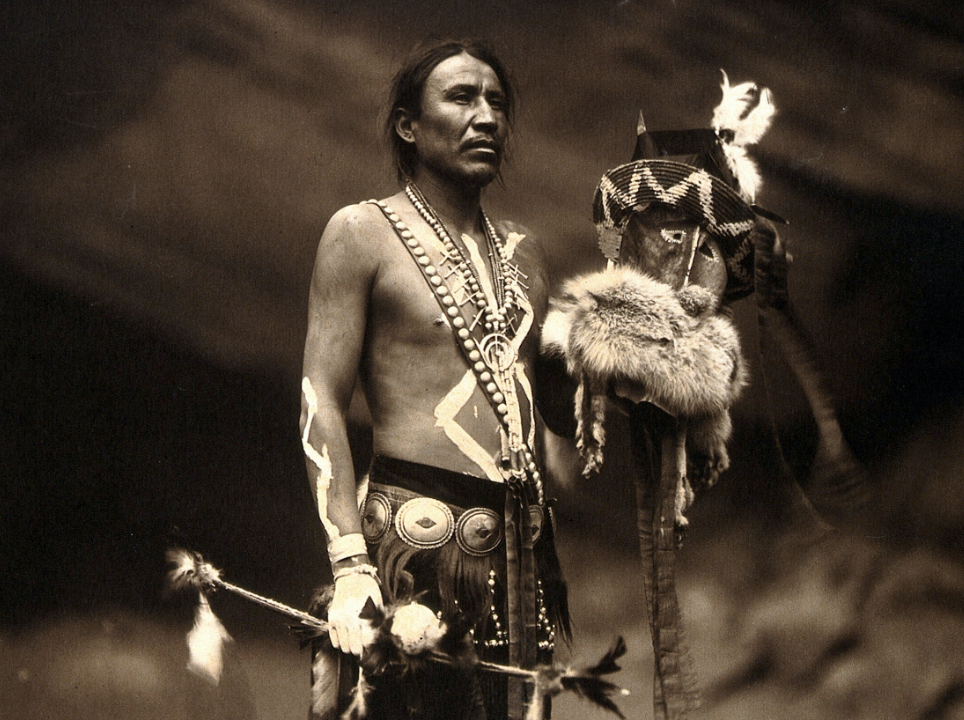 Unknown Author, CC BY 4.0, Wikimedia Commons
Unknown Author, CC BY 4.0, Wikimedia Commons
Navajo Creation Beliefs
The Navajo people believe they passed through three worlds before arriving in this world, the Fourth World or the Glittering World.
They also believe in two classes of people: Earth People and Holy People.
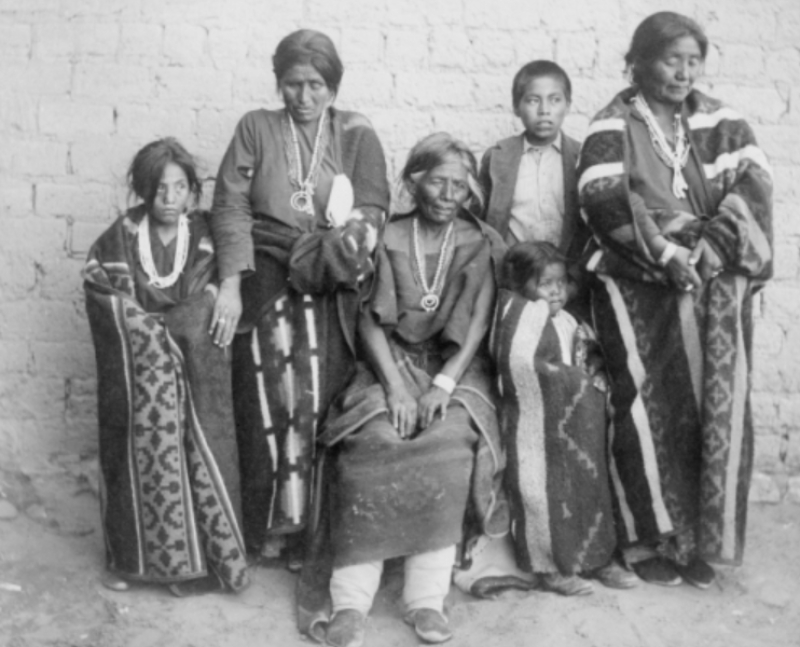 Unknown Author, Wikimedia Commons
Unknown Author, Wikimedia Commons
Earth People
Earth People, the Navajo must do everything within their power to maintain the balance between Mother Earth and man.
They’re also expected to keep a positive relationship between them and the Diyin Diné —the four inhabitants of the First World (also called the Dark World.)
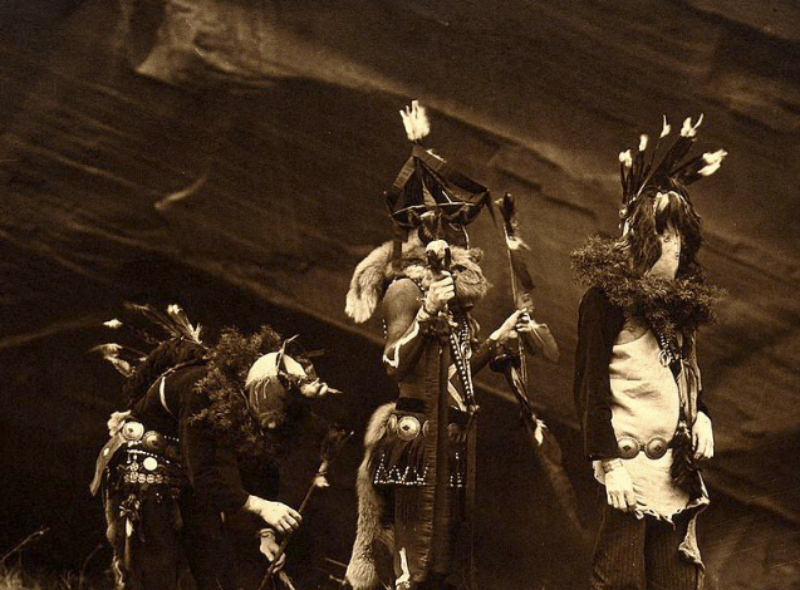 Edward S. Curtis, CC BY 4.0, Wikimedia Commons
Edward S. Curtis, CC BY 4.0, Wikimedia Commons
The First World (Dark World)
The First World is also where the First Woman and the First Man came into existence. Because the world was so dark, life could not thrive there and they had to move on.
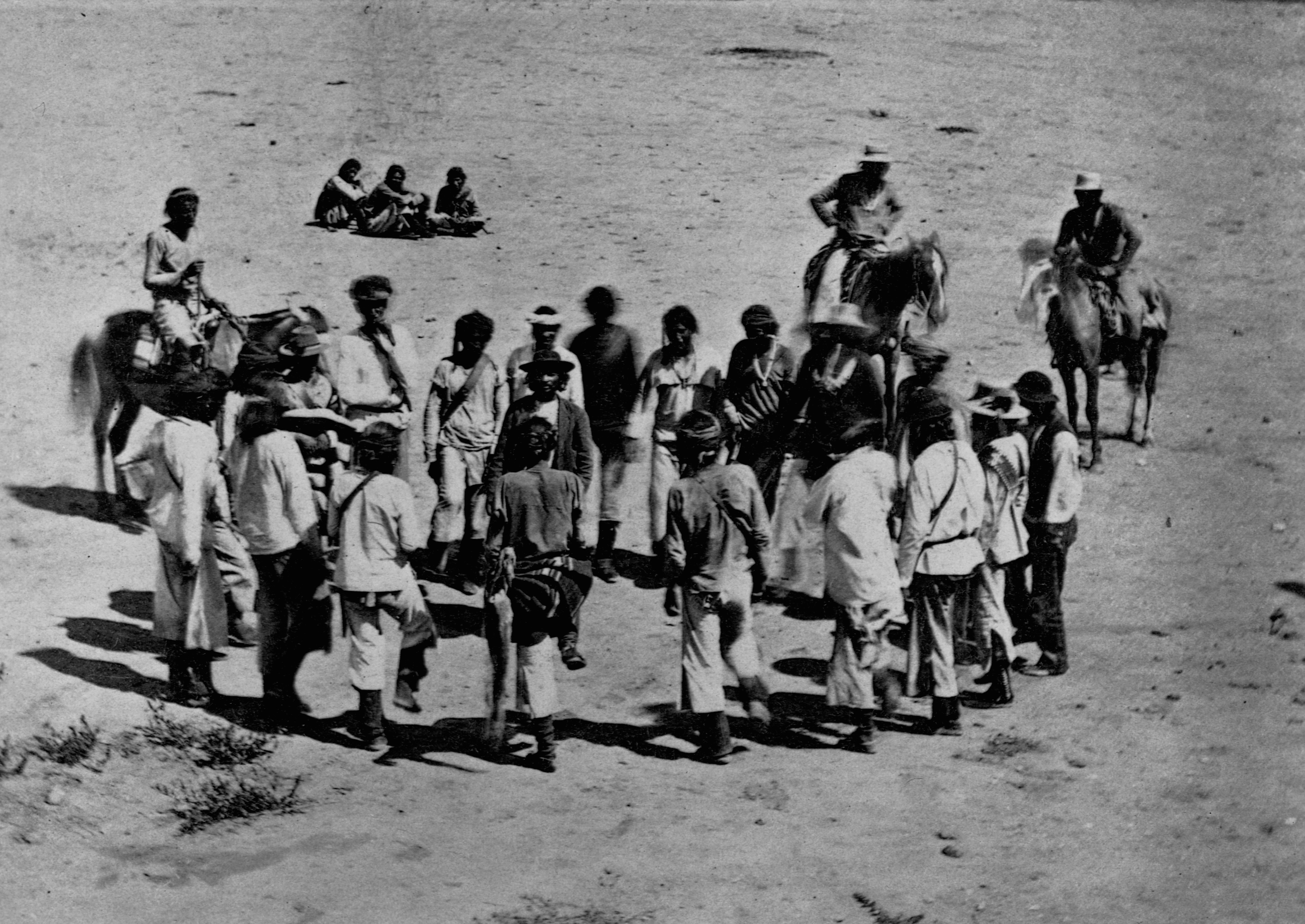 Library of Congress, Getty Images
Library of Congress, Getty Images
The Second World (Blue World)
The Second World (also called the Blue world) was inhabited by a few of the mammals' Earth People know today as well as the Swallow Chief, or Táshchózhii.
The First World beings offended him and had to move on to the Third World.
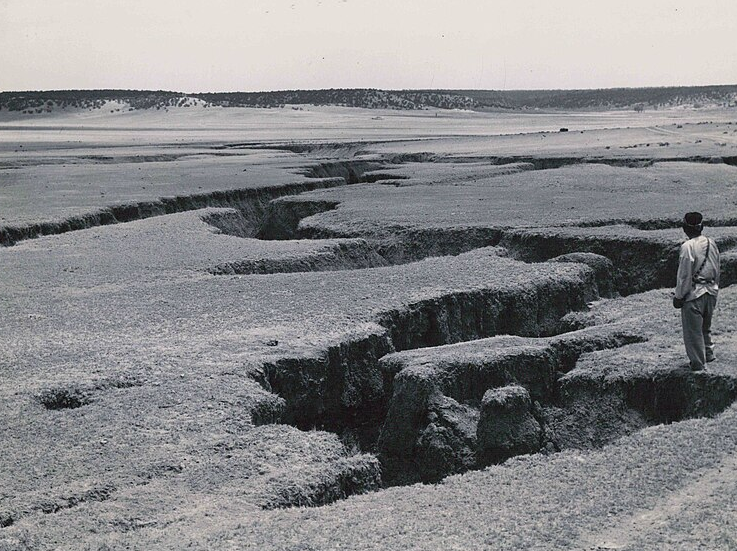 Unknown Author, Wikimedia Commons
Unknown Author, Wikimedia Commons
The Third World (Yellow World)
The Third World (also called the Yellow World) is where they found the Four Sacred Mountains. But due to a great flood, First Woman, First Man, and the Holy People were forced to find another world to live in.
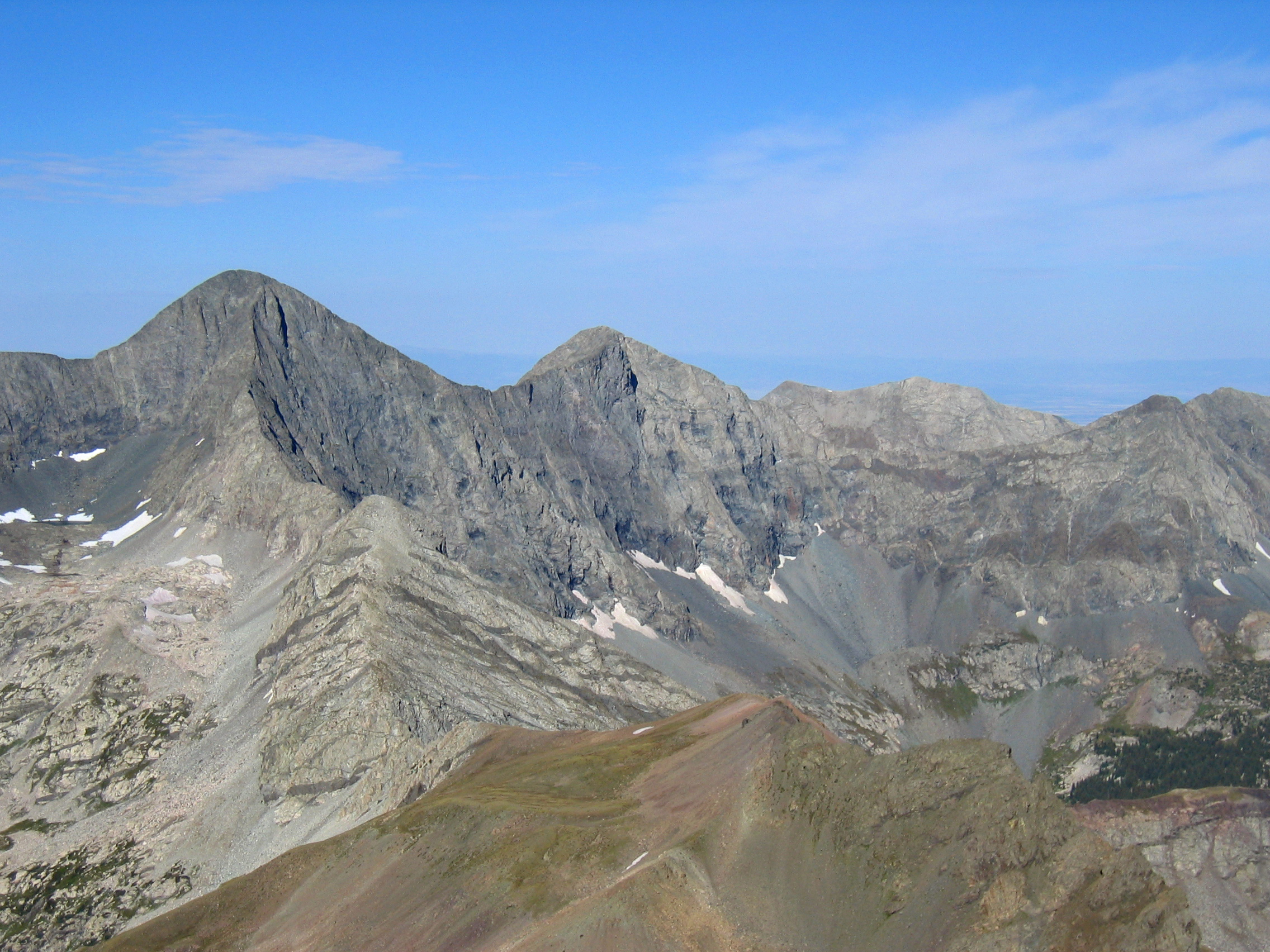 Meniscus~commonswiki, CC BY-SA 3.0, Wikimedia Commons
Meniscus~commonswiki, CC BY-SA 3.0, Wikimedia Commons
The Fourth World (Glittering World)
This time, when they arrived, they stayed in the Fourth World. In the Glittering World, true death came into existence, as well as the creation of the seasons, the moon, stars, and the sun.
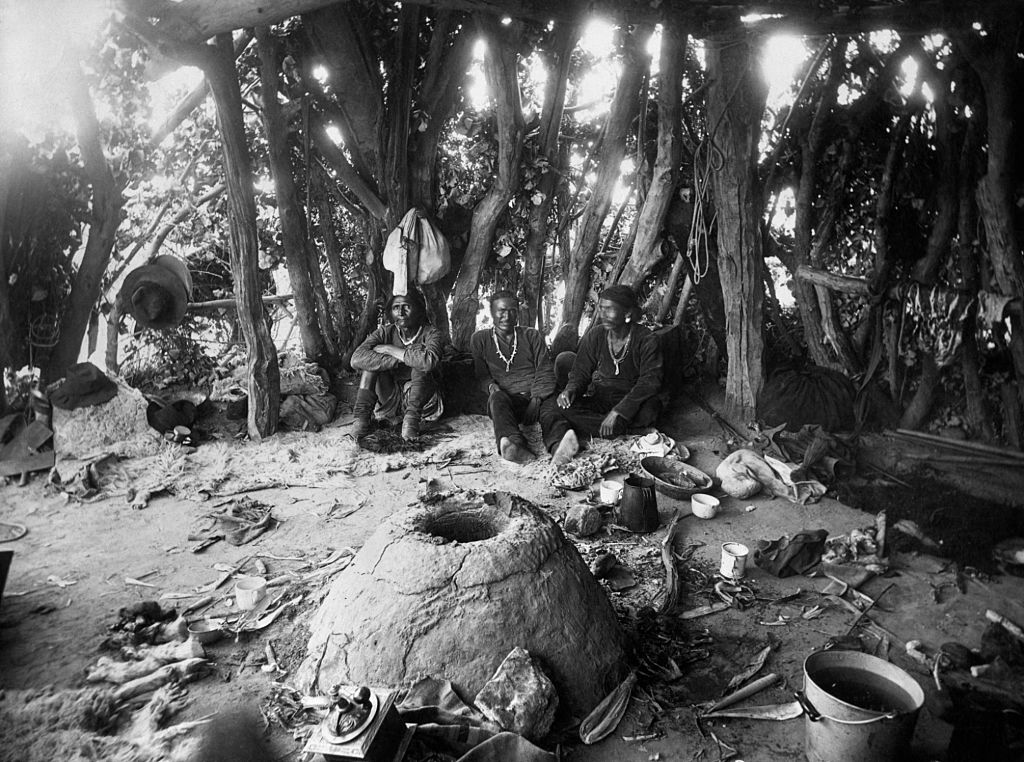 H. Armstrong Roberts, Getty Images
H. Armstrong Roberts, Getty Images
Final Homeland
The Holy People, or Diyin Diné, had instructed the Earth People to view the four sacred mountains as the boundaries of the homeland in which they should never leave.
This included Blanca Peak in Colorado, Mount Taylor in New Mexico, San Francisco Peaks in Arizona, and Hesperus Mountain in Colorado.
The Four Sacred Mountains
Times of day, as well as colors, are used to represent the four sacred mountains. As well, the importance of a specific number is emphasized in the Navajo religion—the number four, which appears to be sacred to their practices.
Four times of day, four colors, four original clans, and four original songs.
Religious Rites and Ceremonies
Some of the Navajo religious rites and ceremonies are simple rituals carried out by individuals or families for luck in travel and trade or for the protection of crops and herds.
Complex Rituals
More-complex rites involve a specialist who is paid according to the length and complexity of the ceremony—this is more typical in regards to curing physical and mental illnesses.
Traditional Ceremonies
Many other ceremonies were simply prayers, songs and dances that were accompanied by dry paintings made of pollen and flower beds.
In some cases, hundreds and even thousands of Navajo people are in attendance—and these ceremonies are still performed today.
Tribal Raids
Although the Navajo never raided as extensively as their neighboring tribes, like the Apache, their raiding was serious enough that there is now a term used to describe major conflicts they were involved in.
The Navajo Wars
The “Navajo Wars” began back in the 16th century and included three distinct periods of conflict in the American West: the Navajo against the Spanish (late 16th century through 1821); the Navajo against the Mexican government (1821 through 1848); and the Navajo against the United States (after the 1847–48 Mexican–American War).
Raids & Expeditions
These conflicts ranged from small-scale raiding to large expeditions mounted by governments into territory controlled by the Navajo.
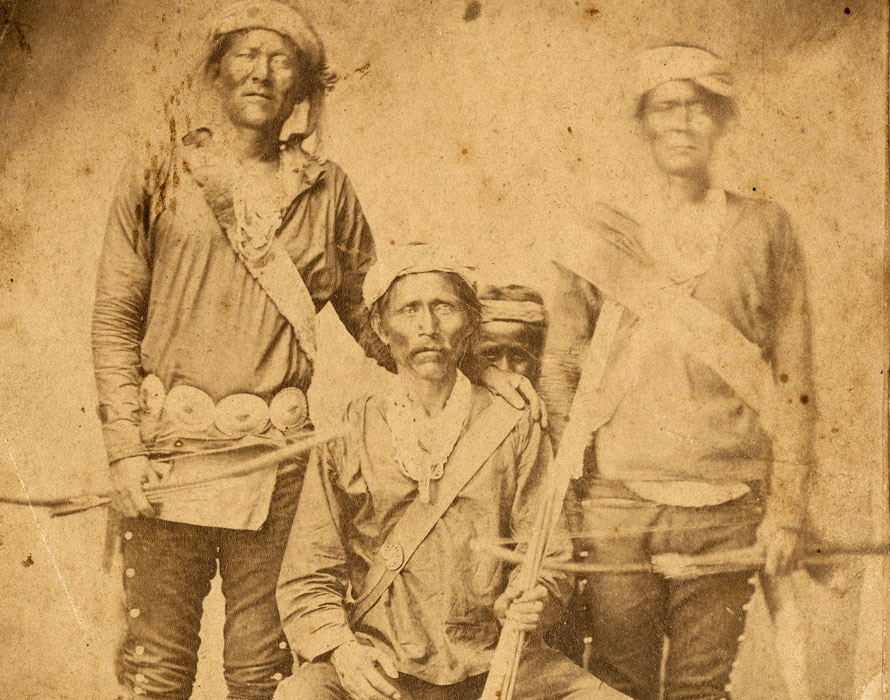 Unknown author, Wikimedia Commons
Unknown author, Wikimedia Commons
Tribal Raids
During this time, the Navajo raided other tribes and nearby settlements, who in return raided into Navajo territory, creating a cycle of raiding that perpetuated the conflict.
Coexisting with the Spanish
For the most part, the Navajo had a tense but largely peaceful coexistence with the Spanish. It wasn't until the American settlers began arriving in stronger numbers during the 1840s that conflict started to rise to higher levels.
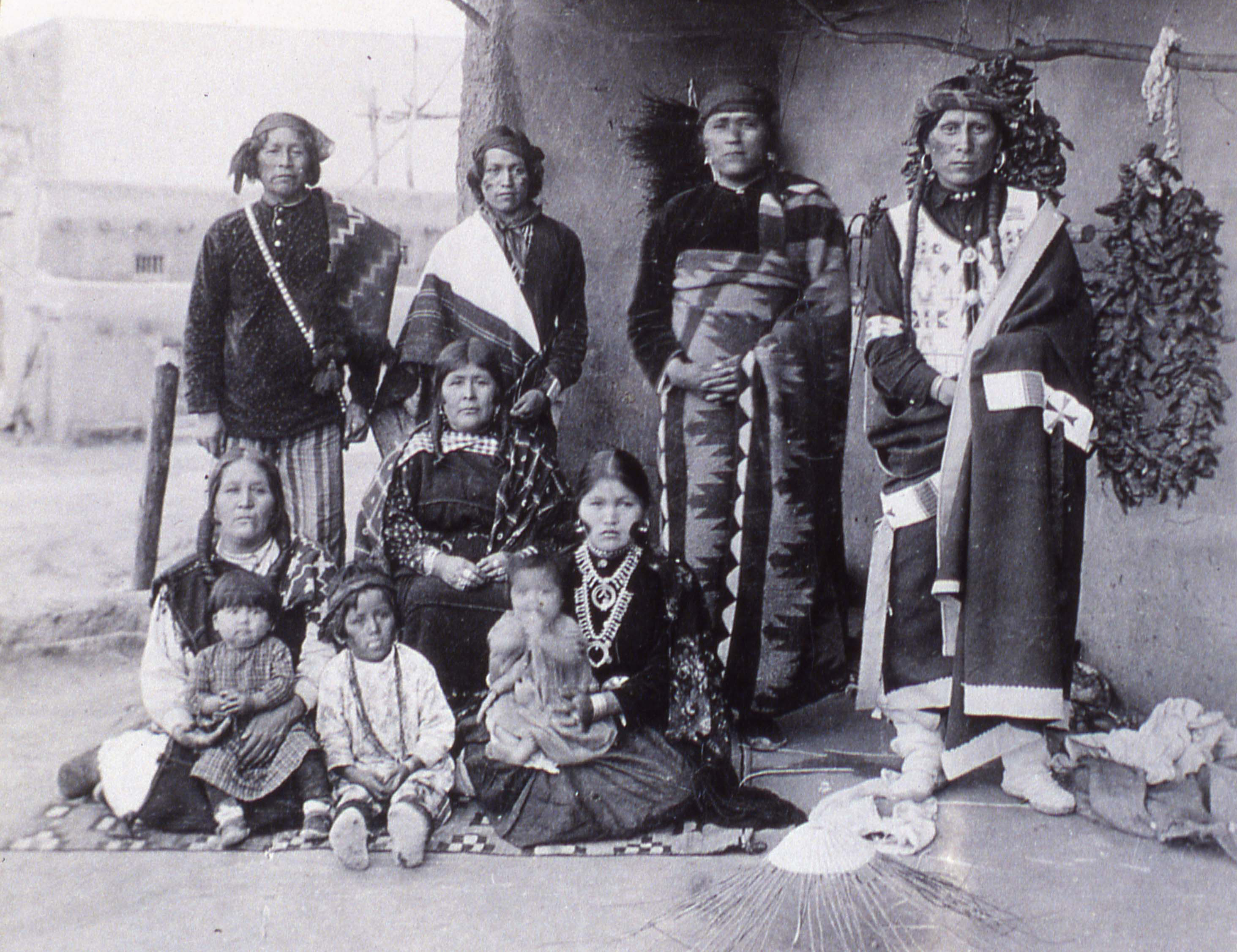 Transcendental Graphics, Getty Images
Transcendental Graphics, Getty Images
The Mexican-American War
During the Mexican-American War of 1846, the United States invaded Mexico, which involved numerous large-scale battles.
At this time, the Navajo signed a peace treaty with the U.S. Army—though it was broken by members of both sides during the conflict.
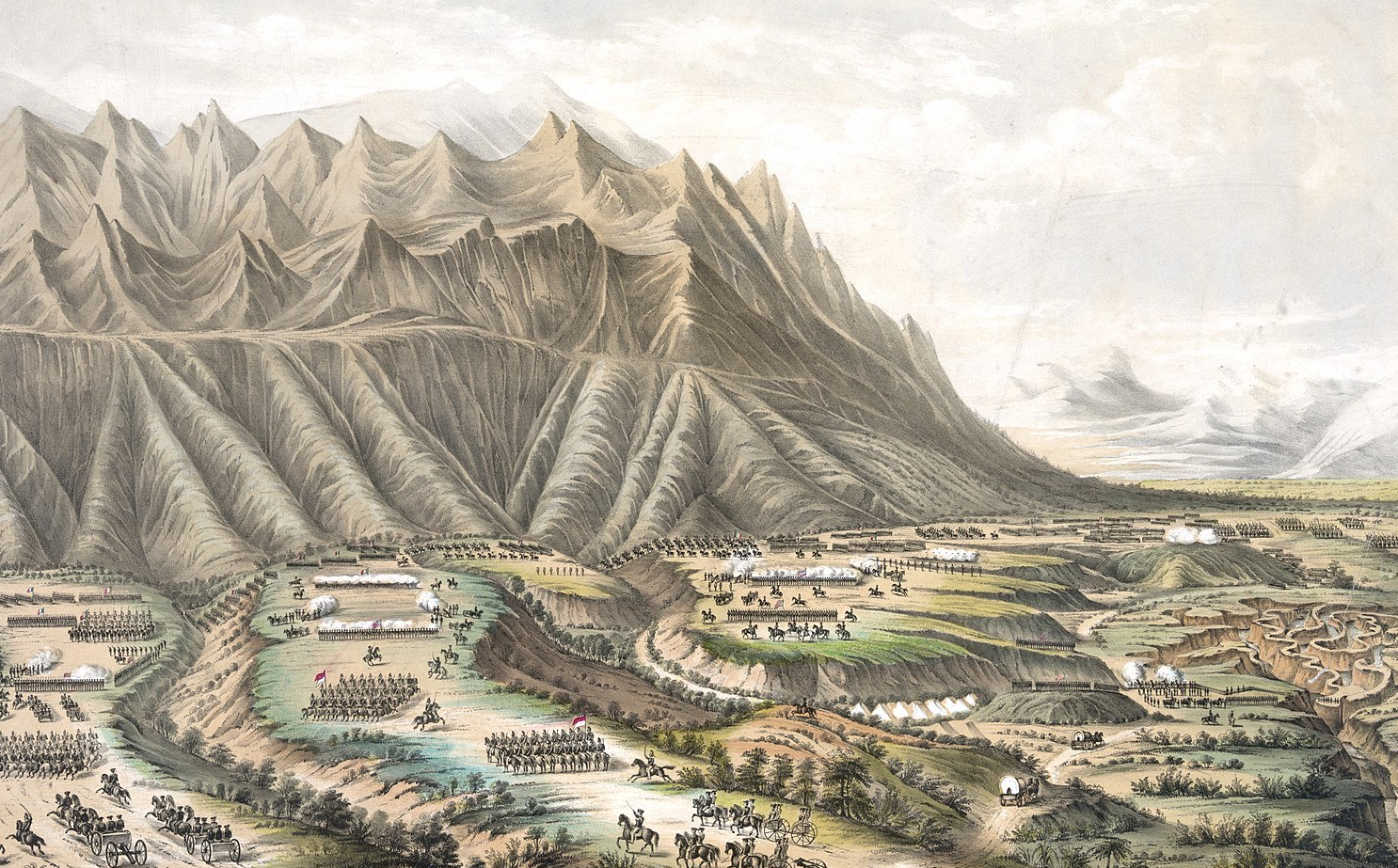 Henry R. Robinson, Wikimedia Commons
Henry R. Robinson, Wikimedia Commons
Peace Treaties
Numerous attempts at peace were made, including one in 1849 between the military governor or New Mexico and two Navajo chiefs.
The treaty acknowledged jurisdiction transfers and allowed forts and trading posts to be built on Navajo land in exchange for various donations and liberal and humane measures deemed proper.
Unfortunately, fate had other plans.
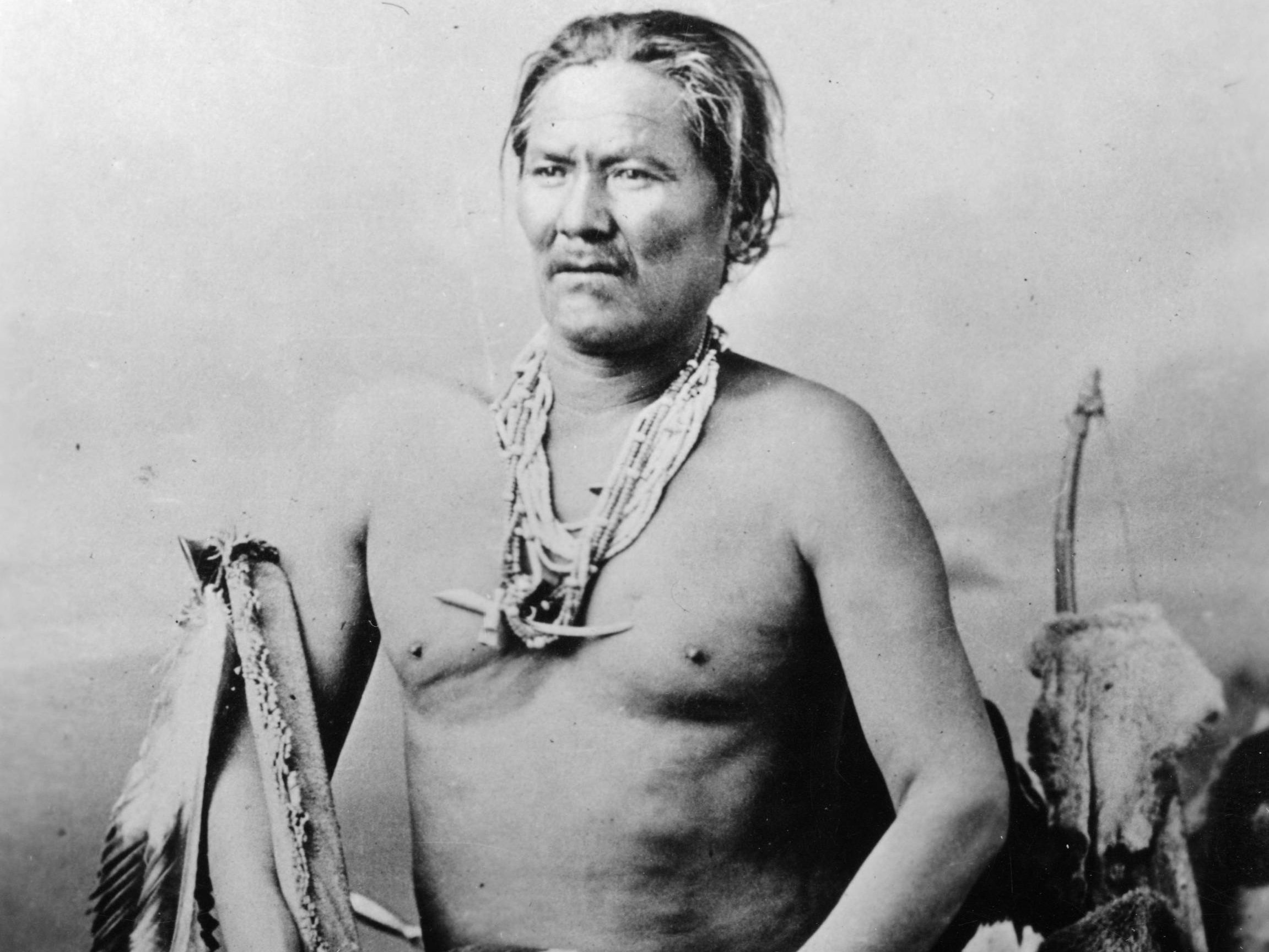 Unknown Author, Wikimedia Commons
Unknown Author, Wikimedia Commons
A Tragic Interference
While on route to sign the treaty, prominent Navajo peace leader Narbona, was killed, causing instant hostility between the treaty parties—thus, destroying the possibility of any peace between the two.
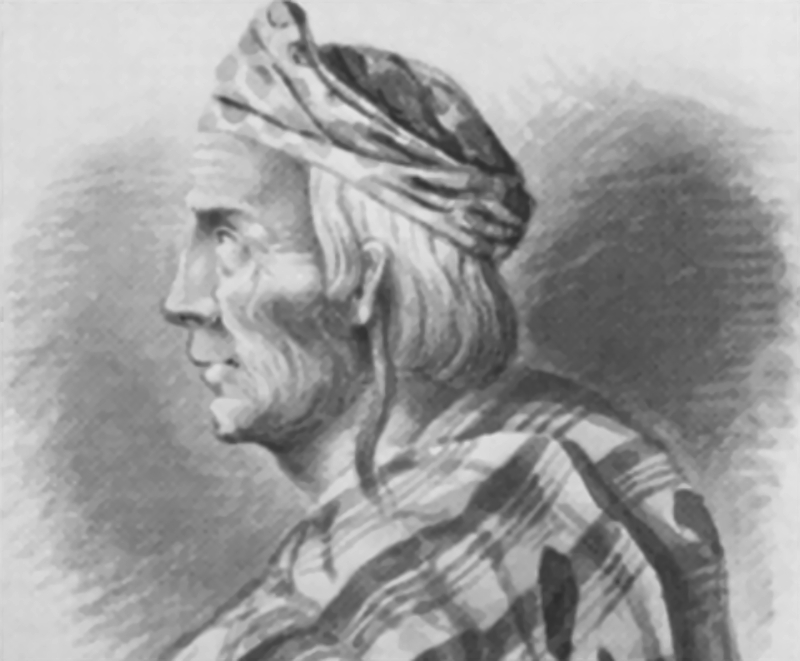 Richard H. Kern, Wikimedia Commons
Richard H. Kern, Wikimedia Commons
Precautionary Measures
Over the next decade, the U.S. army put up forts on traditional Navajo territory, claiming it to be a “precautionary measure” to protect both citizens and the Navajos from each other.
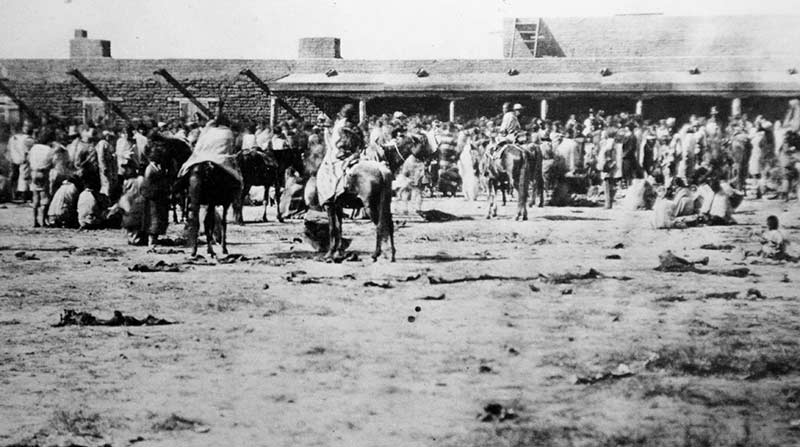 Unknown author, Wikimedia Commons
Unknown author, Wikimedia Commons
The Fearing Time
However, heinous battles continued and many Navajo warriors lost their lives and their women and children became slaves. Their crops and dwellings were destroyed.
The Navajos call this period Naahondzood, "the fearing time."
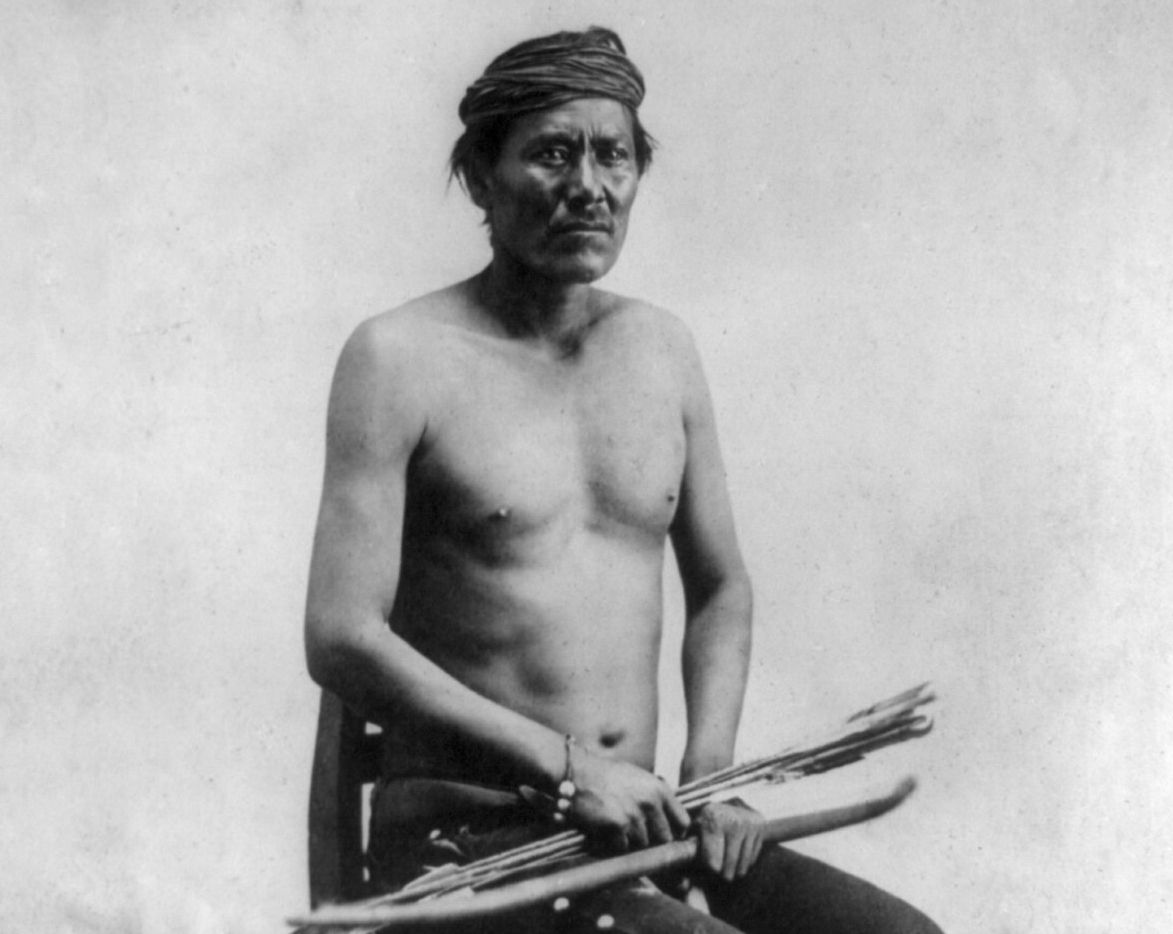 Meem, John Gaw, Wikimedia Commons
Meem, John Gaw, Wikimedia Commons
The Apache Tribe’s Surrender
In 1861, U.S. army commanders ordered the complete take down of the neighboring Apache tribe, including ending their lives and destroying their property. The scare tactic worked, and the tribe surrendered.
The Navajo tribe was next.
The Attack
Two years later, the Navajo met a similar fate. The U.S. army swept through Navajo lands, taking lives, destroying dwellings, fouling wells, and capturing livestock.
Survivors facing starvation and imminent death, fled in search of safety.
Surrender
Not too long later, some Navajo survivors felt trapped and ended up surrendering and joining the Apache tribe at their newly appointed reservation.
But that was certainly not the end.
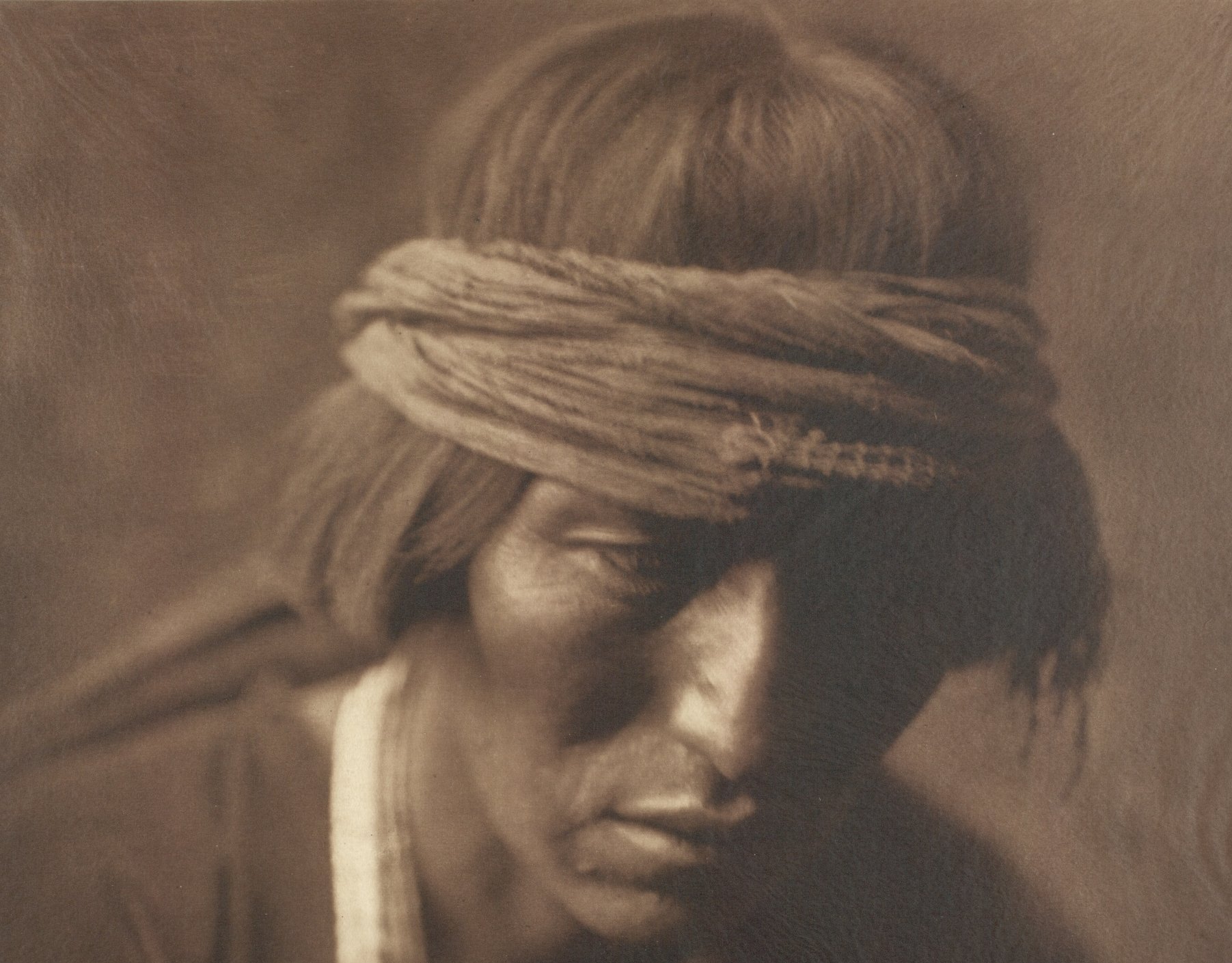 Smithsonian Libraries and Archives, Wikimedia Commons
Smithsonian Libraries and Archives, Wikimedia Commons
Hiding in Fear
Not all Navajos surrendered—many of them hid near rivers and streams, eventually joining other Apache bands. They lived as isolated as possible, constantly in fear or capture.
Sadly, their fears came true.
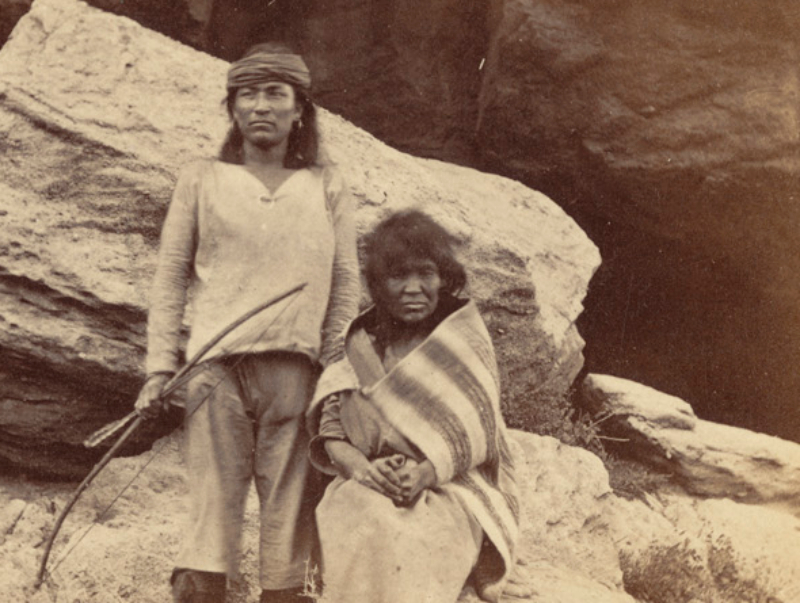 Boston Public Library, CC BY 2.0, Wikimedia Commons
Boston Public Library, CC BY 2.0, Wikimedia Commons
A Significant Moment in History
In late 1863, the U.S. government raided any and all lands they could, searching for Navajo people in hiding. Winter temperatures and increasing starvation left them with them without any options, and any existence of them was being destroyed.
By Spring of 1864, the official “ethnic cleansing” and deportation took place.
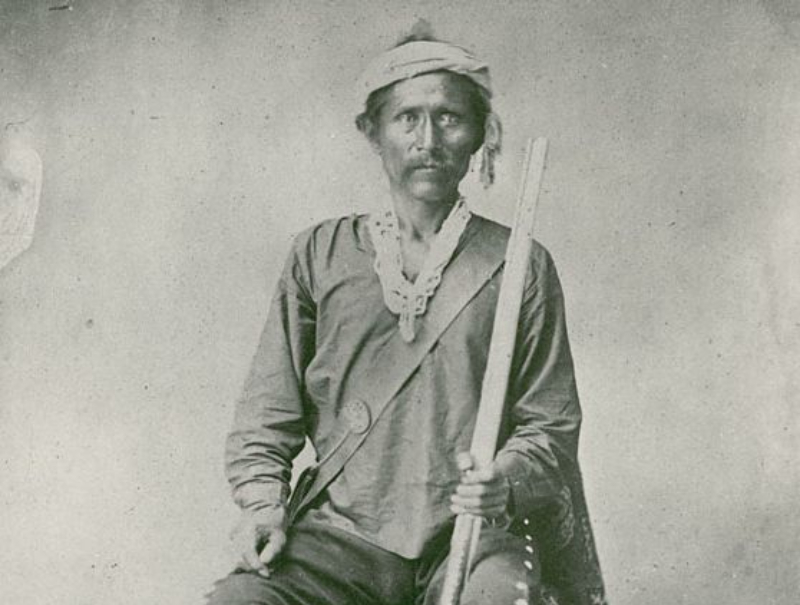 Unknown Author, Wikimedia Commons
Unknown Author, Wikimedia Commons
The Long Walk of the Navajo
The U.S. government subdued the Navajos, forcing 9,000 Navajo men, women, and children to march over 300 miles on foot, from Arizona to New Mexico to their impending imprisonment.
This excruciating journey is now known as, “The Long Walk.”
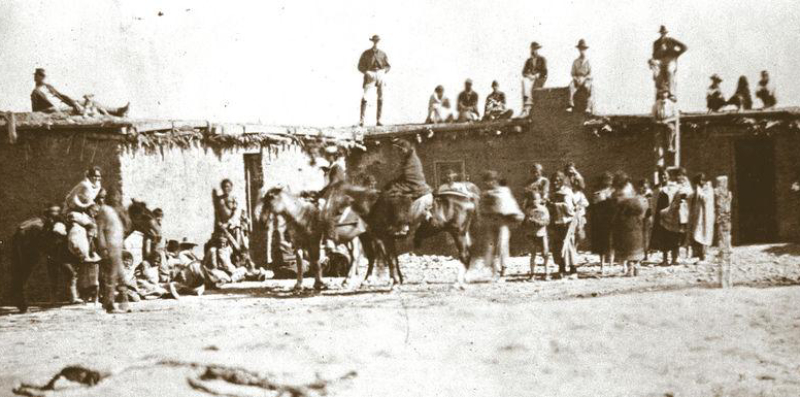 U.S. Army Signal Corps, Wikimedia Commons
U.S. Army Signal Corps, Wikimedia Commons
The Long Walk
The march was very difficult and pushed many Navajos to their breaking point. Many began the walk exhausted and malnourished, others were not properly clothed.
That’s not even the worst of it, though.
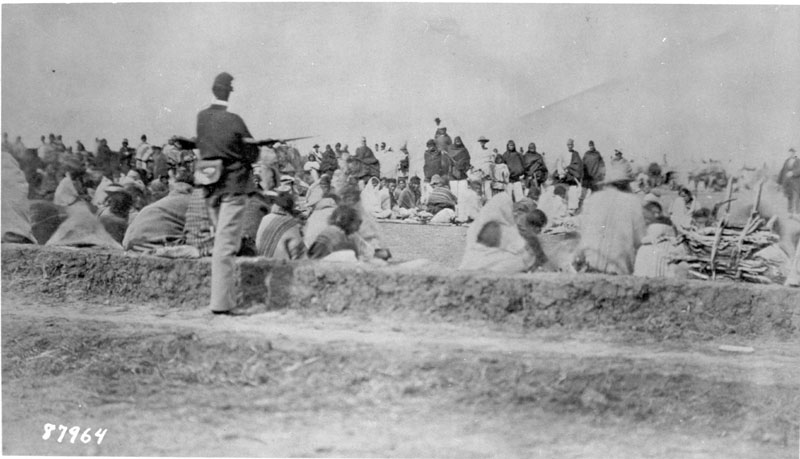 Unknown author, Wikimedia Commons
Unknown author, Wikimedia Commons
Cruel Mistreatment
American soldiers were unfairly cruel to the Navajo people during this time, inflicting pain and punishment as they struggled to walk without breaks, food, or water.
The captors were never informed as to where they were going, how long it would take, or why.
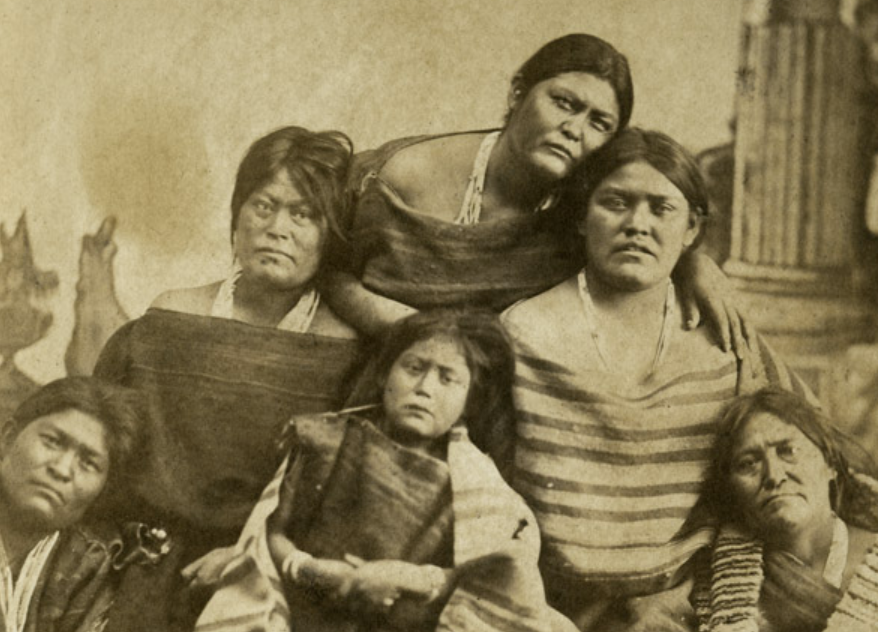 Unknown Author, Wikimedia Commons
Unknown Author, Wikimedia Commons
Survivor Accounts
One survivor account from the Navajos noted a particularly heinous moment when a young, pregnant Navajo woman had suddenly gone into labor during the walk.
The soldiers forced her parents to leave her behind, claiming they would “spare her” for the sake of keeping with their schedule.
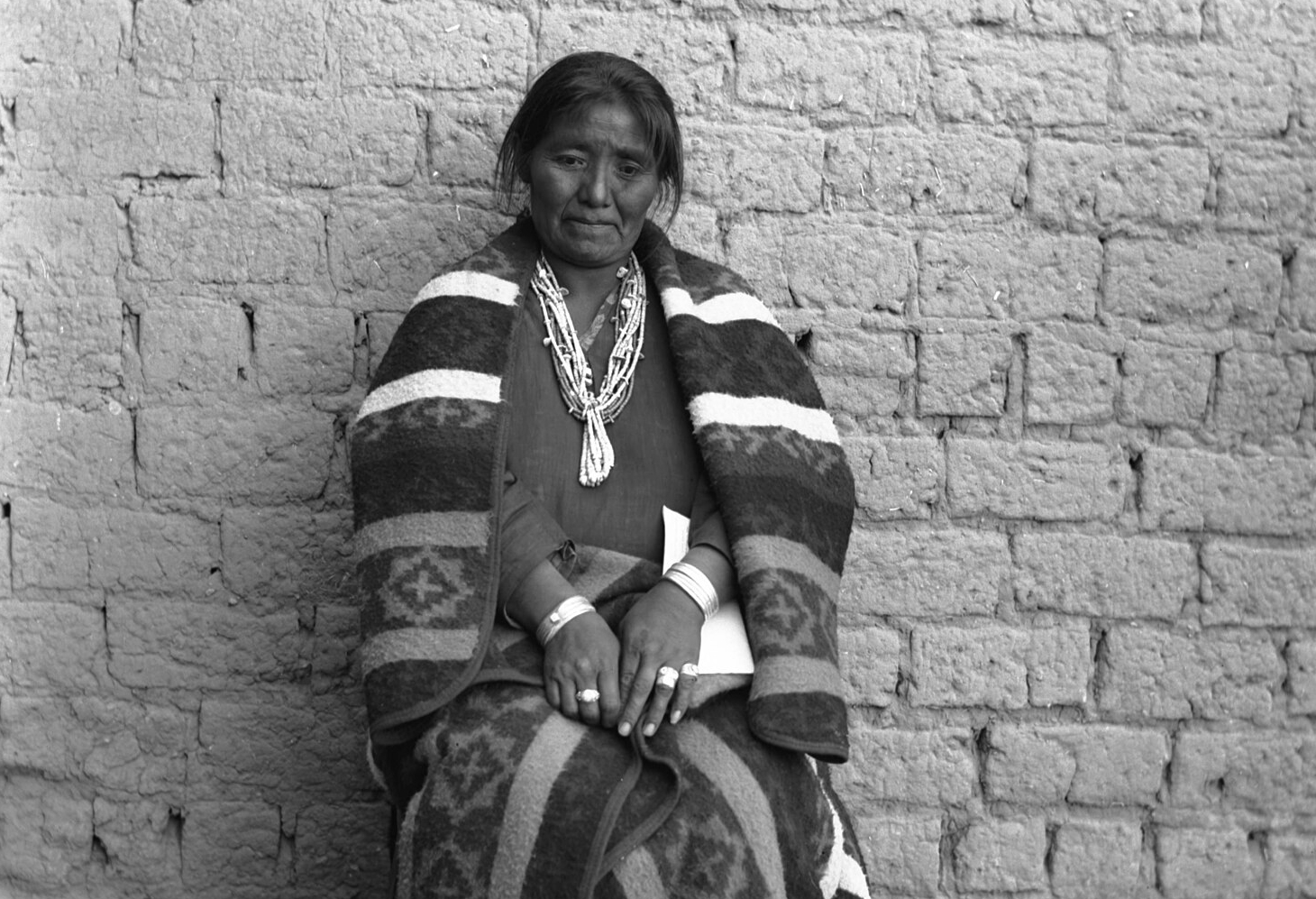 Pierce, C.C., Wikimedia Commons
Pierce, C.C., Wikimedia Commons
Unspeakable Actions
The woman had apparently reassured her parents that perhaps this would be her and her child’s saving grace. The woman was then ripped from her mother’s arms and the parents were forced to continue walking, leaving her behind.
Moments later, a soldier backtracked… and shots were heard.
Casualties
The Long Walk lasted a grueling 18 days and covered over 500 kilometers. During horrific event it is estimated that at least 200 lives were lost from starvation, exhaustion, dehydration, and at the hands of American soldiers.
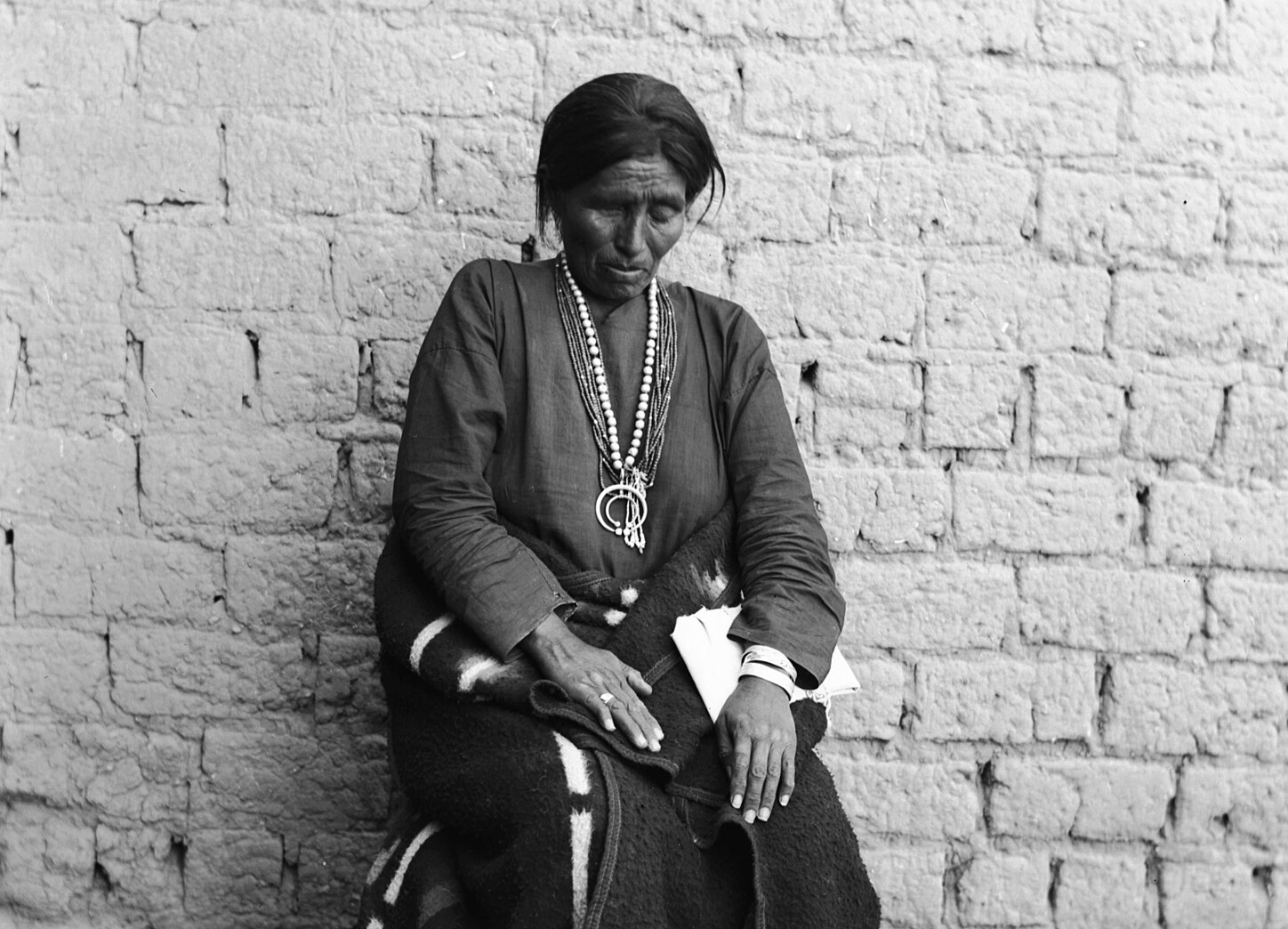 Pierce, C.C, Wikimedia Commons
Pierce, C.C, Wikimedia Commons
Groups
There were as many as 50 groups that were taken along seven known routes. They each took a different path, but on the same trail.
In total, 8,000-9,000 Navajos were settled on an area of 140-square-kilometers—but “settled” does not mean safe.
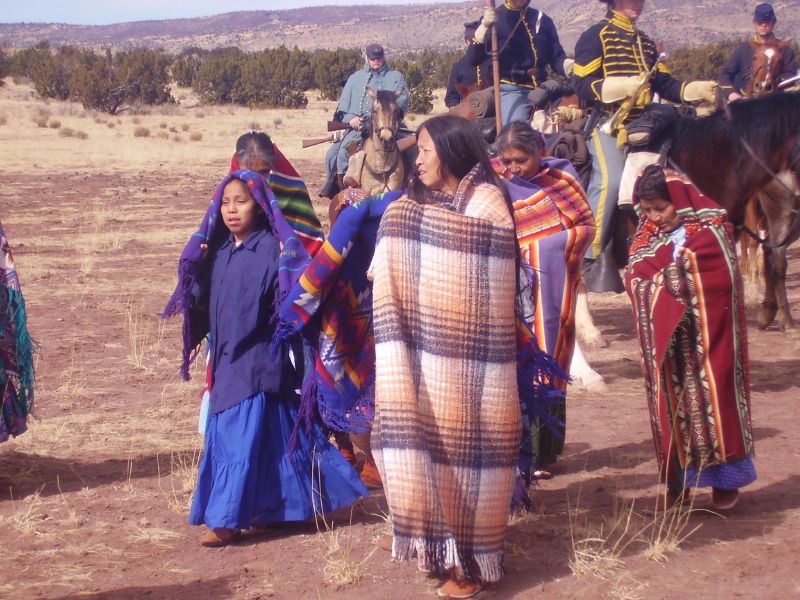 jclarson, CC BY 2.0, Wikimedia Commons
jclarson, CC BY 2.0, Wikimedia Commons
Bosque Redondo
The Navajos were brought to a reservation called Bosque Redondo. Many were sold into slavery. And the remaining were forced to settle among the Apache tribe—a traditionally known enemy of the Navajos.
This led to further struggle for the surviving Navajos.
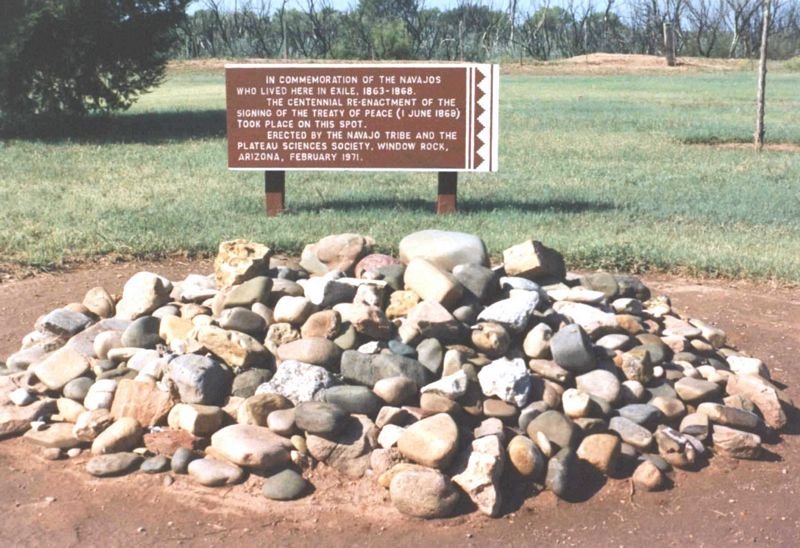 Philkon Phil Konstantin, Wikimedia Commons
Philkon Phil Konstantin, Wikimedia Commons
Tribal Conflicts
Already plagued with starvation, dehydration and exhaustion, the Navajos encountered several disputes with the Apache tribe during their encampment.
Not only that, the reservation was not equipped for the total number of people it now housed.
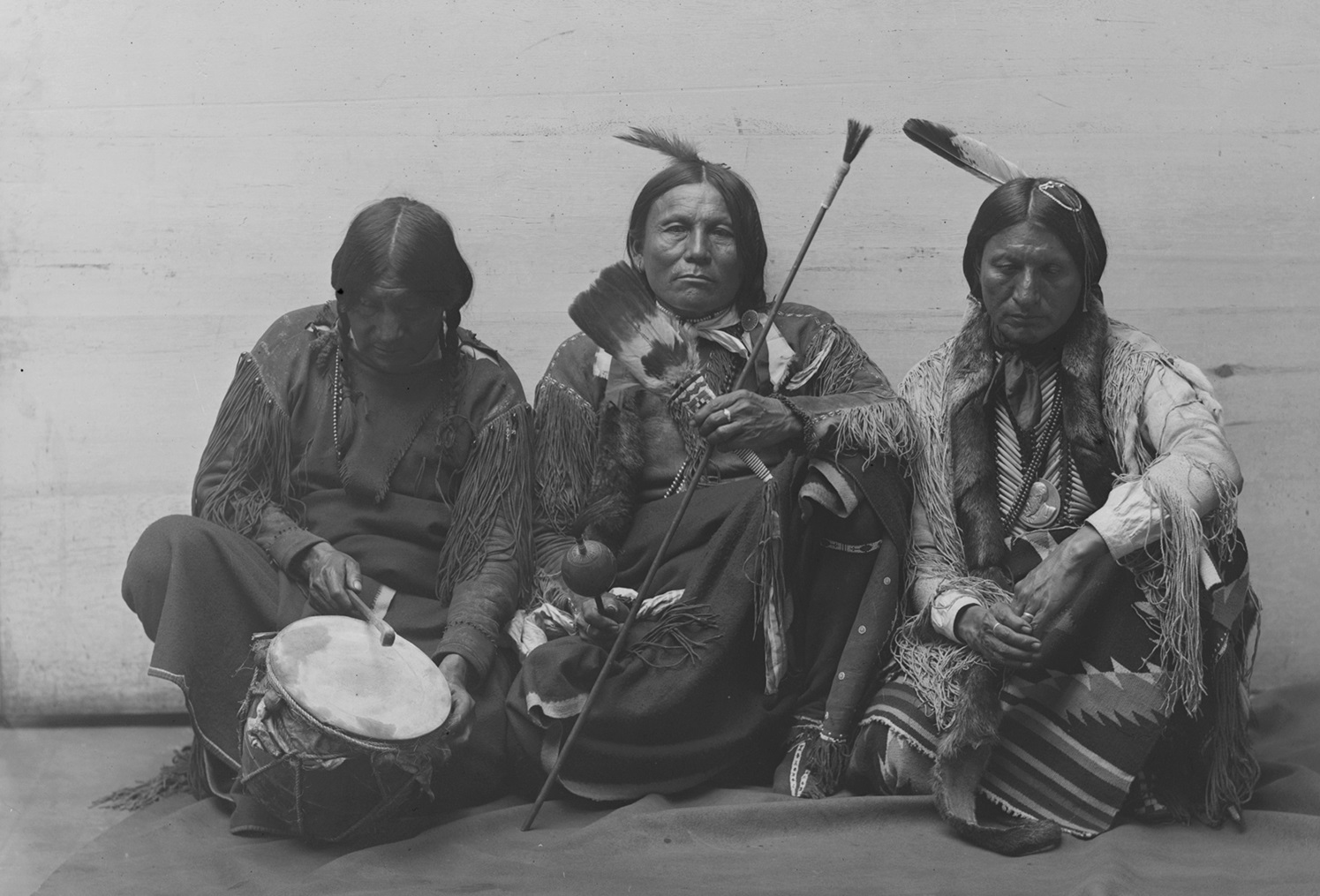 National Archives at College Park, Wikimedia Commons
National Archives at College Park, Wikimedia Commons
An Unsuitable Living Arrangement
Bosque Redondo was prepared for 5,000 people, not the 10,000 people it was now filled with. Water and firewood were major issues from the start; the water was brackish, and the round grove of trees was quite small. Crops were infested and failed repeatedly, and a flood washed out the irrigation system.
It was quickly becoming inhabitable.
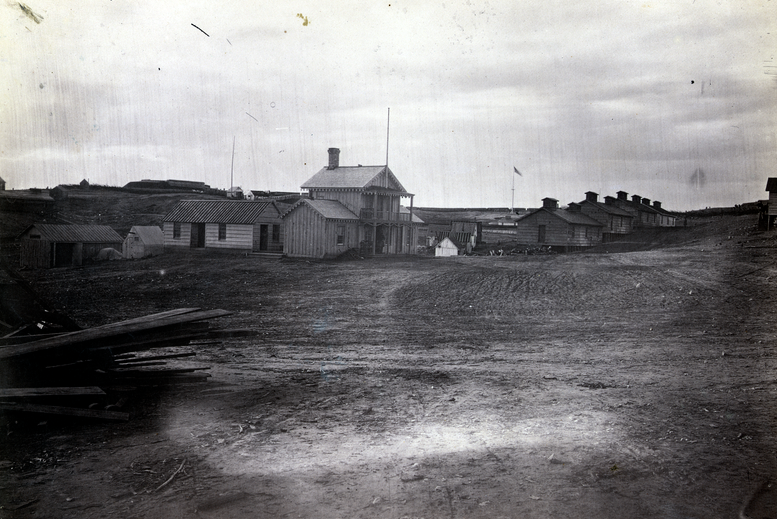 Andrew J. Russell, Wikimedia Commons
Andrew J. Russell, Wikimedia Commons
Raids and Resentment
Less than a year later, the Navajo began leaving, and by 1867 the remaining Navajo refused to plant crops. The Comanches tribe raided them often, and they raided them back—once stealing over 1,000 horses.
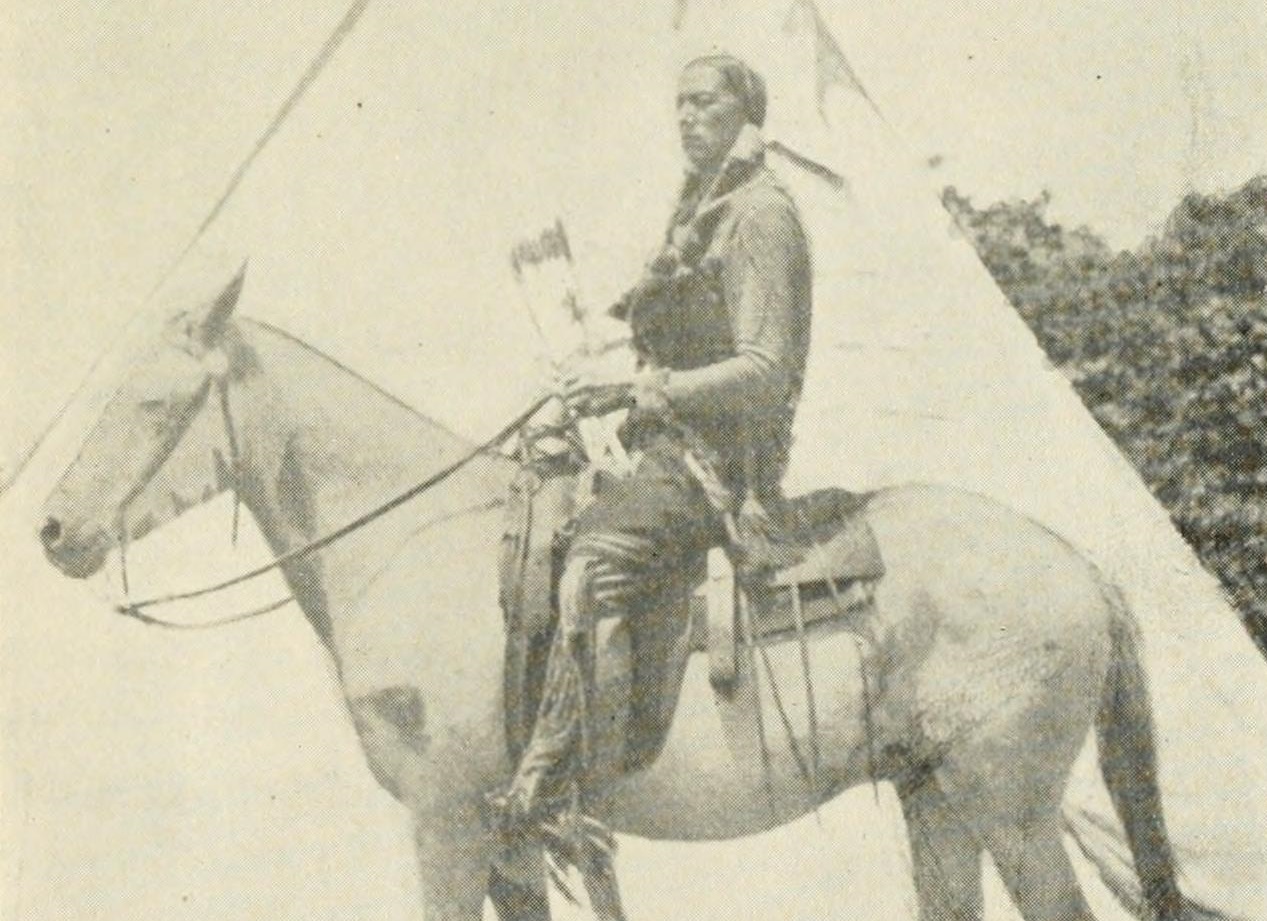 Internet Archive Book Images, Wikimedia Commons
Internet Archive Book Images, Wikimedia Commons
Starvation
With the people of Bosque Redondo starving, raiding neighboring villages for food and water was their only way to survive.
Purchasing of supplies for the reservation was not properly managed, and they ended up with nearly nothing.
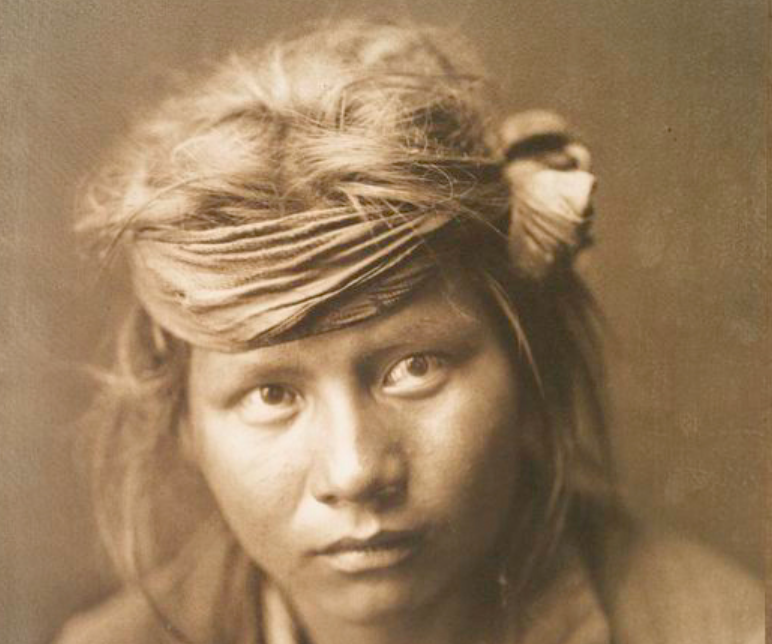 Curtis, Edward S., CC BY-SA 4.0, Wikimedia Commons
Curtis, Edward S., CC BY-SA 4.0, Wikimedia Commons
Abandoning the Reservation
The U.S. army spent as much as $1.5 million a year to feed the people on the reserve, and it was still not enough.
They also did not have enough materials for shelters, causing many people to lose their lives during frigid winter temperatures.
Eventually, the U.S. army recognized their loss.
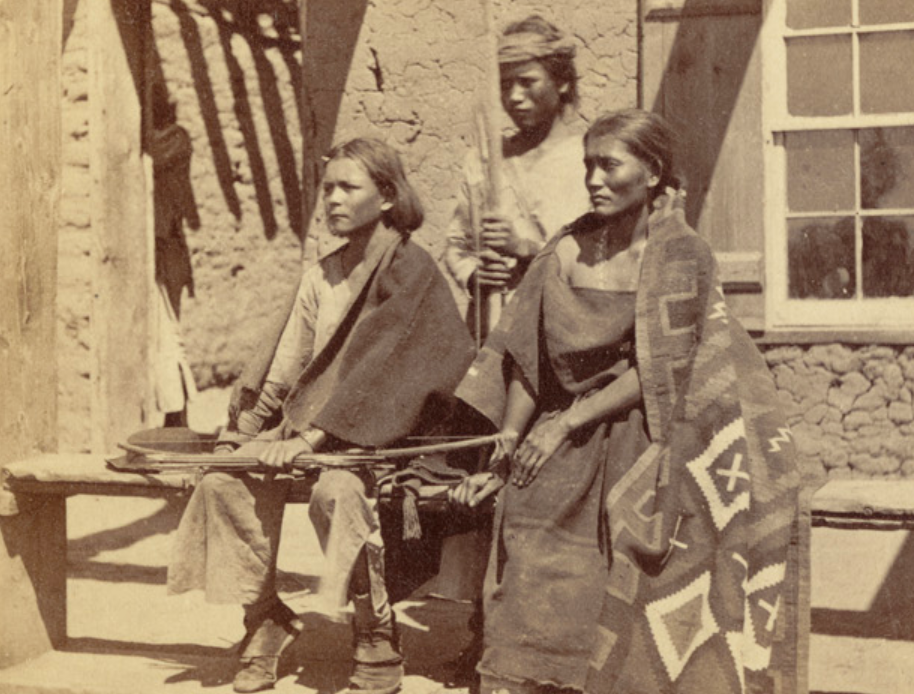 Boston Public Library, CC BY 2.0, Wikimedia Commons
Boston Public Library, CC BY 2.0, Wikimedia Commons
The Rise of the Navajos
So, in 1868, the government declared their “experiment”—meant to be the first Indian reservation west of Indian Territory—over, and the Navajo’s forced confinement had come to an end.
And you can bet they got it in writing.
The Treaty of Bosque Renondo
The Treaty of Bosque Redondo between the United States and many of the Navajo leaders was concluded at Fort Sumner on June 1, 1868.
This treaty included establishing a safe reservation, restrictions on raiding, education for children, compensation, and much more.
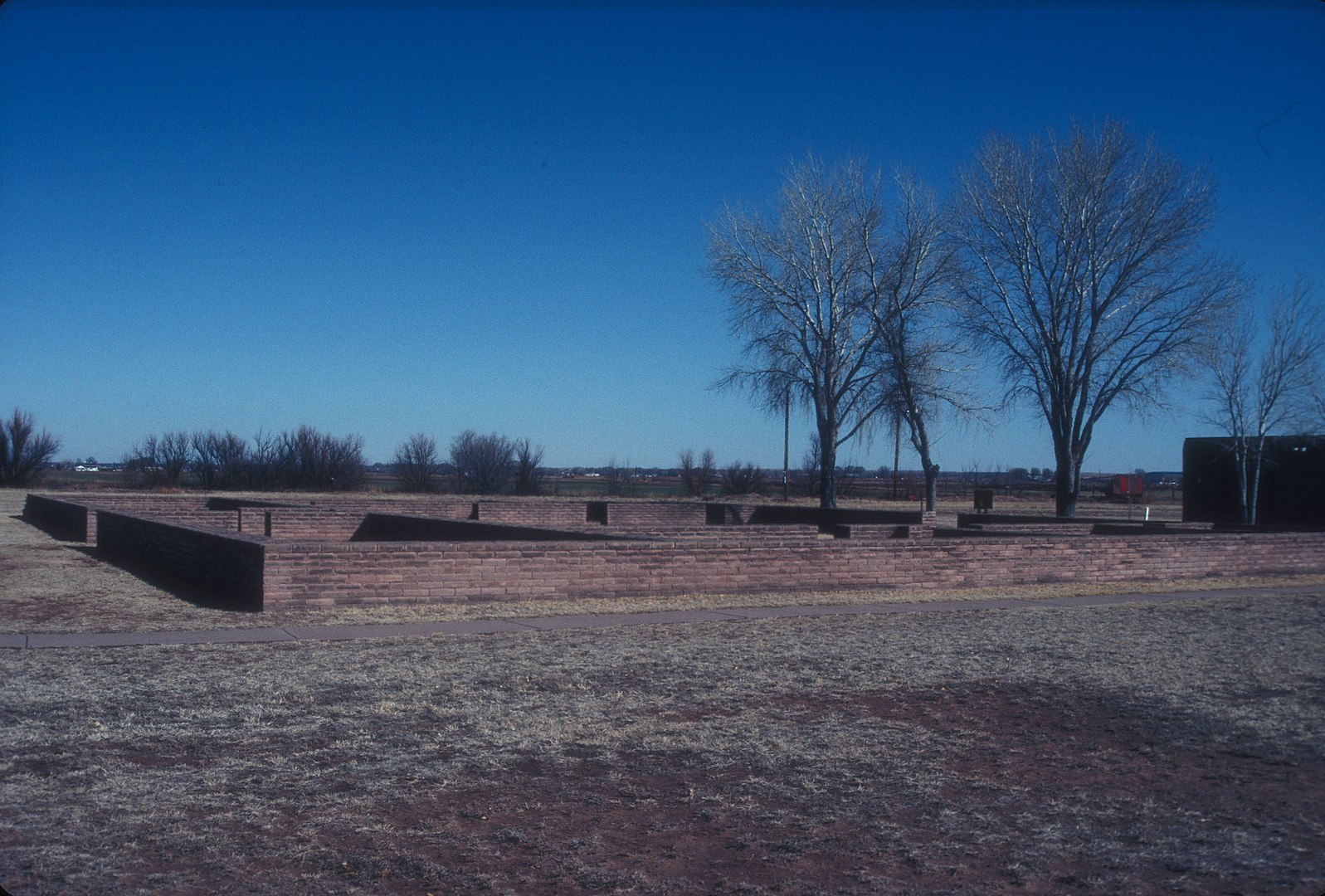 JERRYE & ROY KLOTZ MD, CC BY-SA 3.0, Wikimedia Commons
JERRYE & ROY KLOTZ MD, CC BY-SA 3.0, Wikimedia Commons
A Decade of Promises
The Navajo agreed for ten years to send their children to school and the U.S. government agreed to establish schools with teachers for every thirty Navajo children.
The U.S. government also promised for ten years to give to the Navajos annually: clothing, goods, and other raw materials, not exceeding the value of five dollars per person, that the Navajos could not manufacture for themselves.
The Navajo’s Return
On June 18, 1868, the once-scattered bands of Navajo set off together on the return journey, the "Long Walk" back home.
This is one of the few instances where the U.S. government permitted a tribe to return to their traditional boundaries.
Getting Their Land Back
The Navajo were granted 3.5 million acres (14,000 km2) of land inside their four sacred mountains.
They also became a more cohesive tribe after all that they endured and together were able to successfully increase the size of their reservation since then, to over 16 million acres (70,000 km2).
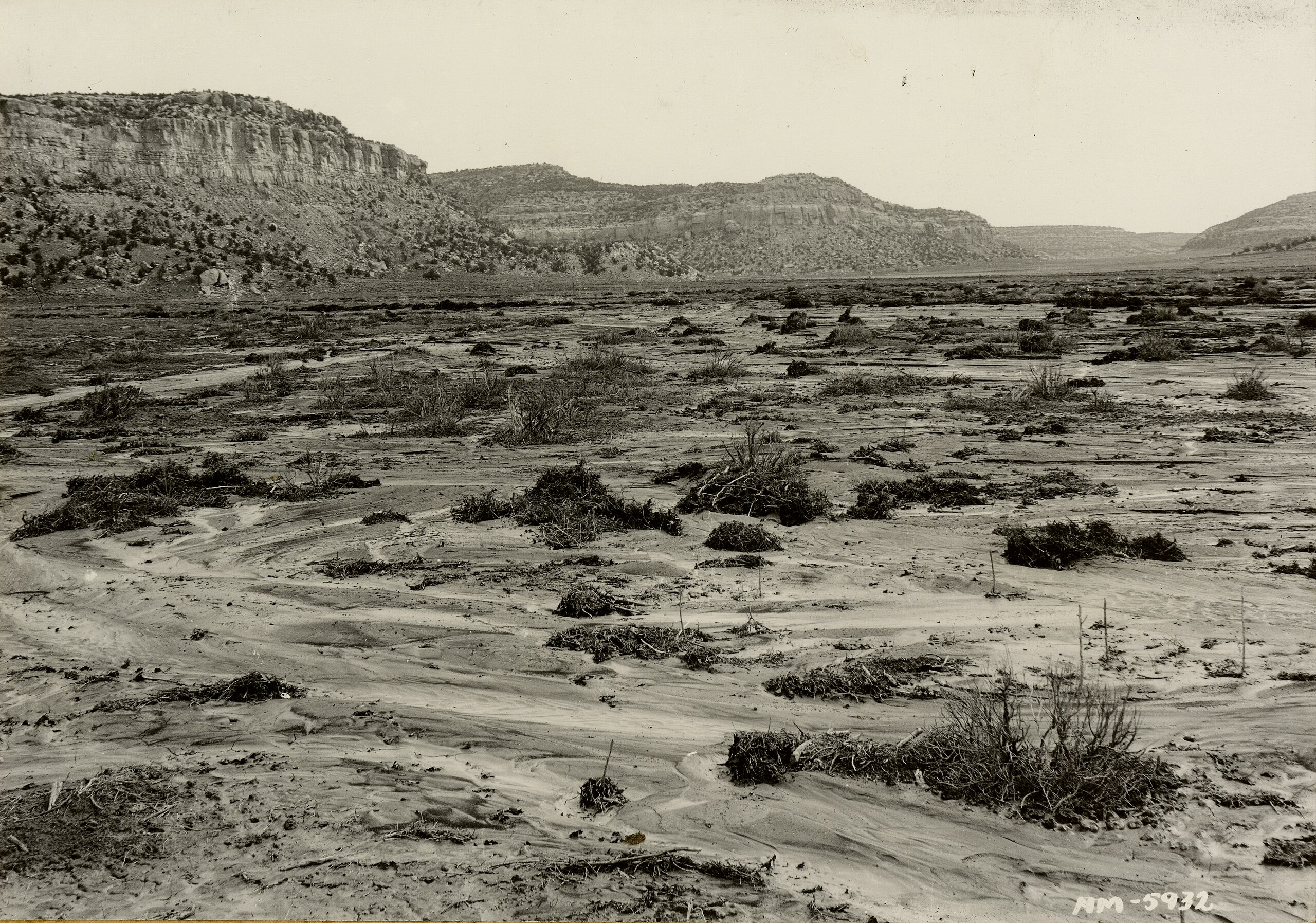 Milton Snow, Wikimedia Commons
Milton Snow, Wikimedia Commons
Continued Military Presence
Although they were back home, the U.S. military continued to maintain forts on the Navajo reservation. However, rather than fight against them, the U.S. government employed Navajos as “Indian Scouts,” to fight on their side.
This led to the creation of the Navajo Tribal Police.
Reestablishing Their Livelihood
The 1868 treaty allowed the Navajo to leave the reservation for trade, which helped the tribe increase their livestock and crops. After successfully establishing their livelihood once again, their population grew, which resulted in an increase in land for their reservation.
However, as always, conflict was never far away.
Economic Conflicts
Economic conflicts continued for many years as civilians and companies exploited resources assigned to the Navajo.
The U.S. government made the Navajo pay to lease their livestock fields, took land for railroad development, and allowed unlawful mining on Navajo land without consulting the tribe.
That’s not even the worst of it.
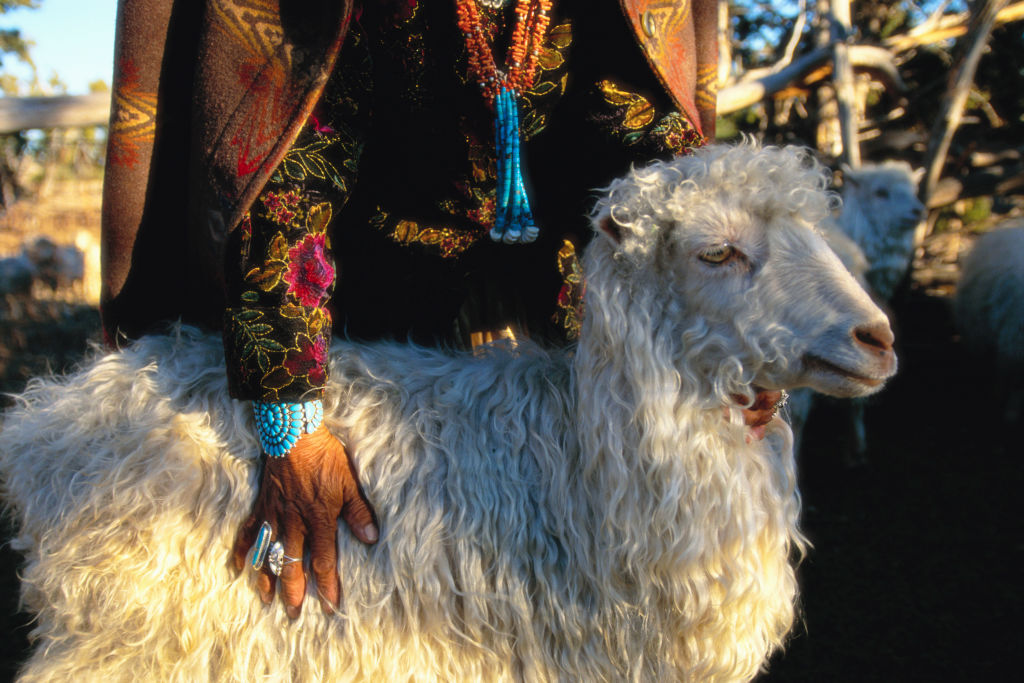 Catherine Karnow, Getty Images
Catherine Karnow, Getty Images
Assimilating into White Society
Another struggle for the Navajo people involved their forced inclusion into white society.
While they may have been allowed back to their homelands, they agreed to government funded schooling for their children—which involved boarding schools.
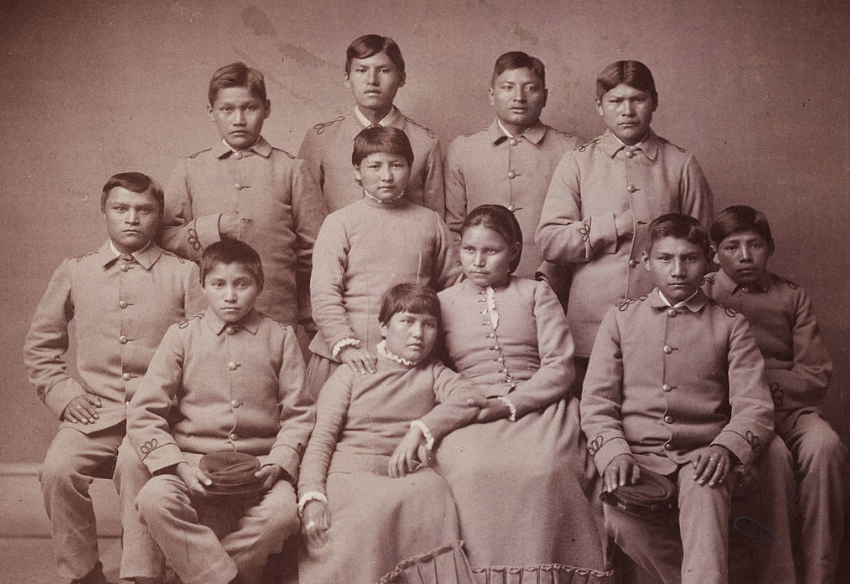 Unknown Author, Wikimedia Commons
Unknown Author, Wikimedia Commons
Boarding Schools
Navajo children were sent to strict boarding schools both within the reservation and off the reservation.
The children were forced to speak English only, and were punished if they didn’t comply.
Horrific Conditions
In addition to not having enough the eat, the children in these schools were under militaristic discipline and were forced to provide physical labor in kitchens, fields, and boiler rooms.
They were also forced to wear uniforms and cut their hair.
 Unknown Author, Wikimedia Commons
Unknown Author, Wikimedia Commons
Hiding Again
Many older Navajos were against this education and would hide their children to keep them from being taken.
Children who were forcibly taken attempted to run away and many ended up severely mistreated as a result.
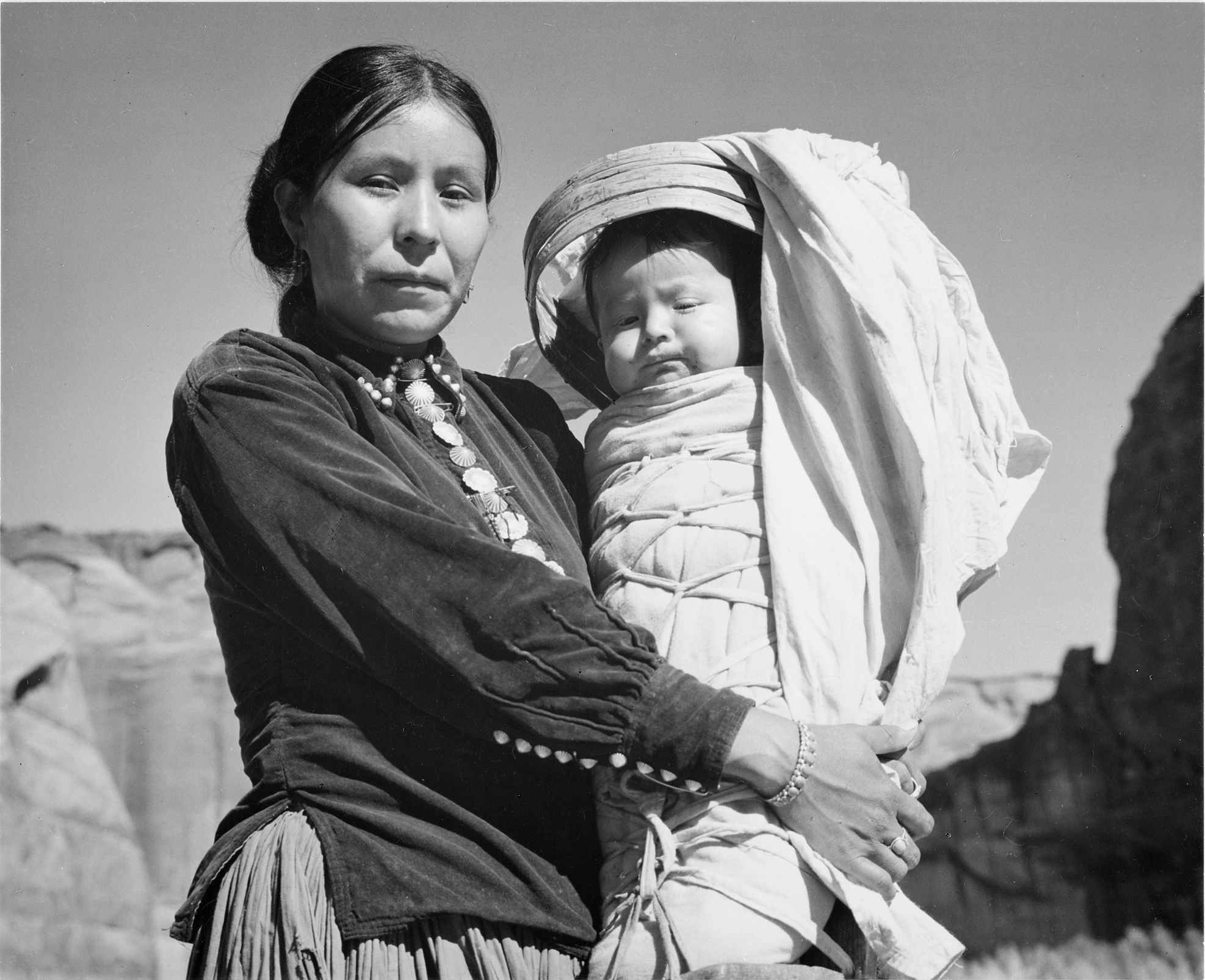 Ansel Adams, Wikimedia Commons
Ansel Adams, Wikimedia Commons
A New School
After new control took over in 1929, these boarding schools were subjected to review and most were shut down with new schools created in their place, including the Evangelical Missionary School which had a family-like atmosphere, home cooked meals, adequate clothing, human treatment, and a Navajo-based curriculum.
Losing Their Language
While these schools were more welcomed by the tribe, they still experienced a significant language loss as a result. English continued to be the primary language spoken at these schools, but the Navajo language was prioritized at home.
Imminent Modernization
Over the next several years the Navajo were subjected to various other challenges, including a livestock reduction and further conflicts among non-Navajo neighbors.
As the older population dwindled, the younger Navajos began leaving the reservation in search of factory jobs, and one other service that was said to keep with their warrior culture.
A New World for the Navajos
Many Navajo men volunteered for military service. And, gaining firsthand experience with how they could assimilate into the modern world, many did not return to the overcrowded reservation, which had few jobs for them.
In fact, they found a way to become useful in their new role.
Code Talkers
Four hundred Navajo code talkers played a famous role during World War II by relaying radio messages using their own language. The Japanese were unable to understand or decode it.
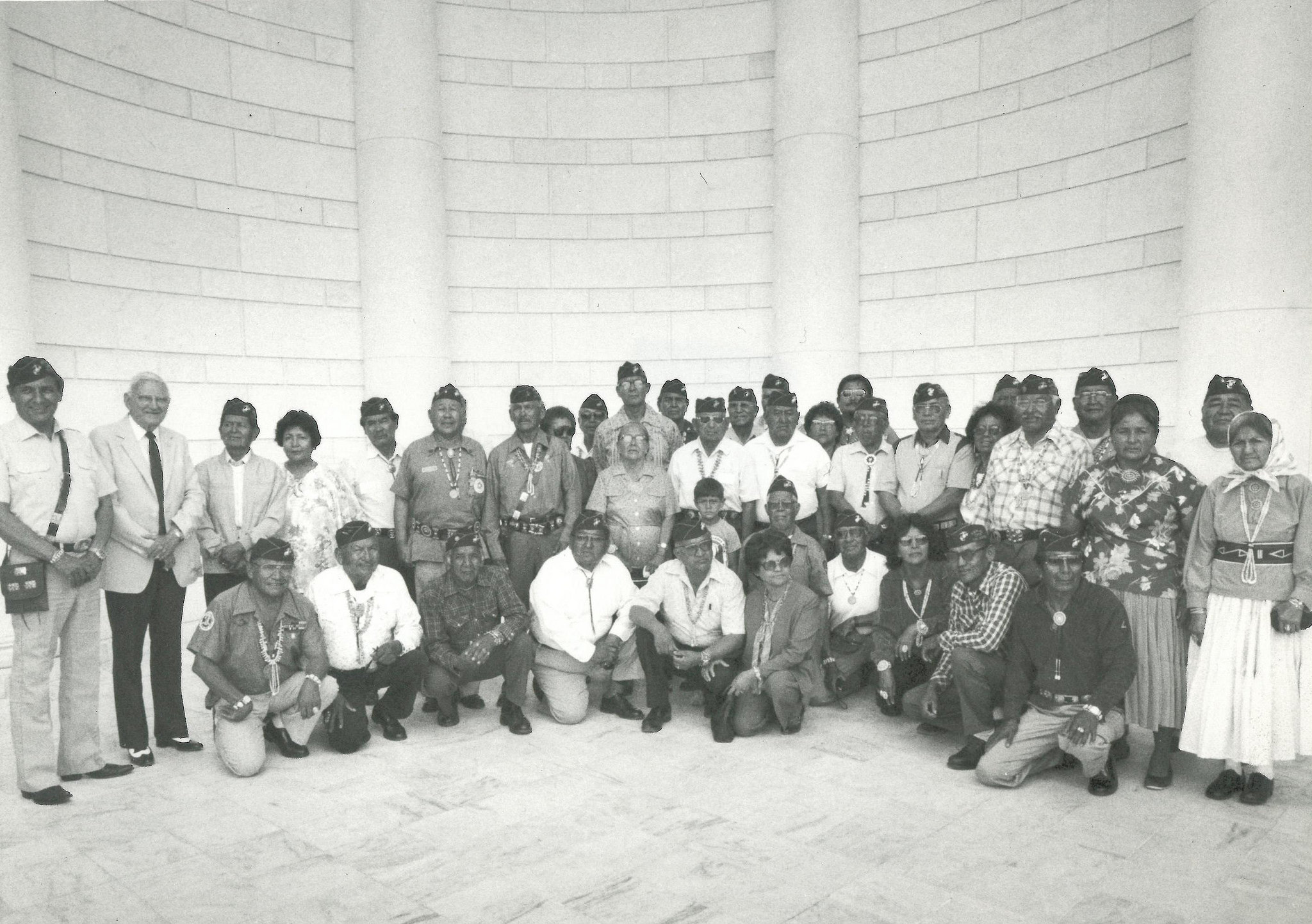 Arlington National Cemetery, Flickr
Arlington National Cemetery, Flickr
An Integral Role
The Navajo Code Talkers played a significant role in USMC history. Using their own language they utilized a military code; for example, the Navajo word "turtle" represented a tank.
They were able to translate their code faster than any other cryptographic facility—making them incredibly important and ultimately creating the USMC Code Talker Program.
Program Success
Numerous Navajo people entered the program, becoming code talkers. And there was never a crack in the Navajo language, it was never deciphered.
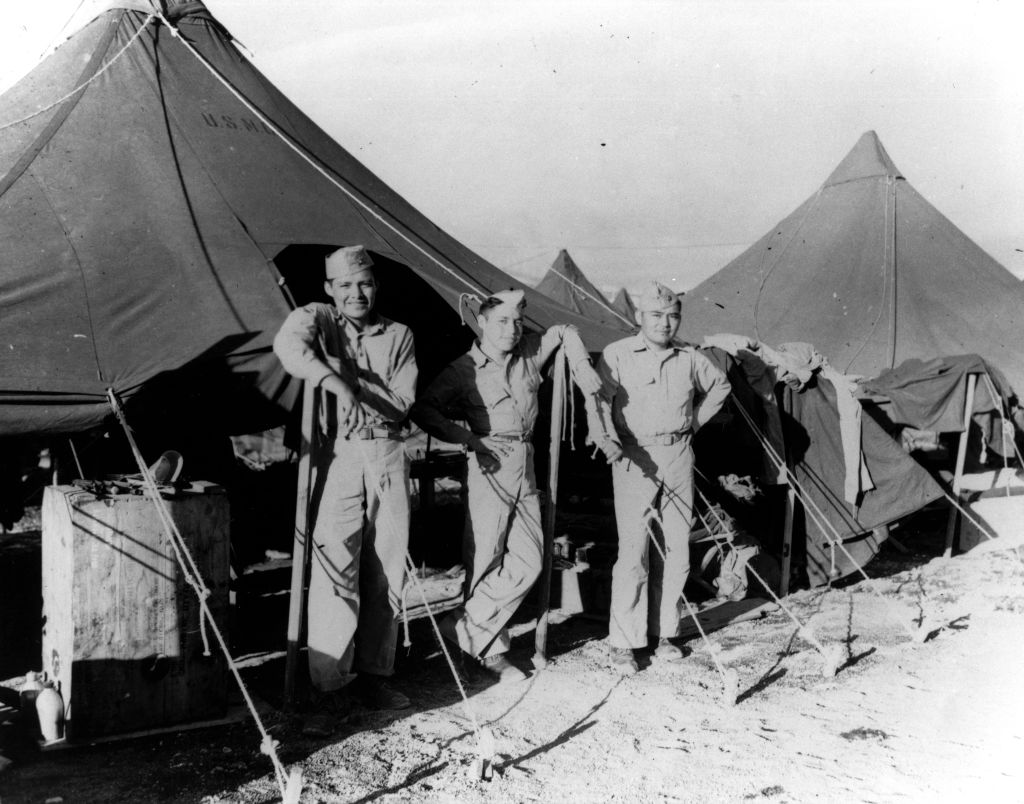 Interim Archives, Getty Images
Interim Archives, Getty Images
An Honorable Achievement
These achievements of the Navajo Code Talkers have resulted in an honorable chapter in USMC history.
Their patriotism and honor inevitably earned them the respect of all Americans.
We Will Not Forget
While the Navajo have undoubtably made a comeback, their four-year captivity has left a legacy of bitterness and distrust has that has still not entirely disappeared.
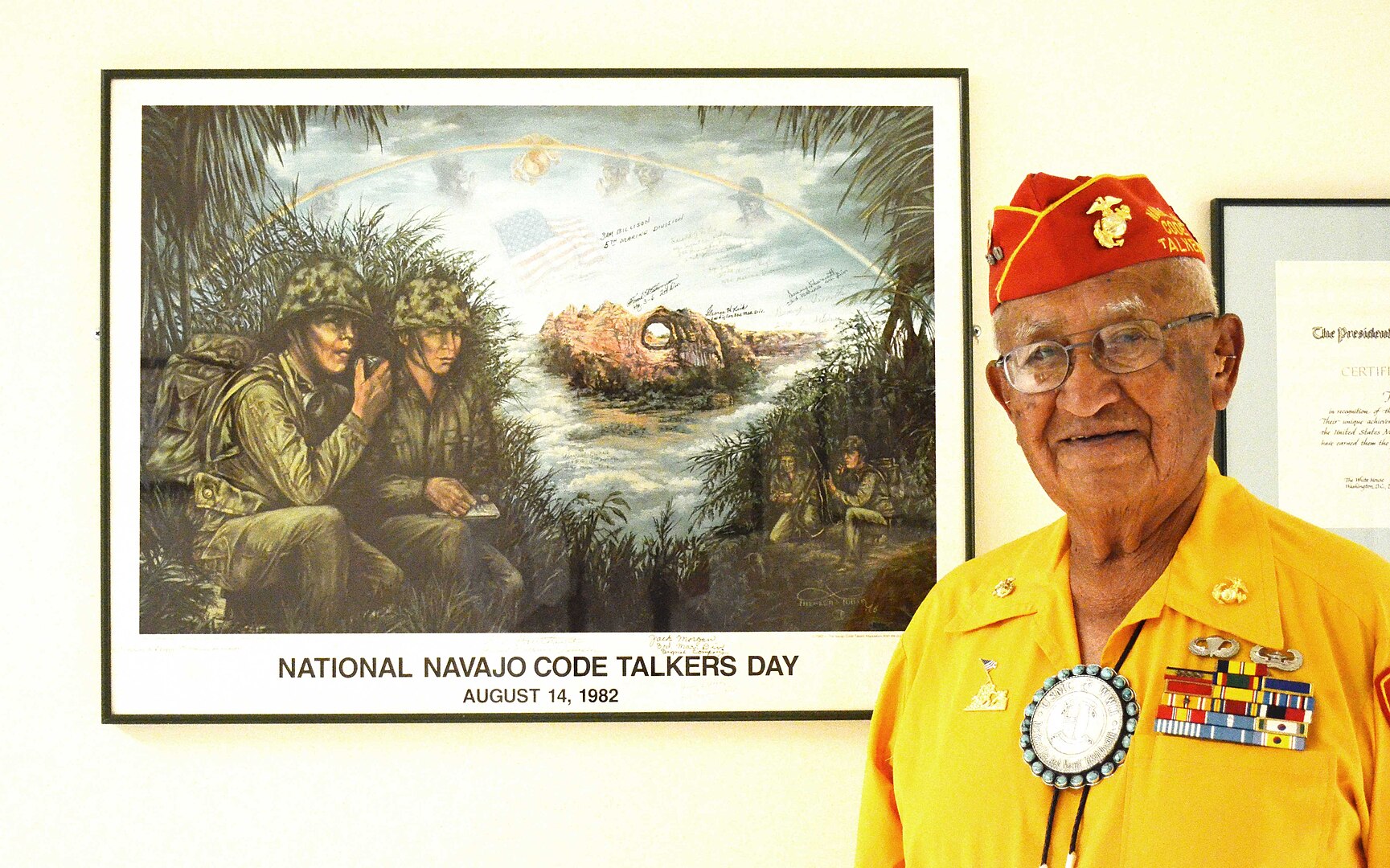 United States Department of Veterans Affairs, Wikimedia Commons
United States Department of Veterans Affairs, Wikimedia Commons
21st Century Navajo Lifestyle
Many Navajo today continue to live a predominately traditional lifestyle, speaking the Navajo language, practicing their spiritual religion, and organizing traditional forms of social structure.
Navajo Land
As well, many Navajo continue to live on their reservations, as well as irrigated lands along the lower Colorado River. Many earn a living away from the Navajo country, but remain closely connected to their tribe.
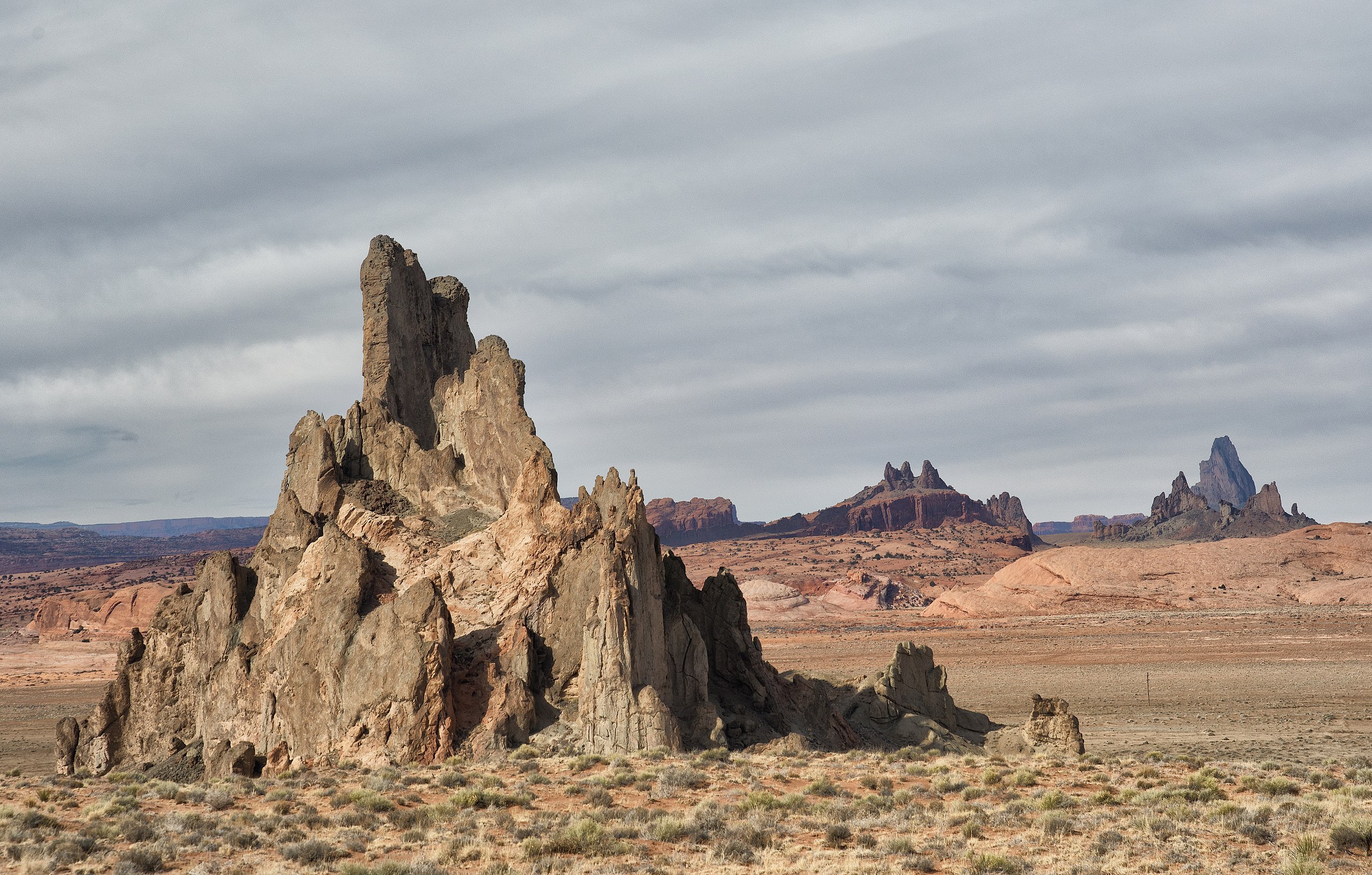 John Fowler, CC BY 2.0, Wikimedia Commons
John Fowler, CC BY 2.0, Wikimedia Commons
An Important Part in American History
The Navajo’s persistence and loyalty to protecting their heritage have earned them the title of cultural innovators, with their Navajo code talkers giving them a spot in American history books.
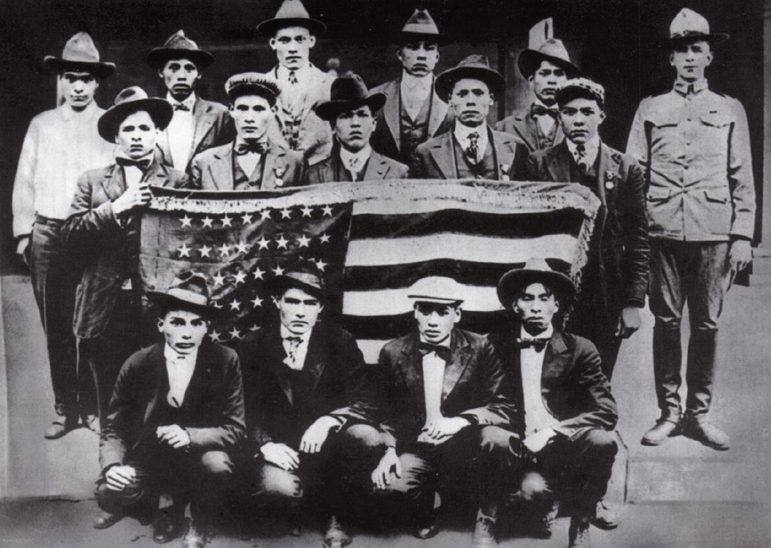 Unknown Author, Wikimedia Commons
Unknown Author, Wikimedia Commons
Final Thoughts
While the Navajo people have come a long way over the years, they may always find themselves in a battle for justice and preservation of their heritage.


